

Italia. Open to meraviglia.

Lakes, mountains, castles and apples along the Val di Non
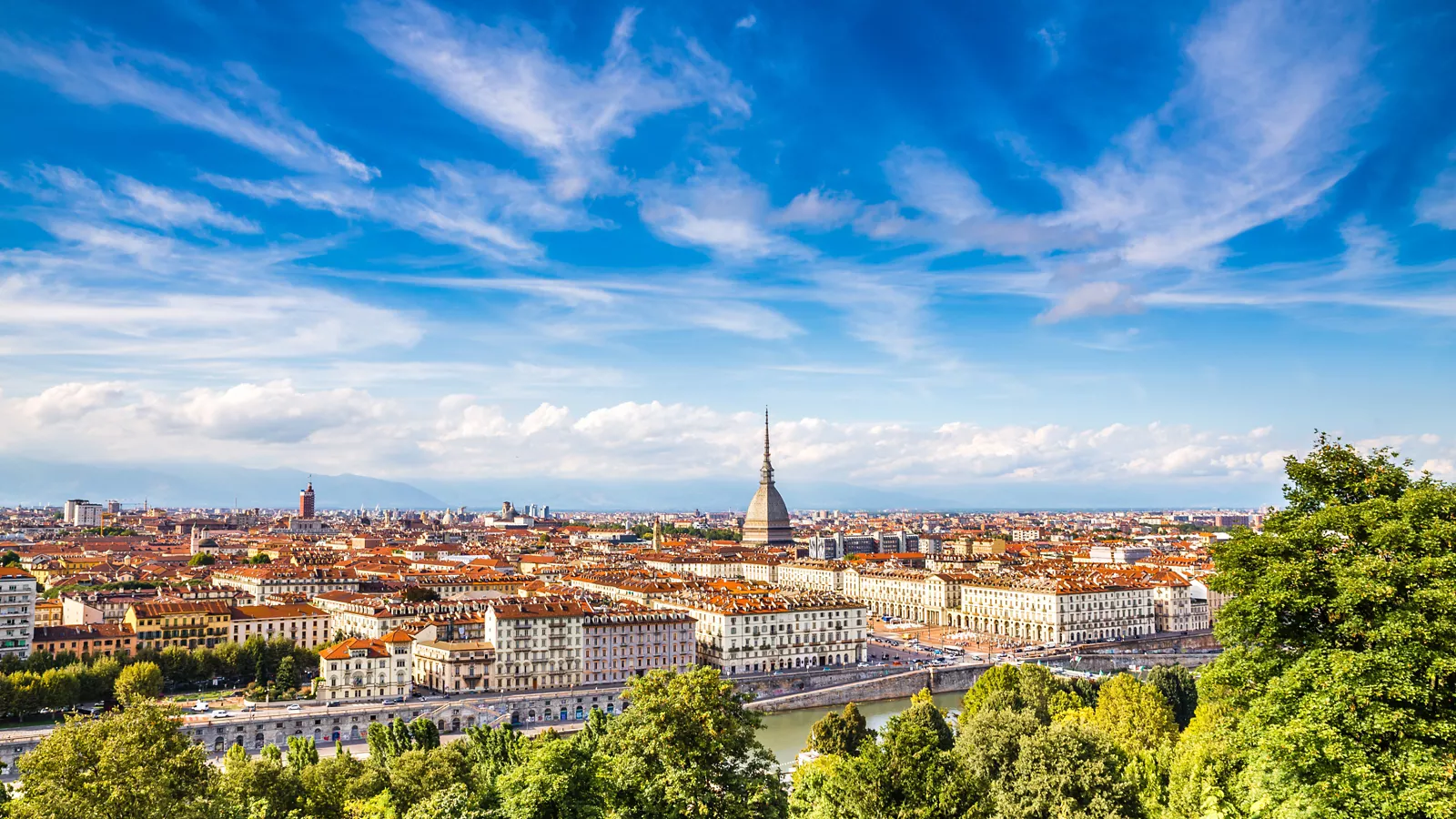
GIRO D’ITALIA 2024
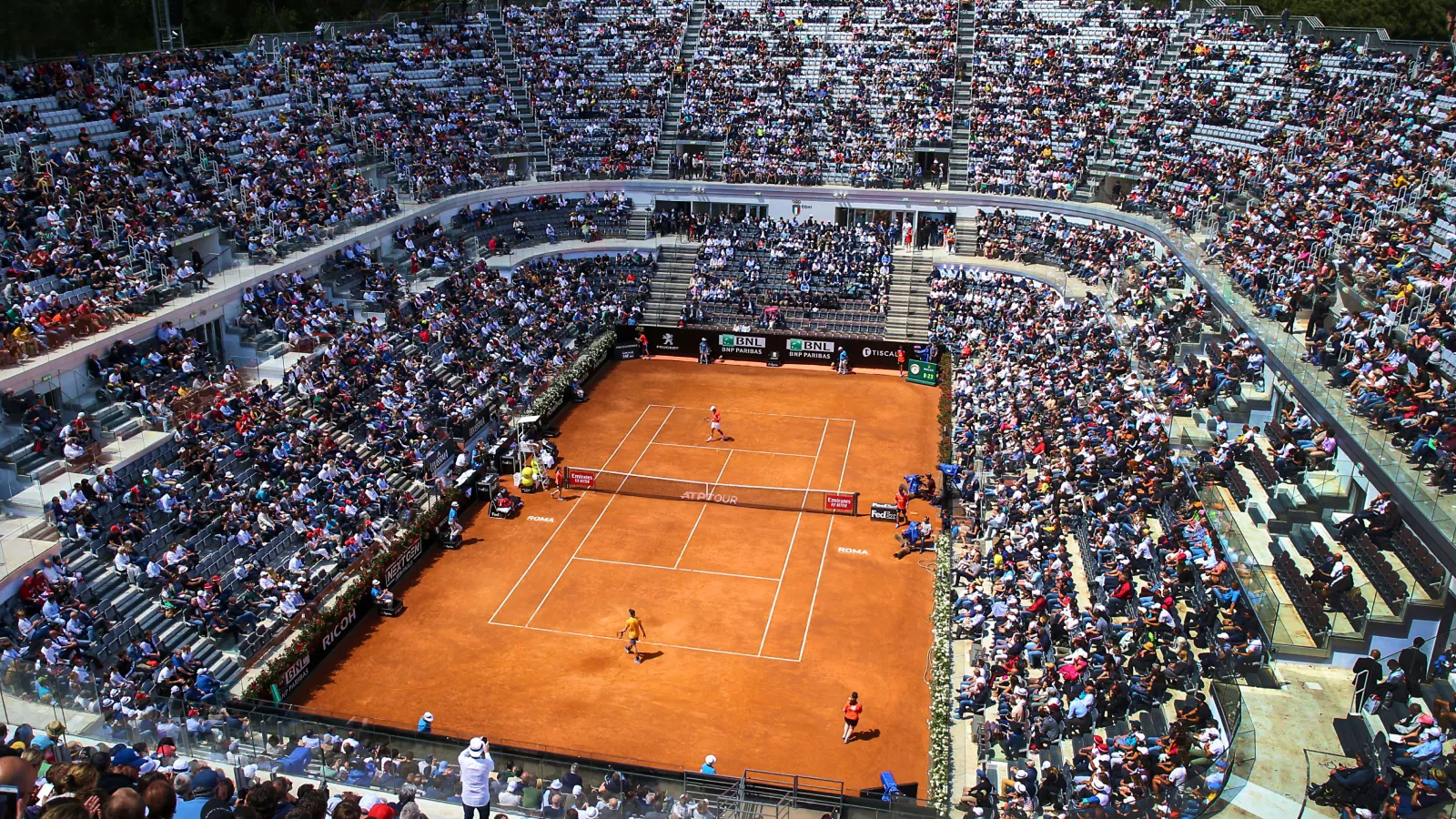
Internazionali Tennis di Roma, much more than a tournament
Landscapes that will take your breath away, rich history, and delicious food, your trip to italy will be nothing short of unforgettable. , unmissable sites.
- UNESCO sites
Food and wine
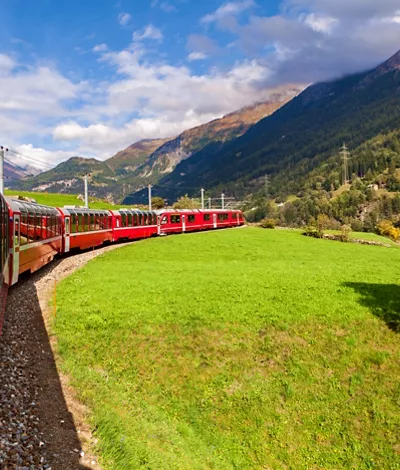
Rhaetian Railway, the engineering masterpiece crossing part of the Alps
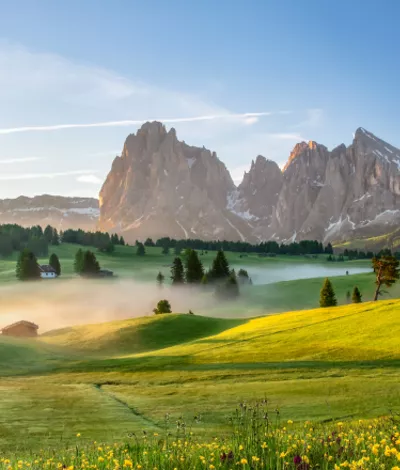
Viaggio Italiano
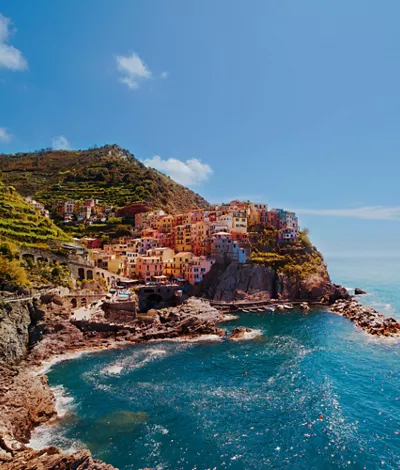
Cycling the Via delle Cinque Terre is an unforgettable adventure

Campania: postcard-perfect sea and dizzying flavours
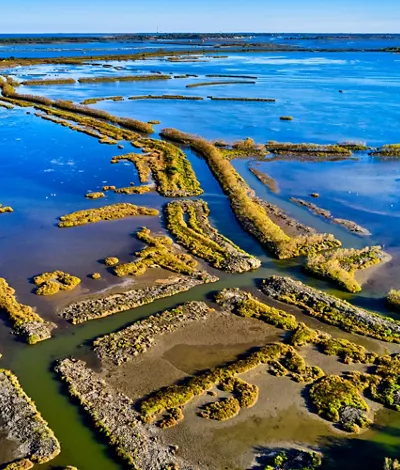
Po Delta, a birdwatching paradise

Sport in the city, the best activities to book last minute
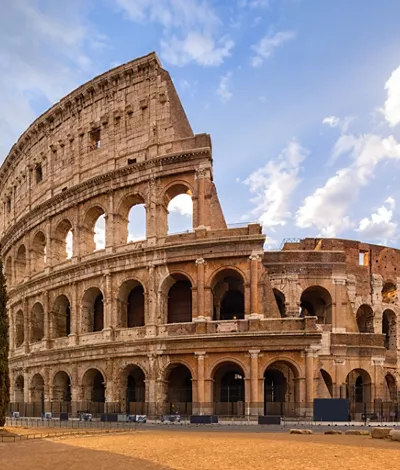
The best trails in UNESCO heritage sites in Italy: 10,000 steps amid nature and beauty
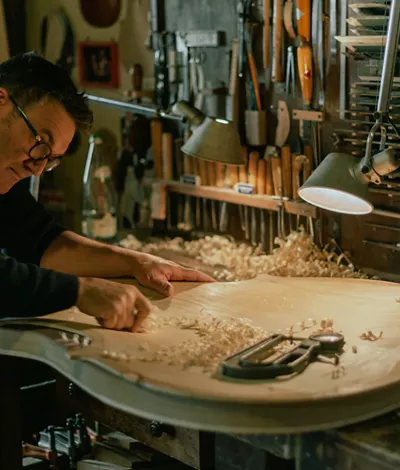
The 15 Italian UNESCO Intangible Cultural Heritage excellences
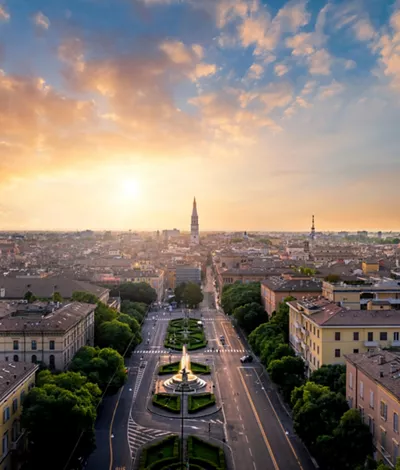
Artistic masterpieces and gastronomic marvels in Modena
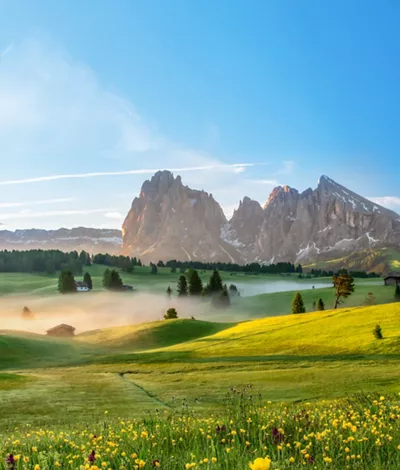
The Dolomites: the most beautiful architectural work in the world
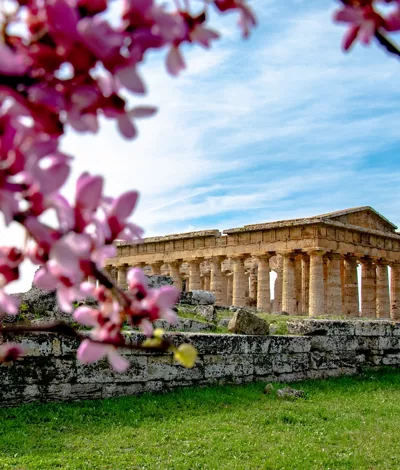
Cilento, between unspoilt beaches, wild nature and charming hamlets
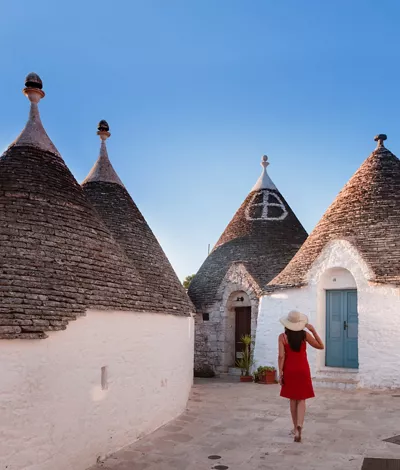
Alberobello, the Trulli capital, a fairy tale experience
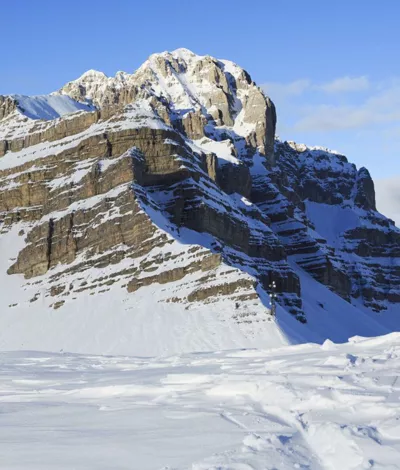
Emilia-Romagna
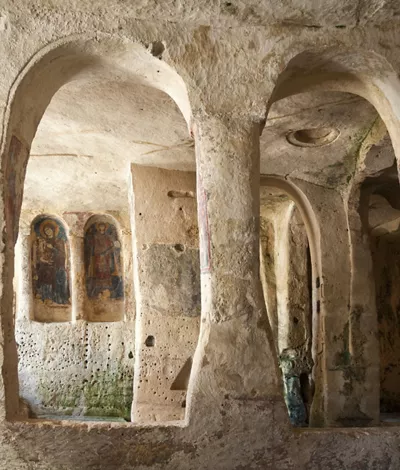
Small and proud, with a focus on sustainability. Here are the most charming rural villages to visit in Italy

Cycling around nature and historic hamlets in Abruzzo
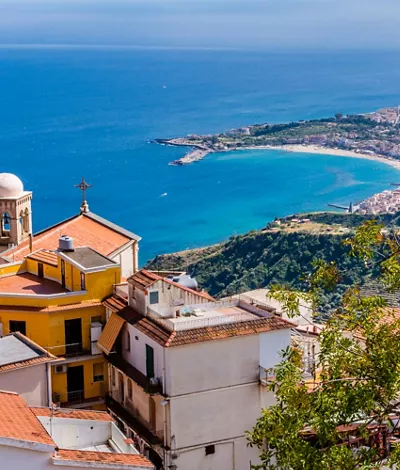
Tax breaks for moving to the charming villages of central and southern Italy
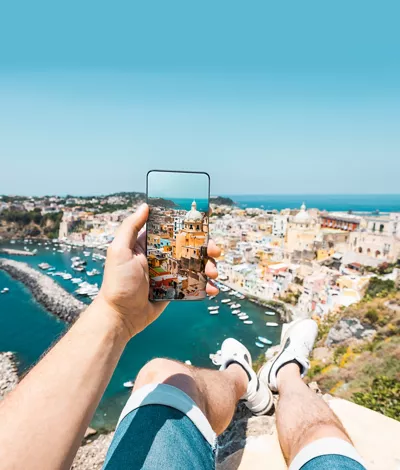
Seaside Villages
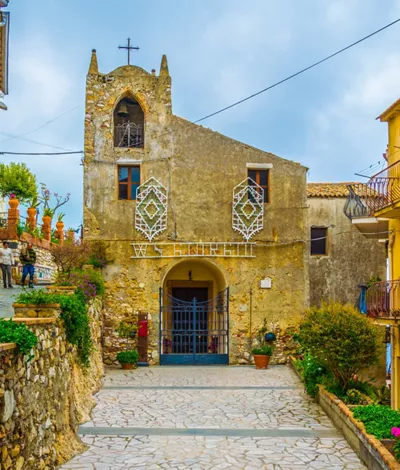
Castelmola, a window on the sea a few steps from Taormina
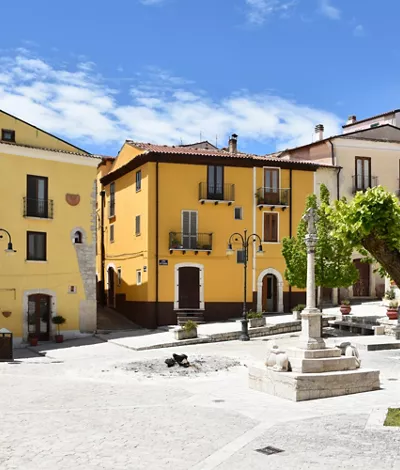
Frosolone: one of the most beautiful Italian villages, in Molise
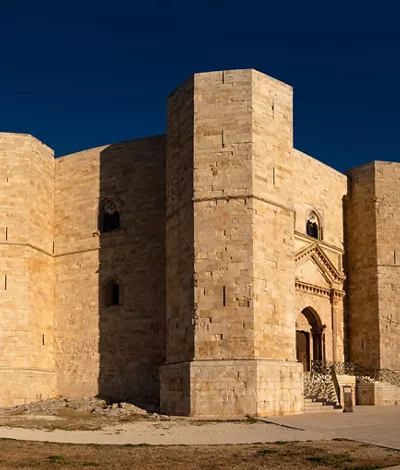
Castel del Monte: the fortress of mysteries in Andria
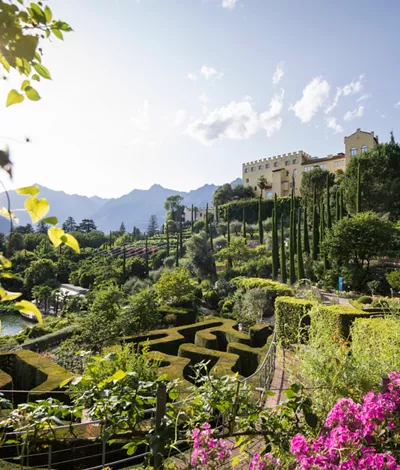
In the beautiful Gardens of Trauttmansdorff Castle in South Tyrol
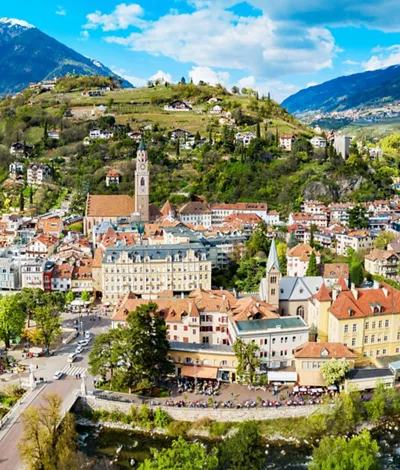
Alto Adige: Merano amid castles, Art Nouveau buildings and spas
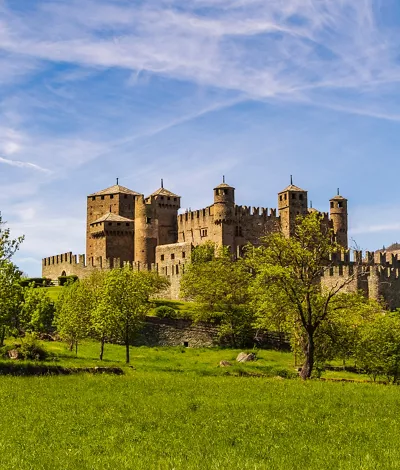
The Aosta Valley and Its Castles
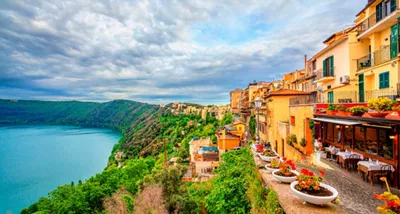
Castelli Romani Regional Park
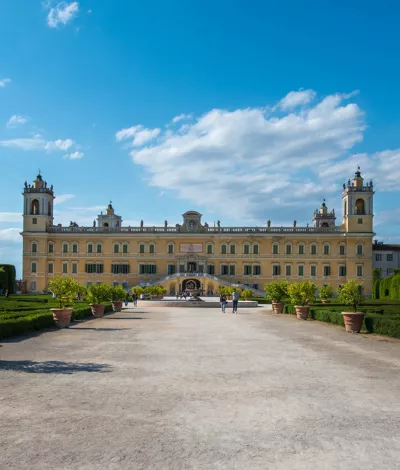
Castles of the Duchy of the Piacenza and Parma area

Restourants
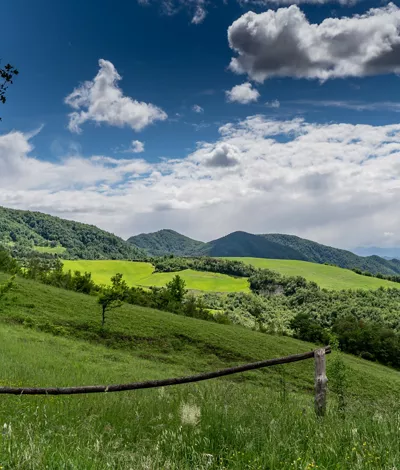
Emilia-Romagna: a journey into the heart of the Food Valley

Pesto Genovese

In Palermo, his majesty the bread with spleen

Lazio and the majestic Roman artichoke PGI
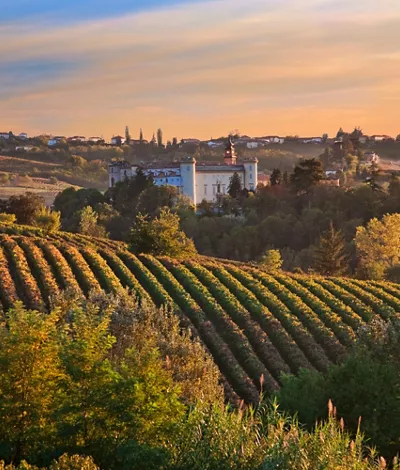
Piedmont, an extraordinary laboratory of products, all to be tasted, and to be drunk.
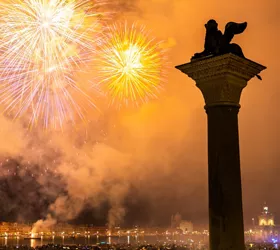
Festa del Redentore a Venezia 2024
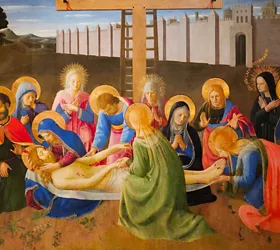
Pre-Raphaelites: Modern Renaissance

Best Wine Stars 2024
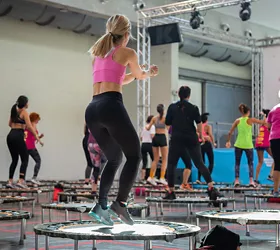
Rimini Wellness 2024

Van Gogh in Trieste

2024 MONZA FORMULA 1 GRAND PRIX
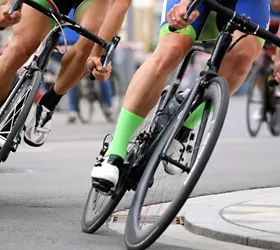
Giro d’Italia 2024

Arezzo Antiques Fair

Catania Book Festival
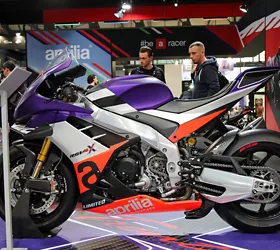
Turin International Book Fair
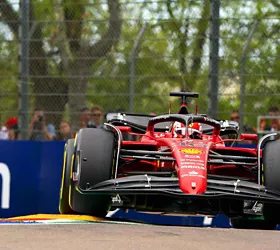
Made in Italy and Emilia Romagna Formula 1 Grand Prix
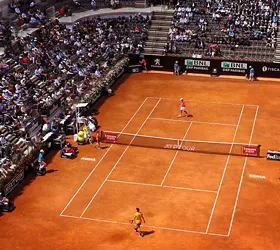
ITALIAN OPEN BNL

FIM Superbike World Championship
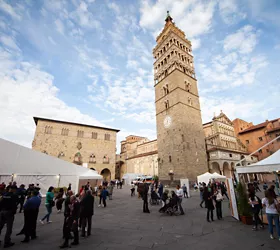
The Pistoia Dialogues

Amber Wine Festival

Vitigno Italia

Vigneti aperti 2024
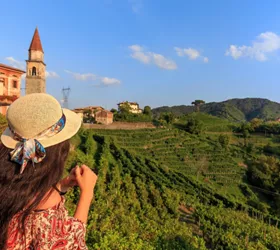
Primavera del Conegliano Valdobbiadene Prosecco DOCG
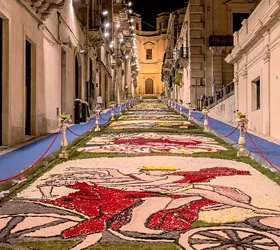
Infiorata di Noto
Discover italy.

Aosta Valley
The Aosta Valley is a paradise for visitors seeking outdoor experiences in nature while exploring history and traditions The smallest region in Italy, dotted with the highest peaks in the Alps, it is the ideal destination for anyone who enjoys winter sports and high-altitude walks. Its green valleys and fairy-tale castles make the Aosta Valley an enchanting place to experience all year round.

Piedmont is sure to enchant you with its mountains, hills, typical flavours and uniquely elegant cities An extraordinary heritage of art and history, culture and nature, characterises Piedmont, a region with a thousand faces, one more interesting than the other: cities of rare elegance, mountains that lend themselves to splendid skiing or walking, fascinating villages, hills that are among the best known in the world for their extraordinary wine production.

Lombardy: a dynamic land immersed in the present and reaching toward the future, but with an extraordinary heritage of art and nature Lombardy is a region in the north of Italy known for its industry and finance, of course, but also for its art and extraordinary landscapes, starting with the picturesque lakes and its mountains, Valcamonica and Valtellina in primis. Capital and symbolic city, Milan represents the industrious heart that goes hand in hand with other cities with a vibrant spirit.

Trentino is sure to amaze you with its immense natural heritage, the spectacular splendour of the Dolomites and fascinating sites steeped in history Discover Trentino’s culture of slow travel, taking the time to savour every corner among nature and cultural trails and educational farms. You will find hundreds of hotels offering wellness centres for truly relaxing holidays for the whole family in some of Italy's most beautiful villages, set in unique landscapes.

South Tyrol
Alto Adige is a dream place to discover all year round amidst green valleys and snow-capped peaks Combine the relaxation of spa treatments with the pleasure of fun in the snow for a real wellness boost amidst Alpine lakes, beautiful villages and state-of-the-art ski facilities suitable for all ages. All this and more in the majestic scenery of the Dolomites, a UNESCO World Heritage site in Alto Adige.

Veneto, a region of wonder, with cities of art of undisputed beauty, as well as the most pristine nature The beauty of Lake Garda, the charm of the Dolomites, the sea of Jesolo, the hills covered with vineyards and the relaxing thermal baths, on top of an immense artistic and historical heritage, elegant cities such as Venice and Verona, quaint villages and breathtaking landscapes. Veneto is all this and much more.

Friuli-Venezia Giulia
Friuli-Venezia Giulia Friuli Venezia Giulia: a treasure chest nestled between sea and mountains A border region sandwiched between the Friulian Dolomites and the Upper Adriatic, blessed with an immense cultural heritage resulting from the influence of different cultures and peoples, cosmopolitan and modern, Friuli Venezia Giulia will also seduce you with its temptations of relaxation, sport and fun.

Tucked-away villages, secret little beaches and superb nature: how enchanting Liguria is! Liguria is a wonderful strip of land enclosed between the sea and the mountains, with pastel-coloured houses and breathtaking views. With lush unspoilt nature, many small towns to discover and an incomparable culinary tradition, it enraptures the eye and the heart.

Emilia Romagna, a region of unrivalled charm, with immense artistic beauty and unparalleled hospitality Emilia Romagna with its Riviera Romagnola offers beach tourism that attracts families and young people to its shores every summer. Rich in sites of historical and cultural interest, this region boasts a world-renowned wine and food tradition. Skilful hospitality does the rest, making Emilia Romagna an ideal holiday destination in every season. Video credits: Oliver Astrologo

Tuscany will win you over with its unique landscapes, cities of art, thousand-year-old history and fantastic food Tuscany’s magical atmosphere evolves day by day as you stroll around the cities of art, cycle in the parks, enjoy the sea or savour its typical products, in a region with a one-of-a-kind natural, cultural and historical heritage that has fascinated visitors for centuries.

From Assisi to Perugia, via Gubbio, Lake Trasimeno and Marmore Falls: Umbria is a truly enchanting tourist destination Peaks covered in lush forests and large valleys outlined by rivers, lakes and waterfalls; sorrounded by villages and castles, crossed by paths steeped in history, art and culture, in a natural environment that helps to restore the body and soul: Umbria, the Green Heart of Italy, is all this and much more.

Le Marche, a plunge into the history, art and architecture of a region with the scent of the sea and redolent of traditions and hospitality A great variety of landscapes and an infinite range of colours that make the area's natural beauty incomparable, plus an artistic heritage that fears no comparison: this is how the Marches, with an area of no more than 10,000 square kilometres, will captivate you forever.

Sardinia: a journey to the island of the emerald sea, nuraghi, unspoilt nature and millenary traditions Crystal-clear waters, beaches of soft, white sand, granite rocks framed by wild, fragrant Mediterranean scrub: welcome to Sardinia, an island of a thousand contrasts that will also seduce you with its unique archaeological heritage and its people's innate sense of hospitality.

Lazio is not only Rome: landscapes and monuments of Lazio Rome, the capital of Italy and a unique open-air museum in the world, is enough to make Lazio one of the most beautiful and interesting regions. Even in terms of landscape, it boasts an area of great impact and remarkable variety, with its long coastline, beautiful hills and Apennine mountains. A destination to fall in love with.

Abruzzo, a journey through history between sea, mountains, flavours and unspoilt nature in parks and protected areas A region in central Italy, Abruzzo has two souls and one heart. Predominantly mountainous and hilly, it overlooks a beautiful stretch of the Adriatic Sea. Here, you will find the highest peaks of the Apennines, such as the Gran Sasso and the Majella massif, as well as the only Apennine glacier, but also some of the most popular beaches.

Campania offers landscapes, history, culture and a gastronomic tradition that the whole world envies A consistently mild climate, lush nature framing breathtaking landscapes, unspoilt villages and fairy-tale coastlines: this is Campania, a region that sums up centuries of cultures, between West and East, in a single Mediterranean jewel known for its unparalleled hospitality. A destination for the soul, the eyes and the palate.

Molise, a tiny region with grandiose landscapes: come and discover its history and culinary tradition Molise is a region steeped in history, characterised by numerous tasty food and wine delicacies, but also by rich nature reserves and villages that seem crystallised in history. A destination yet to be discovered, amid marvellous seashores and breathtaking high cliffs

Apulia: the sunny region between two seas and warm hospitality in places rich in history Located in the heart of the Mediterranean, it is a magical combination of artefacts, history, art and unspoilt nature, amidst beautiful coastlines and picture-postcard landscapes. This is Puglia, a region of golden beaches and crystal-clear waters, intense flavours and fascinating destinations: Castel del Monte, the trulli, the islands passing through towns kissed by a unique and unforgettable light.

Basilicata, a region of ancient origins, suspended between two seas and with mountains of great beauty Basilicata is a region where the passage of man has left its mark since prehistoric times. With the ancient name of “Lucania”, it is enriched by an incredible artistic heritage. Not to mention its never-boring panorama, which ranges from the Lucanian Dolomites to the Pollino Park, passing through two seas.

Calabria is the region of crystal-clear sea, the Riace Bronzes, Reggio Calabria and Capo Vaticano, a captivating mix of history and beauty Calabria, also known as the tip of the Italian boot, is a region in Southern Italy characterised by the incredible diversity of its landscapes, with the proximity of mountains to a splendid sea that attracts tourists from all over the world.

A dive into Sicily, where a sea of art, culture and nature will seduce you and become eternal love A predominantly hilly and mountainous area, but one that wins the hearts of tourists from all over the world with its wonderful sea and rich cities with a charm all their own. Sicily is a picture-postcard island characterised by the indelible marks of the people who have lived there and made it unique, amidst artistic and cultural testimonies of enormous value.
The source of inspiration for your Italian adventures
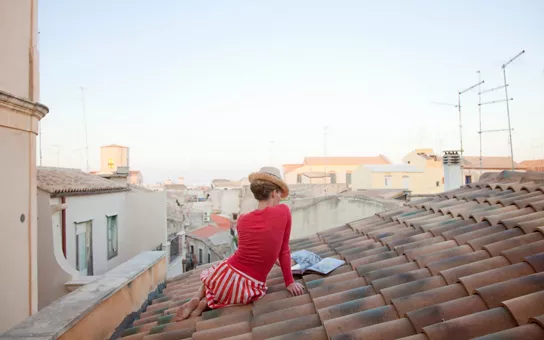
6 unmissable destinations in Italy featured in famous novels

Backpack, trolley suitcase or holdall: how to pack the perfect bag and make sure it’s green
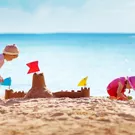
At the seaside with kids: 15 beaches for families in Italy
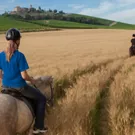
Horse-riding and team building immersed in nature; networking and re-grouping just a stone's throw from the city
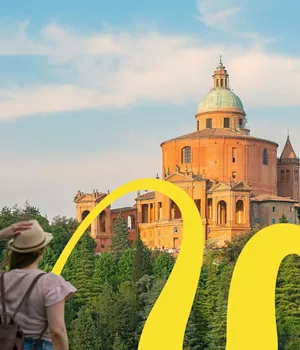
Rediscover your Italian roots

Italian cuisine around the world: a treasure that knows no boundaries
Create your ideal journey.
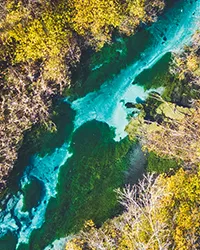
Art and culture

Relax and wellness
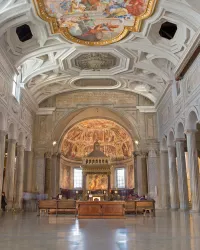
Spirituality

Shopping & Markets
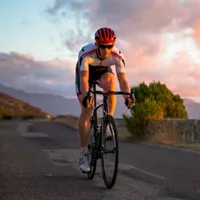
Cycling Tourism
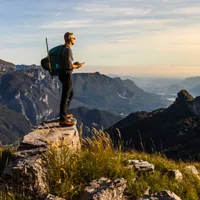
Social Wall
Italy seen by you.
Join the @italiait community and post your experiences

Continue living like an Italian
Subscribe to the Newsletter so as not to miss places, events and experiences for experiencing the best side of Italy: the authentic one.
Keep up to date
Would you like to learn about the most authentic experiences to be had in Italy, stay up to date on the most interesting events, discover our special offers and receive lots of insider hints and tips?
Save your favorite places
Create an account or log in to save your wishlist
Do you already have an account? Sign in
Italy Travel Guide
Book your individual trip , stress-free with local travel experts
- roughguides.com
- Travel guide
- Itineraries
- Local Experts
- Travel Advice
- Accommodation
Plan your tailor-made trip with a local expert
Book securely with money-back guarantee
Travel stress-free with local assistance and 24/7 support
Carlo DeSando
Wonderful Time in Italy We were covered from the moment we landed in Rome. The drivers were great, the connections were flawless, and it was well-planned a...
Chances are, once you’ve experienced the joys of travelling in Italy, you might never want to visit anywhere else. Its cultural legacy is awe-inspiring, with remnants of the Roman Empire manifest at (pretty much) every turn. Then there’s the diverse landscapes, and the fabulous food - all underpinned by an unmistakeable character of living life to the full.
Travel Facts about Italy
Where to go in italy - regions and areas, top attractions - what to see in italy, best things to do in italy, when is the best time to visit italy.
- How to get to Italy
How to get around Italy
Where to stay in italy, food in italy you need to try, culture and festivals in italy, nightlife in italy, plan your trip to italy, things you need to know before going to italy, typical cost and money saving tips for italy, what to pack for a trip to italy, is italy safe for travel, what you should avoid in italy, useful resources for your travel to italy, tailor-made travel itineraries for italy, created by local experts.

8 days / from 2646 USD
Experience the hit TV show 'The White Lotus' in Sicily
Stay in beautiful Taormina with gorgeous views of Mount Etna and discover Sicily, including famous filming locations. Go on exclusive wine tastings, discover the Greek theater in Taormina with a private guide, visit other Sicilian towns and enjoy the crystal clear water on this week-long trip.

8 days / from 3289 USD
Enchanting Italian Lakes
Experience the picturesque lakes of Northern Italy, including Lake Garda, Como, Lugano and Maggiore; explore the charming Borromean Islands – former favourites of Ernest Hemingway – and stroll the romantic streets of Verona and Milan. All of this, and much more, with this self-drive trip!

16 days / from 3289 USD
From Venice to Florence: A Grand Tour of Northern Italy
From the atmospheric canals of Venice and the picturesque coastline of Cinque Terre, to the trendy designer boutiques of Milan and the Renaissance-infused streets of Florence, Northern Italy has plenty to offer. Experience it all with this comprehensive trip.
All the information here is from The Rough Guide to Italy , our in-depth Italy travel guide - check it out for your all your Italy travel needs.
- Language: Italian, with a whopping 34 dialects.
- Population: just under 60 million, with around three million residing in Rome, the capital.
- Politics: Italy has been a democratic republic since 1946, when the monarchy was abolished by popular referendum.
- Heritage: Italy is home to a staggering 55 UNESCO World Heritage sites, 50 cultural and five natural. Tuscany alone has more classified historical monuments than any other country in the world.
- Food and drink: the average Italian eats 23 kilos of pasta annually, and the nation drinks an astounding 14 billion cups of coffee every year.
For more Italy travel tips, read our facts about travelling in Italy article .
Every trip to Italy is unique and that's why it's essential to stay protected. With our go-to travel insurance provider, Heymondo , you get great value and 24/7 support wherever you are.
Figuring out where to go when you visit Italy is no mean feat. From ancient hilltop towns to modern bustling cities, dramatic mountain landscapes to sweeping coastal scenery, each pocket of Italy delivers something different.

Rome , Italy’s capital, is the one city in the country that owes allegiance neither to the north or the south. It’s quite unlike any other city, and in terms of historic sights it outstrips everywhere else by some way.

Rome from above aerial view of the Roman Forum and the Colosseum © Calin Stan/Shutterstock
Piemonte and Lombardy
The northwest regions of Piemonte and Lombardy make up the country’s most cosmopolitan region, and the two main centres, Turin and Milan , are its wealthiest cities. In the north, the presence of the Alps makes skiing and hiking prime activities, while Lombardy’s lakes and mountains are time-honoured tourist territory.
Liguria , the small coastal province to the south, has long been known as the “Italian Riviera” and is accordingly crowded with sun-seekers for much of the summer. Its capital, Genoa , is a vibrant port town with a long seafaring tradition.
The Veneto and Friuli Giulia
The Dolomites stretch into the northeastern regions of the Veneto and Friuli-Venezia Giulia , but the main focus here is Venice . This unique city is every bit as beautiful as its reputation suggests.
Emilia-Romagna
Emilia-Romagna ’s coast is popular among Italians, and Rimini is Italy’s brashest (and trendiest) seaside resort. Then there’s the ancient centres of Ravenna , Ferrara , Parma and regional capital, Bologna , one of Italy’s liveliest cities, and traditionally its gastronomic and academic capital.
Central Italy represents perhaps the most commonly perceived image of the country. Tuscany , with its classic rolling countryside and the art-packed towns of Florence , Pisa and Siena , is one of Italy’s most visited regions.
Neighbouring Umbria is similar in all but its tourist numbers, though it gets busier every year, as visitors flock to towns like Perugia and Assisi .
Campania ’s capital, Naples , is a unique, unforgettable city, the spiritual heart of the Italian south, and close to some of Italy’s finest ancient sites in Pompeii and Herculaneum, not to mention the country’s most spectacular stretch of coast around Amalfi.
Puglia , the “heel” of Italy, has underrated pleasures, notably the landscape of its Gargano peninsula, the souk-like qualities of its capital, Bari , and the Baroque glories of Lecce in the far south.
The island of Sicily is a place apart, with a wide mixture of attractions ranging from some of the finest preserved Hellenistic treasures in Europe, to a couple of Italy’s most appealing beach resorts in Taormina and Cefalu, not to mention some gorgeous upland scenery.

The stage of Taormina's Greek Theater with the Etna in the background, Taormina, Sicily © K. Roy Zerloch/Shutterstock
Sardinia feels far removed from the mainland, especially in its relatively undiscovered interior, although you may be content just to laze on its beaches, which are among Italy’s best.
Discover more places in Italy

- Friuli-Venezia Giulia Travel Guide
- Le Marche Travel Guide
- Liguria Travel Guide
- Lombardy and the Lakes Travel Guide
- Piemonte and Valle d’Aosta Travel Guide
- Puglia, Italy
- Rome Travel Guide
- Sardinia, Italy: What To Do, Weather & More
- Sicily Travel Guide
- Trentino-Alto Adige Travel Guide
- Tuscany, Italy
- Umbria Travel Guide
- The Veneto Travel Guide
- Venice Travel Guide
Picking landmarks and attractions in Italy everyone should see in a lifetime is a nigh impossible task, but we’ve taken a stab at selecting some of the best places to travel in Italy; sights that will enhance every Italy trip experience.
- The Colosseum is perhaps Rome’s most awe-inspiring ancient monument, an enormous structure that despite the depredations of nearly two thousand years of earthquakes, fires, riots and wars, remains relatively intact.
- Venice’s magnificent Piazza San Marco houses the Basilica di San Marco, Italy’s most lavish cathedral.
- Hemmed in by lush hillsides and dramatic mountains, Lake Como’s captivating landscape is best enjoyed by zigzagging between shores by boat.
- When in Florence , it’s impossible not to gravitate straight towards the square at its hears, Piazza del Duomo, beckoned by the iconic form of the cathedral’s extraordinary dome.
- Romain remains at Pompeii and Herculaneum - these two sites, buried by the volcanic debris of Vesuvius in AD 79, afford an unparalleled glimpse into ancient Roman daily life and architecture.
- The Amalfi coast - this rugged stretch of coastline has to rank as one of Italy’s most breath-taking routes. Secluded coves and picturesque towns punctuate the scenic journey.
Discover more great places to see in our ultimate list of things not to miss in Italy .

Grand Canal, Venice, Italy © Apple Kullathida/Shutterstock
History and culture
Rome alone has enough historic attractions to warrant dozens of visits (and that’s no exaggeration). Discover more about the Eternal City’s ravishing ruins and architectural treasures, from the Colosseum and the Roman Forum , to the Spanish Steps and the Vatican .
Florence is an exquisite city of exquisite art, the jewel in its elegant crown Italy’s finest art gallery, the Uffizi, home to Botticelli’s “The Birth of Venus” and Caravaggio’s “Medusa”, to name but a few of its masterworks. Though meandering Venice’s winding alleys and canals feels like you’re exploring a museum (such is the city’s beauty and uniquely curated vibe), the Accademia museum is an absolute must-visit for art-lovers.
Water-sports
The extensive Italian coast offers plenty of opportunities for sailing and windsurfing. Scuba diving is popular in Sicily and off most of the smaller islands. Water-sports aren’t just restricted to the coast - they can be found in places such as lakes Como and Garda in the north, and Trasimeno and Bolsena further south towards Rome, while river canoeing, canyoning and rafting are popular in the mountain areas of the north of the country. Discover more about sports and outdoor pursuits - our Italy guide to all things active.
Of course, Italy’s coast isn’t all about high energy pursuits. Its beaches are stunning places to soak up the sun; people watch and pose; eat, drink and generally be very merry. Discover the best beaches in Italy , spanning secluded coves, lively seafronts, and dramatic cliff-backed harbours.
Skiing and snowboarding
With the Alps on the doorstep, it’s easy to spend a weekend skiing or snowboarding from Milan, Turin or Venice. Some of the most popular ski resorts are Sestriere and Bardonecchia in Piemonte, and Val di Fassa in the stunning Dolomite mountains. Find out about the best winter resorts for skiing .
Hiking and biking
All these mountain resorts are equally ideal as bases for summer hiking and climbing. The dramatic, spiky landscape of the Dolomites , for example, is perfect hiking country, with its trails often subject to snow, ice and scorching sun in the same day - this is Italy travel at its most epic. For less strenuous treks, the rolling hills of Tuscany and Umbria make perfect walking and mountain-bike country - consider booking a tour in the company of an Italy travel guide who has local hiking or biking know-how.

Varenna old town in Como lake © Boris Stroujko/Shutterstock
Italy is a truly year-round destination, so the answer to the question “what’s the best month to go to Italy?” will depend on what you want from your Italy travel experience.
Generally speaking, though, the best time to travel to Italy is spring ( April , May and June ) or autumn ( September and October ). emperatures are warm and you’ll skirt the stifling heat of the summer months - top Italy travel advice if you want to avoid the crowds, too.
Visiting Italy in November , December , January , February and March is doable, but keep in mind that it can be cold. Especially in the north.
Find out more about the best time to visit Italy .
The best way to travel to Italy is to fly. Regular direct flights serve most of Italy from the UK, and you can fly direct from various cities in the US to Rome and Milan. Alternatively, if you travel to Italy by train, you’ll limit your carbon footprint and get to see incredible scenery too. An Interrail (European residents) or Eurail pass (non-European residents) is good value if you plan to make stops en route.
Read on for the best ways to get to Italy .
If you’re wondering how to travel around Italy, the extensive rail system is inexpensive, pretty reliable and quick, apart from regional trains, which tend to be slow and don’t necessarily extend to everywhere you might want to go, though regional buses cover the corners the trains don’t reach. For trips to the islands, you can hop on a ferry or hydrofoil, and the northern lakes region operates frequent ferries outside the winter months.
Learn more about transportation and how to get around Italy .
When you visit Italy, an immeasurable variety of accommodation awaits - boutique hotels, youth hostels, self-catering villas, family-run B&Bs, rural farmhouses, mountain monasteries. While rarely particularly cheap, standards are reliable and accommodation is well regulated. Bear in mind, though, that while accommodation is plentiful, you’ll need to book ahead to bag your ideal bunk down spot in popular resorts and major cities.
Discover how to find the best accommodations in Italy .
One of the joys of travel to Italy is sampling the variety of quality food and drink. Italian cuisine is region specific - the northwest brings a French influence, with its rich butter and cream sauces, while Umbria specialises in salamis, hams, and black truffles, and the southern diet features Mediterranean vegetables. Naples is considered to be the home of the humble pizza, all along the coast seafood dominates, and pasta is prevalent pretty much everywhere. When it comes to drink, Italians take their coffee seriously, and Italian wine is world-renowned, with Tuscany producing classic Chianti, and Veneto’s Prosecco an effervescent delight.
Read more about local food and drink in Italy .

Florence cityscape © Bob Hilscher/Shutterstock
If you travel to Italy, chances are you’ll come across a festival of one kind or another. The Italians love a party, and there are thousands of festivals throughout the year. Religious processions are widespread, Good Friday being particularly well celebrated, and carnival (the big party before the sobriety of Lent). Then there are traditional events, such as the Palio horse race in Siena , food festivals, often celebrating regional cuisine, as well as arts festivals, often taking place against a backdrop of Roman or medieval architecture.
Read more about public holidays in Italy .
The resort area of Rimini is arguably the clubbing capital of Italy, mainly concentrated on the seafront itself, and in the fashionable enclave of Misano Monte (15km south of Rimini and about 5km inland). Also home to legendary nightclubs, cosmopolitan fashion powerhouse Milan does things a little differently. Milanos like to start their evenings early, with an extended “Happy Hour” that begins around six with an aperitivo - a pre-dinner drink that typically lasts until 9pm.
Though not short of night clubs, Roman nightlife is more focussed on al fresco food-based activities. Bustling, bohemian Trastevere comes up trumps for hearty homecooked food and, while Naples lays claim to inventing it, Roman pizza is something to write home about.
The saying goes that Rome wasn’t built in a day, so you shouldn’t expect to see more than a fraction of the city’s attractions in a short visit. That said, if you’re looking for ideas for a few days in Italy, a (preferably long) weekend in Rome will deliver in magnificent style. The same goes for city breaks in Venice, Florence and Milan, and lesser-visited Bologna and Genoa.
As for ideas for a week (or more) in Italy, you might consider touring the Italian Lakes , or soaking up southern Italy , taking in Naples, Pompeii, Vesuvius, the island of Capri , and Sorrento and the Amalfi Coast. Alternatively, exploring the island of Sicily makes for an idyllic longer break.
For more inspiration see some of the Italy itineraries from our Italy travel guide and local travel experts.
- Dining do’s and don’ts - always wish your table mates “Buon appetito!” before eating, never start to eat until everyone is seated, and always serve others before yourself.
- Be mindful that tucking into takeaway treats on the move isn’t always welcome (or legal). Florence, for example, has banned eating on the streets around All’ Antico Vinaio, on account of the mess incurred by the popularity of the areas’s takeaway eateries.
- Be respectful (quiet, and observe any rules around photography) when visiting churches and other religious sites.
- Say “Permesso” when you need to pass someone on the street, as you’d say “excuse me” in English.

Positano, italy. Amalfi Coast © iacomino FRiMAGES/Shutterstock
Practical travel tips for Italy
From travel safety to visa requirements, discover the best tips for traveling to Italy
- Eating and drinking in Italy
- Getting around Italy: Transportation Tips
- Shopping tips for Italy
- Sports and Outdoor activities in Italy
- Travel Tips Italy for planning and on the go
- Best time to visit Italy
- How to spend 7 days In Italy - 8 unique itineraries
- The Best 10-Day Italy Travel Itinerary
- How To Spend 14 Days In Italy - 5 Unique Itineraries
- How to get from Rome to Florence
- Electricity - the supply is 220V, though anything requiring 240V will work, and plugs either have two or three round pins.
- Italy’s currency is the euro (Italians pronounce it “eh-uro”).
- Banks give the best exchange rate. Banking hours are normally Monday to Friday mornings from 8.30am until 1.30pm, and for an hour in the afternoon (usually 2.30–4pm).
- Most towns and villages have at least one ATM.
- Opening hours - most shops and businesses open Monday to Saturday from 8am until 1pm, and from about 4pm until 7pm, with additional closures on Saturday afternoons, though an increasing number remain open all day. Traditionally, everything except bars and restaurants closes on Sunday, though in large cities and tourist areas, Sunday shopping is more common.
For advice about practical matters when travelling in Italy, check the travel advice for Italy .
In general, you’ll find the south of Italy less expensive than the north. As a broad guide, expect to pay most in Venice, Milan, Florence and Bologna, less in Rome, while in Naples and Sicily prices drop quite a lot. As an indication, you should be able to survive on a budget of about €50–60 per day if you stay in a hostel, have lunchtime snacks and a cheap evening meal. If you stay in a mid-range hotel and eat out twice a day, you’ll spend closer to €130–140 per day. Transport and food are relatively inexpensive, and room rates are in line with much of the rest of Europe, but bear in mind that in July and August, when Italians take their holidays, hotel prices can escalate.
- Comfortable shoes - yes, even if you’re strutting around fashionable Milan. Exploring Italy on foot is fabulous fun, so you won’t want to be hindered by inappropriate footwear.
- That said, Italians are known for their style, so even if you’re setting off for a beach or adventure holiday, you’ll want to pack something smart for the evenings.
- Travelling from outside mainland Europe? Bring multi-plug adapter.
- While English is widely spoken, pack an Italian phrasebook . Attempting to speak little lingo is polite, plus it could come in handy in remote rural regions.
- Italian summers are hot, hot, hot - don’t forget the sunscreen.
Italy is relatively safe for visitors, though you can reduce the chance of petty theft by taking sensible precautions - don’t flash anything valuable, and make sure bags can’t be snatched. You’re most at risk in busy areas, where pickpockets and scippatori or “snatchers” on scooters are most likely to operate.
Read more on travel safety in Italy , and for up to date information about safety and travel requirements for Italy, check government guidelines. UK nationals should heed Foreign, Commonwealth & Development Office advice , while travellers from the US should check governmental travel advisory guidelines for Italy .

Statue of Apollo, Pompeii © BlackMac/Shutterstock
- Don’t sit down for a coffee if you’re going to down it in one - the cost of a coffee drunk at a table can be double that of drinking it at the counter.
- Don’t ask for a cappuccino as lunchtime approaches - in Italy, the frothy stuff is only supped with breakfast.
- Common sense this one, but steer clear of restaurants that try to usher folks inside. Italy has an abundance of excellent eateries - you don’t need to pay over the odds at joints that hustle for business.
- Avoid depending on debit and credit cards. Lots of gelateria, street food vendors and trinket stalls only take cash - you wouldn’t want to miss out on that ice cream of a lifetime by being beholden to cards.
- Check out The Rough Guide to Italy - our exhaustive, in-depth Italy travel guide that covers everything you need to know before you go, and while you’re on the road.
- You can pick up regional Rough Guides to Italy too, and city guides. Explore the full range .
- Our expert-curated (fully customisable) Italy itineraries are packed with inspiration.
- Given that enjoying Italy’s food, glorious, food is an essential Italy travel experience, taking a food tour is a great way to sample authentic cuisine, whether you’re in Rome , Naples , or Venice .
Top image: Amalfi coast, Italy © proslgn/Shutterstock
The Rough Guides to Italy and related travel guides
In-depth, easy-to-use travel guides filled with expert advice.

Find even more inspiration here

Planning your own trip? Prepare for your trip
Use Rough Guides' trusted partners for great rates
written by Rough Guides Editors
updated 21.03.2024
Ready to travel and discover Italy?
Get support from our local experts for stress-free planning & worry-free travels.
- Where to stay
- Travel advice
The 15 best places to visit in Italy, from Venice to the Cinque Terre

Nov 19, 2023 • 11 min read
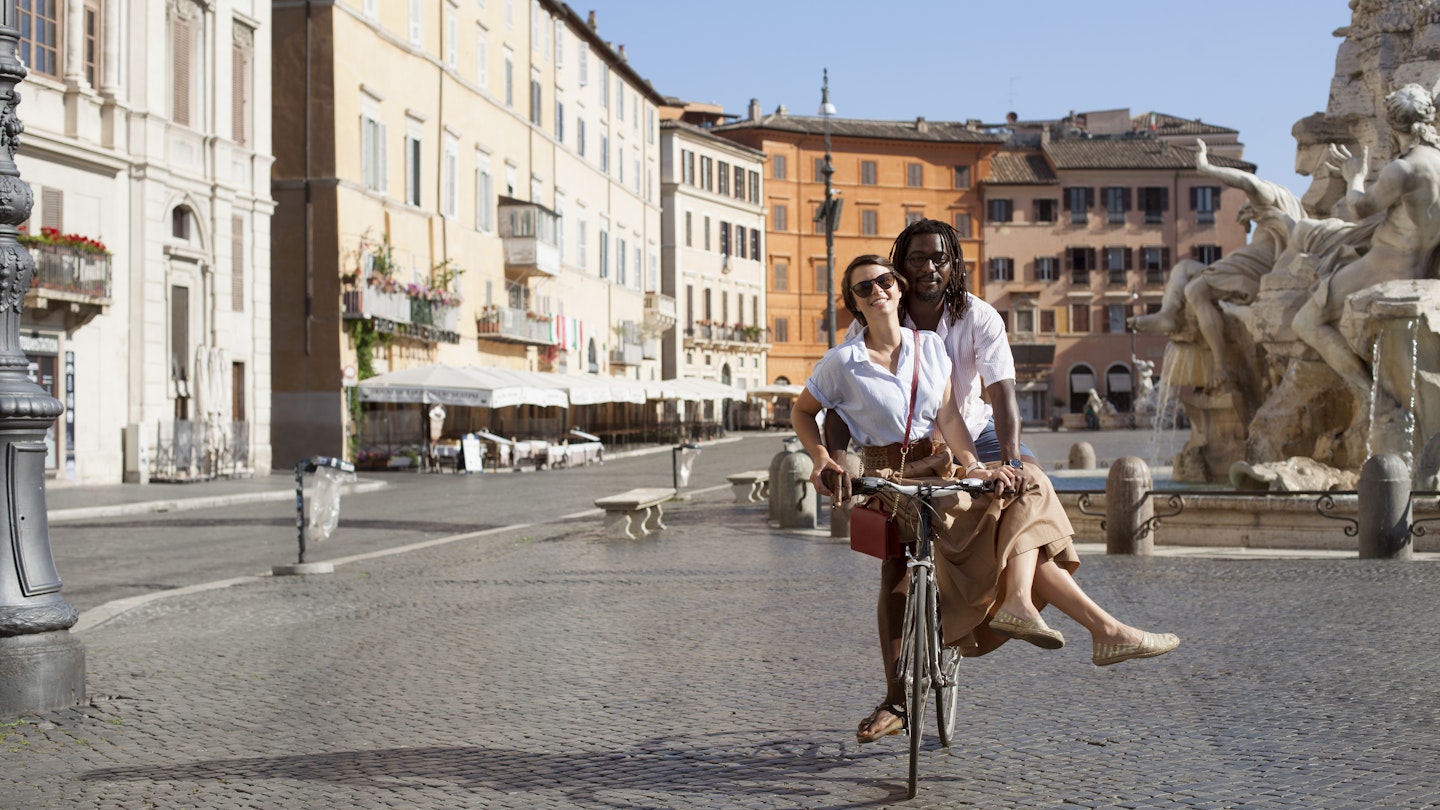
Rome should be the centerpiece of your trip if you’re going to Italy for the first time © Kathrin Ziegler / Getty Images
Home to some of the greatest artworks, historical monuments and food on the planet, and with the kind of varied landscapes that you often have to cross continents to see, Italy elates, inspires and moves its visitors like few other countries.
From its art- and architecture-stuffed cities to its astonishing diversity of natural landscapes – dramatic coastlines, serene lakes, pristine mountains, and those famous rolling hills – picking just a handful of destinations to visit in this wonderful country is no easy task.
So how do you decide where to go? It all depends on what you’re looking for in your Italian odyssey, whether that’s history, art, beaches, hiking or even food. No matter your passion, our list of 15 must-see places in Italy should be your starting point.
Best for history
Once caput mundi (capital of the world), Rome was legendarily spawned by a wolf-suckled boy, developed into a vast empire, rooted itself as the home of the Catholic church, and is now the repository of more than two millennia of art and architecture.
Rome should definitely be the centerpiece of your trip if you’re going to Italy for the first time, but there's simply too much to see in one visit, from the Pantheon and the Colosseum to Michelangelo's Sistine Chapel and countless works by Caravaggio. So do as countless others have done before you: toss a coin into the Trevi Fountain and promise to return.
Planning tip: There’s an overwhelming amount to see here, and with limited public transport in the city center, your choice of hotel can be crucial. Map out the sights you’re most interested in before you book – if you want to be at the Vatican at opening time, for example, don't stay near the Colosseum.
Read more: Italians reveal their under-the-radar vacation spots in Italy
Best for a Renaissance fix
From Botticelli’s Venus , emerging coyly from the water in the Uffizi Gallery , to the mind-boggling dome of its cathedral, Florence is a feast for the eyes. This was, of course, the seat of the Renaissance, and there are knock-out names at every turn – Michelangelo in the Accademia, Donatello in the Bargello, Leonardo and Raphael in the Uffizi.
Further afield in Tuscany – Italy's most romanticized region – is an undulating landscape of sinuous cypress trees, olive groves and coveted regional treasures. Glory in the Gothic majesty of Siena and the Manhattan-esque skyline of medieval San Gimignano before exploring the vineyards of Italy's most famous wine region, Chianti , and the rolling, cypress-studded hills of the Val d’Orcia.
Planning tip: You’re best off without a car if you’re sticking to major towns and cities since Tuscany has a good rail network. But if you want to explore the countryside, you’ll definitely need a car.
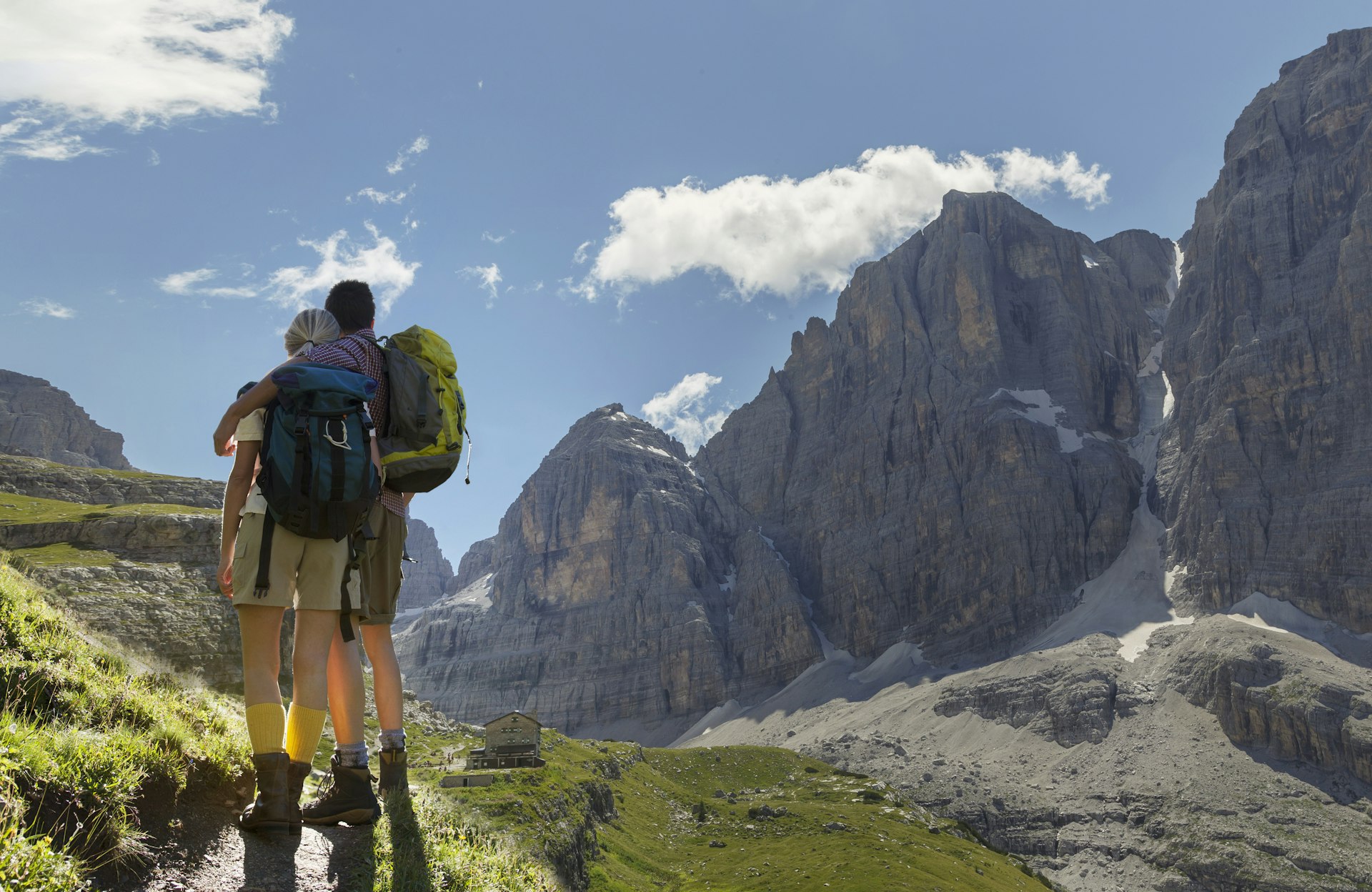
3. The Dolomites
Best for dramatic mountains
Scour the globe, and you'll find plenty of taller, bigger and more geologically volatile mountains, but few can match the romance of the pink-hued granite Dolomites .
Maybe it's their harsh, jagged summits, the vibrant skirts of spring wildflowers, or the rich cache of Ladin legends. Then again, it could just be the magnetic draw of money, style and glamor at Italy's most fabled ski resort, Cortina d'Ampezzo , or the linguistic curiosity of picture-postcard mountain village Sappada . Whatever the reason, this tiny pocket of northern Italy takes seductiveness to dizzying heights.
4. Amalfi Coast
Best for classic beauty
Italy's most celebrated coastline is a gripping strip: coastal mountains plunge into the piercing blue sea in a prime-time vertical scene of precipitous crags, sun-bleached villages and cliffs rearing up behind. Between sea and sky, mountaintop hiking trails deliver Tyrrhenian panoramas fit for a god.
While some may argue that the peninsula's most beautiful coast is Liguria's Cinque Terre or Calabria's Costa Viola, it is the Amalfi Coast that has seduced and inspired countless greats, from Tennessee Williams and DH Lawrence to Elizabeth Taylor, Virginia Woolf and Jackie Kennedy. Of course, its staggeringly romantic looks also make it one of the best places in Italy for couples.
Planning tip: Yes, driving along the Amalfi Coast is one of the world’s most famous road trips, but often it feels like everyone else on the planet has the same idea as you. Traffic can be nose-to-tail, and parking is effectively nonexistent. Instead, take the ferry between towns or travel by public transport .

Best for stepping back in time
Frozen in its death throes, the time-warped ruins of Pompeii hurtle you 2000 years into the past. Wander through chariot-grooved Roman streets, lavishly frescoed villas and bathhouses, food stores and markets, theaters, and even an ancient brothel.
Then, in the eerie stillness, your eye on ominous Mt Vesuvius, ponder Pliny the Younger's terrifying account of the town's final hours: “Darkness came on again, again ashes, thick and heavy. We got up repeatedly to shake these off; otherwise, we would have been buried and crushed by the weight.”
Planning tip: If you have time, the other major city destroyed by the eruption, Herculaneum, is also worth a visit. Much smaller than Pompeii, its buildings are better preserved, and the location – surrounded by its modern descendant, Ercolano – makes the site even more piquant. Like Pompeii, it’s easily reached on the Circumvesuviana train.
6. Emilia-Romagna
Best for foodies
In a region as overwhelmingly foodie as Emilia-Romagna , it's only natural that its capital, Bologna , is dubbed “La Grassa” (the fat one). Many belt-busting Italian classics hail from here, including mortadella, tortellini and tagliatelle al ragù. Shop in the deli-packed Quadrilatero district – home to food stalls since medieval times – then hop on the train for an afternoon in Modena for world-famous aged balsamic vinegar.
Leave room for Parma , hometown of parmigiano reggiano cheese and the incomparable prosciutto di Parma. Wherever you plunge your fork, toast with a glass or three of Emilia-Romagna's renowned Lambrusco – a world away from the sickly sweet wine that was exported in the past.
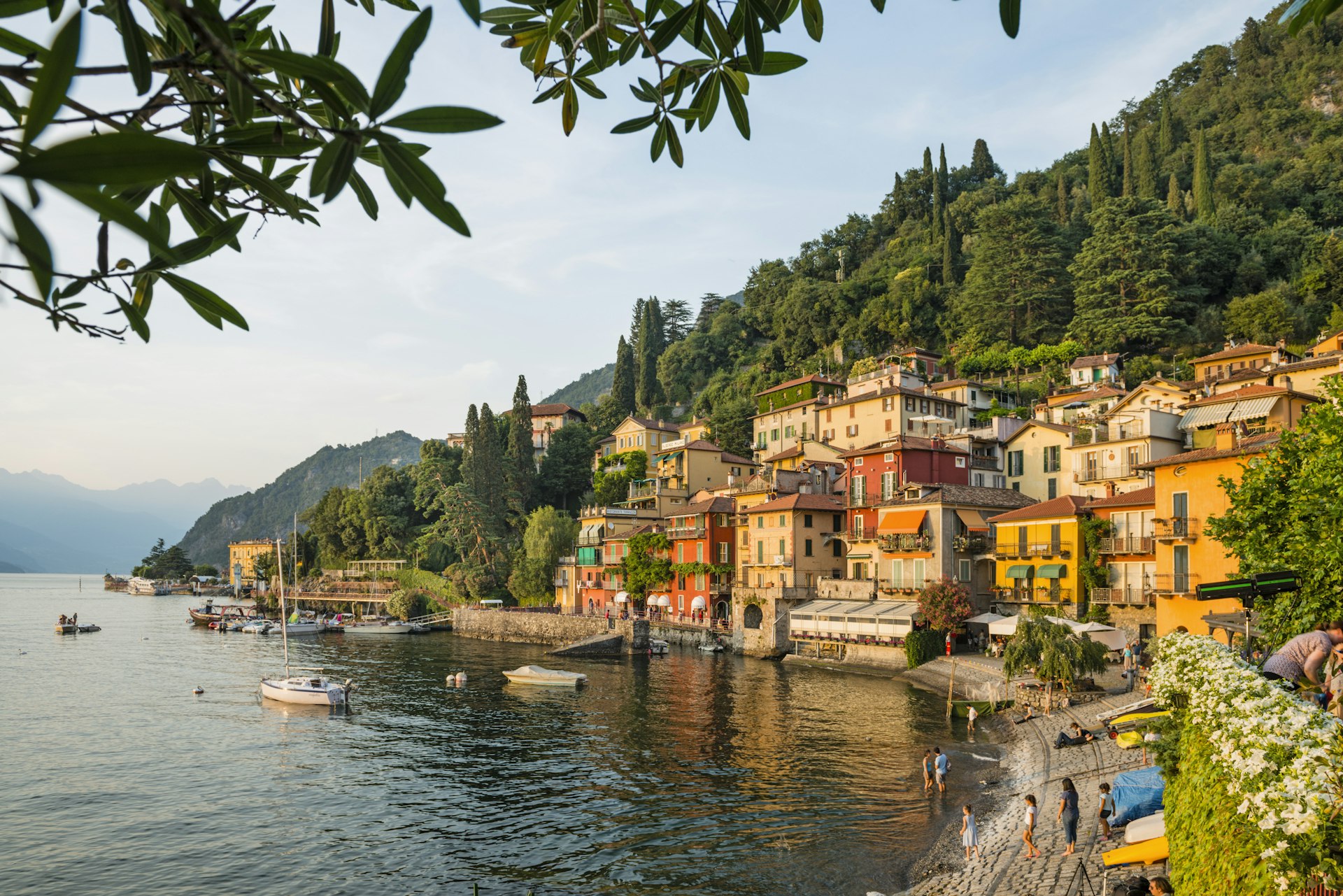
7. Lago di Como
Best for a slice of luxury
If it's good enough for the Clooneys and vacationing Obamas, it's good enough for mere mortals. Nestled in the shadow of the Rhaetian Alps, dazzling Lago di Como is Lombardy's most spectacular lake. Its lavish Liberty-style villas are home to movie moguls, fashion royalty, and literal royalty, while the lake's siren calls include gardens at Villas Melzi d'Eril , Carlotta , and Balbianello that blush pink with camellias, azaleas and rhododendrons in April and May.
The city of Como itself is a hotbed of arresting architecture, from the Gothic cathedral to Palazzo Terragni – built by the Fascists as their party headquarters, it’s a classic example of Italian 1930s Rationalism and a striking reminder of the atrocities committed by the regime.
Planning tip: Como is like the Amalfi Coast – the roads are clogged, and parking is a huge problem. Instead of driving, use public transport; there’s an excellent ferry and bus network, as well as a train line along the eastern edge of the lake.
8. Sardinia
Best for beaches and coastline
The English language cannot accurately describe the varied blue, green and – in the deepest shadows – purple colors of Sardinia’s seas. While models, ministers and perma-tanned celebrities wine, dine and sail along the glossy Costa Smeralda , much of the island – the Med’s second largest after Sicily – remains a wild, raw playground.
Explore its rugged coastal beauty, from the tumbledown boulders of Santa Teresa di Gallura and the wind-chiseled cliff face of the Golfo di Orosei to the windswept beauty of the Costa Verde's dune-backed beaches.
But spend time inland too, and you’ll find some of Europe’s finest prehistoric remains: mysterious nuraghi (megalithic buildings), burial sites so grand they’re known as “giants’ tombs,” and the mountain villages of Barbagia, where locals still practice centuries-old traditions.

Best for sheer italianità
Pompeii, pizza and a whole lot of panache – Naples is a city like no other. Layered like lasagna, each strip of history on top of the last, this is a place where (underground) you can walk along ancient Greek and Roman roads, while at street level there are sumptuous churches, baroque palaces and Maradona – Maradona everywhere .
Outside the city, Vesuvius looms over the time capsules of Pompeii and Herculaneum, while in town, living in the shadow of a volcano gives life a sense of urgency. All that makes for a place like nowhere else .
Planning tip: Naples becomes less chaotic from the water. Taking the ferry isn’t only an option if you’re going to islands like Ischia and Procida – you can also take a boat from the city to Sorrento , Positano and the Amalfi Coast.
Best for a fairytale city
“Unique” is an overused word, but in the case of Venice , there’s no better description. This really is a dreamscape of intricately carved palazzos, gilded churches and world-class museums, all floating on water and crisscrossed by quiet canals.
Avoid the temptation to do a quick drop-in visit to see the main sights – the real Venice is in the silent canals and narrow alleyways, which cast a spell on all who move through them. Tick off the Rialto Bridge and Piazza San Marco , but then stay on to experience this most precious, and precarious, of cities.
Local tip: This is not the place to run a tight schedule. Leave time to wander the alleys , look inside the churches and artisan shops you pass, and hop on a vaporetto that’ll chug through the islands of the lagoon.

11. Parco Nazionale del Gran Paradiso
Best for hiking
If you're pining for a mind-clearing retreat, lace up your hiking boots and explore over 500km (310 miles) of marked trails and mule tracks traversing “Grand Paradise.”
Part of the Graian Alps and one of Italy's very first national parks, Gran Paradiso's pure, pristine spread encompasses 57 glaciers and alpine pastures awash with wild pansies, gentians and alpenroses, not to mention a healthy population of Alpine ibex, for whose protection the park was originally established. At 4061m (13,323ft), the eponymous Gran Paradiso is the park's only peak, accessed from tranquil Cogne.
12. Mount Etna
Best for thrill seekers
Known to the Greeks as the “column that holds up the sky,” Mt Etna is not only Europe's largest volcano, it's one of the world's most active. The ancients believed the giant Tifone (Typhoon) lived in its crater and lit the sky with spectacular pyrotechnics; today they simply call it idda , or “her.”
At 3326m (10,912ft), she literally towers above Sicily's Ionian Coast . Tackle the climb on foot, on a guided 4WD tour, or stick to the lower slopes, where you’ll find some of Italy’s most exciting wines being grown in the uber-fertile volcanic soil. Sicily is one of the nicest places in Italy to visit, thanks to its extraordinary wealth of history and architecture, its jaw-dropping coastline and, of course, the ever-welcoming Sicilians.
13. Cinque Terre and the Liguria coast
Best for classic coastline
Liguria’s remote Cinque Terre area is coastal Italy at its most spectacular. Five seaside villages wedged between cliffs, encircled by a national park and connected by clifftop footpaths, this is a place where humanity has lived in symbiosis with nature for thousands of years. People have chiseled terraces into the steep cliffs and grown wine here since Roman times; until the 20th century, the locals got about by sea or footpath.
The villages themselves are gorgeous, but spare some time for a hike along the Sentiero Azzurro, the most popular of the paths connecting them. Cinque Terre may be the best known, but Liguria’s coastline is one showstopper coastal village after another – additional highlights include Portofino , Portovenere and Santa Margherita Ligure .
Planning tip: This is another area where it’s not worth driving – there are ferry services, but our favorite option is the train, which runs along the coast and stops at each of the villages.

14. Valle d’Itria
Best for picture-perfect villages
They look like hobbit houses – small conical-roofed cottages, often stitched together to form a bigger home but always fairytale pretty, whatever the size. Puglia, the heel of Italy’s boot, is famous for its trulli, but you won’t find them all over the region.
Head south of Bari, in from the coast and up onto the high karst plateau, and you’ll find the Valle d’Itria , where the green fields around towns like Cisternino and Locorotondo are dotted with trulli. Alberobello is the center of it all – the centro storico of the town is nothing but streets of them. This is one of the prettiest parts of Italy – truly.
Best for a real city break
Italy’s fashion capital often gets a bad rap – too international, too organized, not chaotic enough. Don’t believe it. Where else can you go from a Gothic-style cathedral, started in the 14th century, to masterpieces by Leonardo (his Last Supper fresco in the church of Santa Maria delle Grazie is a showstopper, but so is the Sala delle Asse in the Castello Sforzesco , which he painted as a trompe l’oeil forest bower)?
Milan's restaurants pull together the best food from the Italian peninsula, it’s home to one of Italy’s rare cocktail scenes, and its fashion houses are transforming the city’s modern art scene with venues like Fondazione Prada , an old distillery now housing works by the likes of Jeff Koons and Damien Hirst, as well as putting on top-notch temporary exhibitions.
Planning tip: Milan doesn’t really have high and low seasons like the rest of Italy does; instead, its hotel rates rocket up and down depending on whether there’s a major event in town. Avoid Design and Fashion Weeks if you're traveling on a budget .
This article was first published Jun 3, 2021 and updated Nov 19, 2023.
Explore related stories

Budget Travel
May 8, 2024 • 5 min read
With a little planning, a memorable, affordable family vacation is well within reach. Here’s how.
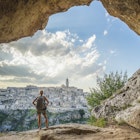
May 4, 2024 • 4 min read
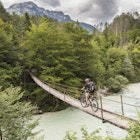
Apr 27, 2024 • 5 min read

Apr 25, 2024 • 6 min read
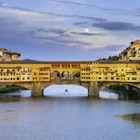
Apr 21, 2024 • 7 min read

Apr 19, 2024 • 10 min read

Apr 17, 2024 • 6 min read

Apr 15, 2024 • 10 min read
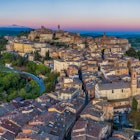
Apr 7, 2024 • 11 min read

Apr 5, 2024 • 5 min read
Italy regions

Don't know your Tuscany from your Calabria?
Visit Agrigento

Explore the remarkable Greek temples of Agrigento
Hotels in Italy
Booking.com: best prices

The most visited town on Lake Garda, on the Sirmione peninsula you can visit a castle, roman ruins and a pretty town

Beautiful coast and pretty villages...
Map of Italy

Find hundreds of fascinating places in all regions of Italy
>> Map of Italy

Salo is a picturesque old town, promenade and harbour on the western shores of Lake Garda

Varenna is a pretty town on the shores of Lake Como, with attractive villas and gardens

Once the best known resort in Liguria, San Remo retains a great deal of its belle epoque charm
Advertisement

The scenic Garfagnana in northern Tuscany is a region of steep forested mountains and traditional villages and towns

Castelmola is a beautiful hilltop village above Taormina
Italy travel guide: explore Italy and hundreds of popular destinations
Italy is perhaps the most culturally rich country in Europe, and a visit offers one of the most attractive and varied experiences in Europe, perhaps the world.
It is the combination of historically remarkable landmarks and towns, small medieval villages untouched by modern life, and the great diversity of landscapes that make Italy such an interesting destination - but don't forget to spend time absorbing the Italian way of life during your visit.

Amalfi / Capri / Lucca
From the capital Rome and the extraordinary ancient monuments (the Ancient Roman empire, older Etruscan sites, the Nuraghe monuments of Sardinia...) to the high Alpine mountains, from the dramatic coastlines of the islands of Sardinia and Sicily to the beauty of the Amalfi Coast and the hill villages of Umbria and the Marches, there are a myriad of discoveries to be made in many regions of Italy - some already well-trodden by visitors, others less well known.
Find the best places to visit in Italy in our regional travel guides:
North-east italy.
- Trentino-Alto Adige (capital: Trento)
- Friuli-Venezia Guilia (capital: Trieste)
- Venice & Veneto (capital: Venice)
North-west Italy
- Aosta valley (capital: Aosta)
- Liguria (capital: Genoa)
- Lombardy (capital: Milan)
- Piedmont (capital: Turin)
Central Italy
- Emilia-Romagna (capital: Bologna)
- Tuscany (capital: Florence)
- Marche (capital: Ancona)
- Umbria (capital: Perugia)
- Rome & Lazio (capital: Rome)
- Abruzzo (capital: l'Aquila)
Southern Italy
- Molise (capital: Campobasso)
- Campania (capital: Naples)
- Apulia (capital: Bari)
- Basilicata (capital: Potenza)
- Calabria (capital: Catenzaro)
The two principal islands of taly are Sicily and Sardinia
The promenade in the early evening, or sitting in front of a cafe as vespas whizz past carrying teenagers to romantic encounters, are an equally important aspect of Italy. Similarly the culinary heritage of Italy is an important part of your trip, with many delicious regional specialties to enjoy as you travel around (when possible we have included recommendations for local food and wine to enjoy for the places in Italy reviewed in this travel guide).

Bologna / Maremma
To start finding places to visit in Italy simply choose a region (from the main menu) or, if your geography is a litle rusty, use our map of Italy . See also the ' most beautiful villages of Italy ' and the towns and villages that have received the Italian Orange Flag award for sustainable tourism.
One suggestion when you are planning your trip: before rushing headlong to see the 'major' sites of Tuscany or Lake Garda, or the beaches of Sardinia, take a look at some of the less visited regions of Italy - many have a great deal to discover even if the tour buses haven't yet discovered them!

Burano / Matterhorn
You may also like to see our features that look at the history of Italy through the history of its towns and settlements, and are a fascinating addition to your travel planning - see history of Italy or visit the individual travel guides for the Italian towns.
Europe This Way
Italy This Way is part of the Europe This Way group - visit Europe This Way for more travel sites and destinations across Europe including France and England.
See the French version of the Guide to Italy
New and updated

Amalfi cathedral: a visitor guide
Villa cimbrone, ravello: a visitor guide, villa rufolo, ravello: a visitor guide, basilica of sant'antonino in sorrento: a visitors guide.
Italy This Way - copyright 2009 - 2024 :: privacy policy
- 2024 TRAVEL UPDATE
- Work with us
- Beyond Bologna
- Regions of Italy
- Travel books
- Best group tours
- Itineraries
- Accommodation guide
- Italian phrases for travel
- Rocket Italian review: 2024 update
- Ultimate Italy Travel Planner
- City Planners
- Essential Guides
- Italy themed gift ideas
- Trip planning services
How to plan an Italy trip
Want to know how to plan an Italy trip? You’ve come to the right place. Italy trip planning is one of our favorite things to do. So much so that we set up this website.
We wrote this article to take you step by step through planning your trip. From deciding when to go and how much it will cost to what to take and how to use your mobile phone, it’s all here to remove the overwhelm and make your trip planning easier. Even if you choose to hire a travel agent to assist with your bookings, it is a good idea to walk through these steps as it will help the agent build the best trip for you.
You can see an overview of the steps you need to follow in the article contents below. Follow our guide and you’ll be on your way to planning your own trip or choosing the right tour for you and your travel companions.
Article contents
Step 1 – Decide when you want to go and your budget
When to go to italy.
There is no bad time to visit Italy but there may be one that suits you better. Depending on your interests and the places you want to see you need to be aware of seasonal differences that you need to know about:
- Summer – June to August: peak tourist season, weather is hot and prices higher. Many Italians are on vacation and the coastal areas are very busy especially in mid August
- Fall / Autumn – September to November: September remains hot and busy in most of the major tourist centers. By October the weather is cooling and ferry services on the coast and lakes stop running. At this time grape harvest is in full swing. November is generally quite wet but there is lots of sunshine between the showers.
- Winter – December to February: As the weather cools so do the crowds. Attractions are much less busy and the lead up to Christmas is magical with lights and decorations in shop windows. In January and February restaurants in many coastal areas are closed. February’s Carnevale in Venice is generally one of the most expensive times to visit the city
- Spring – March to May: In March and April wildflowers bloom and the countryside is awash with color. Easter is a popular holiday for Europeans to visit Italian cities especially Rome, Florence and Venice.
NOTE: peak season in the most visited destinations is May – October.
Our favorite time to visit Italy in the shoulder months. In April and May and October and November the weather is generally sunny and mild, the crowds are manageable and you can find great value deals on your flight and accommodation.
Although we are past the worst of the pandemic and travel restrictions, things can change quickly – you can check our article Can you travel to Italy plus current situation. We update this regularly with the latest travel news.
READ: Our full article on the best time to visit Italy
How much will it cost?
This will depend on your expectations, interests and travel style. You can travel very cheaply in Italy if you visit lesser-known regional areas and avoid the big cities. Even in the big cities it is possible to find free attractions and budget accommodation if you know where to look.
If you want to see the main sights and enjoy experiences such as cooking classes, private boat cruises and wine tours then the sky is really the limit when it comes to cost.
Most travelers fall somewhere in the middle however and a reasonable daily budget per person for food, transport and activities is around €100 on top of flights and accommodation.
READ: Our full article on Budgeting for your trip to Italy.
Expert Assistance
Need some help planning your trip?
Book in for a trip consultation with our expert Italy travel planners ready to help you build your dream vacation in Italy whether that be a classic first timer trip or an off the beaten path adventure
Step 2 – Do some preliminary research and preparation
Where to research your trip to italy.
From online news and magazines, blogs, Instagram, Facebook groups (check out Italy Travel Planning ) and even podcasts like ours – there are thousands of resources online. I am sure you’ve already seen quite a few of them already. Sometimes endless options can be overwhelming so we recommend collecting ideas in an online folder or scrapbook and organizing them into destinations that you really want to see.
You’ll probably want to “do it all” but really have a think about your interests and what will best suit you and your travel style. Once you have some ideas, it’s best to consult a structured resource to check your assumptions and thoughts.
Traditional guidebooks definitely have their place for planning a trip to Italy. Well researched and structured, they’ll give you in depth information on destinations and sights to see as well as practical tips to help you plan. Even after 30+ trips to Italy we still consult guidebooks for new destinations we want to visit. You can find our favorite Italy guidebooks here .
Italy travel planners
We noticed that even guidebooks can provide too much information in the planning process so we created one page travel planners for the top places to visit in Italy. Our planners tell you the top sights, best viewpoints, must have experiences and our favorite places to eat (including best gelato stops) in each place.
You can print them off or keep them on your phone and there’s a link to an online map so you can map out your days. We have guides for Rome, Florence, Venice, Milan, Cinque Terre, Amalfi Coast and Sorrento. Our goal is always to simplify the trip planning process and we know you will find them useful.
DISCOVER: Our Digital travel guides and planners .
Group tour itineraries
Tour companies – like ours ! – put a lot of effort into designing tours that cover the main sights and even lesser known regions. They know the times it takes to get around and how long you can stay in each place to get a taste or feel for the destination.
We often check itineraries of places we would like to visit as an input into our own planning. Here are some recommended tour companies and itineraries to investigate.
Private tours
If you want maximum flexibility and comfort, consider a private driving tour . From the moment you land, to when you depart, you’ll have a personal driver with local knowledge making sure your trip is exactly what you imagined.
Passports and visas
At this stage of your planning it is a good idea to check the validity of your passport and if you require a visa. Citizens of the United States, Australia, Canada, United Kingdom and New Zealand may enter Italy and stay up to 90 days without a visa within an 180 day period. You must have 6 months validity on your passport when you enter Italy. Go and check this now as it can take several months for new passports to be processed.
All other nationalities should check this Italian government site that will walk you through whether a visa is required for your visit.
Citizens of the European Union can travel with photo identification.
Please note – this information is subject to change and it is always best to check with your local foreign office for the latest advice on travel to Italy.
- United States – click here
- Australia – click here
- United Kingdom – click here
- Canada – click here
READ: Can you travel to Italy plus current situation .
Step 3 – Confirm your itinerary
Itinerary planning is where many people get stuck. We understand. There are so many amazing places to see in Italy that deciding where to go and how much time to spend there can be hard. As a general rule, we like to spend a minimum of three nights in each place to minimize time spent traveling and also enjoy each place as much as possible. So if you have a 10 day trip then 3 main stops would be a good baseline to start with.
Where to go
From your research, you probably have an idea of where you want to go. You may want to visit the popular cities and regions on your first trip however each city and region in Italy offers something special.
Most popular cities
Most popular regions.
On our site, you can also browse Italy’s lesser-known cities and regions on the destinations page or visit our article on hidden gems in Italy for inspiration.
Itinerary suggestions
As a general rule, for a 3-5 day trip we suggest choosing one destination – a city or region. If you have a week to 10 days then you can plan 1-3 places in either the north OR south of Italy. In a two week trip you could cover 3-4 places and see both north and south.
Try not to squeeze too much in. It’s easy to underestimate transit times and getting in and out of airports and train stations. Plus you want to have plenty of time to enjoy yourself and soak up every last moment.
Suggested itineraries
If it is your first trip to Italy, like many first-time visitors you may choose to start your journey in Rome and visit Florence and Venice. This 10 day Italy itinerary covers that route. It includes detailed instructions on how to make the most of your time in Italy.
Want our FREE Italy trip planning checklist? >> Click here .
Alternative 10 day itinerary suggestions
Most people travel to Italy for 10 to 14 days so we built some itinerary suggestions to cater for that time frame that cover both northern and southern Italy.
Group Tours
Packaged group tours of Italy are a popular way to travel and avoid the stress of planning your own trip. They are also a great option if you would like some company along the way. Here is a quick summary of popular tour companies:
- Untold Italy small group tours – we run exclusive small group tours for food and wine-loving travelers wanting to get off the beaten path to see hidden Italy beyond the major cities and tourist areas. We lead groups of 14 people on journeys of discovery to experience the regions of Sicily, Puglia, Piedmont, Tuscany, Umbria, Bologna and surrounds, Capri and the Cilento coasts > learn more
- Trafalgar – popular and well respected brand appealing to the 50+ age group. Travel is by coach and the focus is on culture and history. Expect group sizes of 40-45 passengers and 4 star hotels. Trafalgar also include interesting local experiences such as wine tastings and unique stays in their itineraries. Check out their popular Best of Italy tour
- Intrepid Travel – small group tours with an average of 10 travelers with plenty of free time built in for exploring. Their popular Italy Real Food Adventure is an 8 day itinerary that showcases their travel style well
- Peregrine – Intrepid’s premium brand offers some interesting hiking tours of the Italian Lakes and Amalfi Coast
- Tourradar – is a market place for group packaged tours where you can browse hundreds of package tours by different operators, and by date. You then filter by your interests and age group and read detailed reviews. You can browse fully organized tours to independent self-drive or train itineraries
READ: Our full article on the Best package tours for Italy .
When should you start booking your trip?
Italy is one of the most visited destinations in the world, so in our opinion, it is never too early to start the booking process. Book accommodation as soon as possible, and at least 6-12 months in advance especially for peak times in July and August. We prefer to pay the higher rate for flexible bookings on both Booking.com and Plum Guide .
Day tour and attractions also sell out months in advance at peak times. In 2020 our preferred booking site GetYourGuide refunded all tours canceled due to the pandemic and stand by their policy of allowing cancelations with a full refund up to 24 hours before your activity starts.
Flight bookings will depend on where you are flying from. For long haul flights the best deals are generally found 6-12 months in advance while deals pop up regularly for travel within Europe.
Rail bookings can be made up to 4 months in advance on high speed intercity and standard intercity trains.
Step 4 – Book your flights, inbound travel & insurance
Flights to italy.
It is easy to fly direct (or with a single stop) into Italy from most places in the world. Rome Fiumicino [Leonardo da Vinci](FCO) international airport is the main hub for air traffic but you can also easily fly into Milan Malpensa (MXP) or Venice Marco Polo (VCE) airports from major hubs around the world.
There are many other airports throughout the country that can be accessed within Italy and Europe. Pisa is useful for trips to Tuscany and the Cinque Terre and you will need to fly into both Sicily and Sardinia.
To source the best flight deals to Italy we use a combination of Skyscanner , CheapoAir and Google flights .
- Skyscanner – portal where you can view cheapest days and routes to fly and set alerts for price drops
- CheapoAir – uncovers the best deals on first and business class flights around the world
- Google flights – great for checking schedules and airline routes
Secure the best deals by setting up alerts on Skyscanner for the month you wish to travel and wait for price drops. It’s good to have a price that you wish to pay in mind but be prepared to be flexible on dates and stopovers. It is often cheaper to fly into Milan rather than Rome and that city is a useful entry point for northern Italy itineraries.
TIP: always use an incognito browser window to search for flight deals. Prices are amended up for users known to be searching for specific dates and times.
Inbound rail from within Europe
Major Italian cities – Milan, Rome, Florence and Venice – have fantastic fast speed train links from other capitals and major cities in Europe. The website Seat 61 is a great resource for planning train travel within Europe.
Bus travel to Italy
If you’re on a tight budget and traveling within Europe, then you might want to consider coming to Italy by bus. Low cost operator Flixbus covers 3,000 destinations in 39 countries.
You can compare schedules and prices using Omio – a useful site for booking a combination of train, bus and air travel within Europe.
Organize travel insurance
Once you have booked your flights or tour, we recommend organizing travel insurance straight away. The main reason you should purchase insurance is to cover health costs and emergency repatriation to your home country should you fall ill. Since 2020 you need to check whether there is cover provided for issues relating to covid19 however general health cover is recommended regardless.
Cover for cancelation, delays and loss of belongings is a bonus and again they may not apply under pandemic conditions. You need to read all the terms and conditions of your cover including any exclusions before you commit to buy.
Policy costs vary by your country of residence, what is covered, age, existing conditions and the insurer. You can visit Worldnomads for a quick quote. We use this company for our family travels and find the cost, coverage and claims process to be good to excellent.
Another option if you are in the United States is Safety Wing’s Nomad Insurance . Unfortunately neither option provides policies for those aged over 69. In this case you can try Travel Insurance Master – a service that allows you to compare quotes and insurance policies.
Step 5 – Book accommodation and transport
Accommodation.
Choosing where to stay at each stop is an important part of itinerary planning. Italy has many different options for tourists and you can expect the usual range of hotels and bed and breakfast accommodation as well as apartments and villas.
If you plan to spend any time in the country, consider staying at an agriturismo or farm stay. This is accommodation offered by Italian farmers who earn additional income by providing rooms and meals. Very popular in Italy and Europe, prices ranges from budget to luxurious. You can find agriturismi (plural) with swimming pools, hammams, restaurants and wine cellars. We always try to build them into our itinerary.
LISTEN: Find out about farm stays in Italy in this podcast episode .
How much will accommodation cost?
Here is a rough guide to average prices for a double room. This will vary with prices higher in popular areas at peak times
Upscale / Luxury – €210+ [USD $240+] per night Midrange / Boutique – €120-260 [USD $135-295] per night Budget / B&B – €70-130 [USD $80-150] per night Ultra budget / Hostel or shared room in AirBnB – €30-45 [USD $30-40] per night
Best accommodation sites
Our favorite sites for booking lodging are Booking.com and Plum Guide – between them, you’ll find a huge range of options from hotels and resorts to bed and breakfast, apartments and farm stay accommodation.
Plum Guide is particularly useful for longer stays in apartments and villas and if you’re traveling as a family and need some extra space. Use the code “Untold5” for a 5% discount here .
Other sites we use and recommend
- BookingsForYou – beautiful villas and apartments in Tuscany, Italian Lakes and Puglia – 5% for readers when you mention our site or code – UntoldItaly – when booking
- VRBO – has some great options for long stay villas and apartments, particularly on the Amalfi Coast
- Agriturismo.it – great for finding smaller farm stays but the booking engine is terrible. You can usually find the same properties on Booking.com
- Airbnb – we have used Airbnb on many occasions in Italy but are now finding better value and booking conditions on Booking.com and VRBO
LISTEN: To more accommodation options and what to look for in this podcast episode .
Further reading:
- Where to stay in Rome – a district by district guide to the best areas to stay
- Best places to stay in Florence – neighborhoods and areas best suited to your trip
- Where to stay in Venice – a neighborhood and area guide
- Where to stay in Milan – best areas, places and hotels
READ: Our Italy accommodation guide .
Transport while in Italy
As a general rule, if you are traveling between cities and major towns then the best way to travel around Italy is by train. If you want to explore the countryside and small villages you will need to rent a car.
When you are mapping out distances to travel between destinations use Google maps or Rome2Rio .
Train travel in Italy
Trains in Italy are modern and efficient. Fast speed services link the major cities and regional trains connect smaller towns and villages. Two major train networks operate throughout Italy – Italo and Trenitalia .
You should book in advance for high speed intercity services where seats are allocated. If you purchase non-flexible tickets you can make significant savings with advance bookings. They are not required on regional services.
READ: Our Complete guide to train travel in Italy .
Recommended train booking sites – Omio and The Trainline
You can book directly with the Italian operators or an easier way is with:
Omio – compare train times and prices across both Trenitalia and Italo schedules and keep your ticket details on their handy app. Click here to search for rail tickets on Omio
The Trainline is a similar service to Omio offering schedules, pricing and booking for train companies in Italy and Europe. They also have a useful app and great instructions in English. Click here to search for rail tickets on The Trainline
High speed train intercity travel times on popular routes
Rome to Florence – 1 hour 30 minutes Rome to Naples – 1 hour 15 minutes Rome to Milan – 3 hours Rome to Venice – 4 hours Florence to Venice – 2 hours Florence to Milan – 2 hours
Car rental in Italy
One of the best ways to see the smaller towns and countryside in Italy is to rent a car and take to the open road. Driving in Italy is quite straightforward. You just need to do some forward planning and use your common sense. Here are some tips to
- You are required to carry an International Drivers Permit – these can be arranged in your home country at minimal cost
- Standard transmission on cars is manual or stick shift. If you want to rent an automatic car expect to pay extra, if you can find one available
- Rent the smallest car you can to fit you and your luggage – roads are often narrow and you don’t want to get stuck!
- Heavy fines apply if you enter ZTL zones or historic districts where driving is not allowed
We use both Car Rental by booking.com and AutoEurope to find the best car rental deals in Italy including one way options. They both search international and local providers so you get a wide variety of choice and there is 24/7 support if you need it. AutoEurope is usually your best option if you want a one way rental.
Click here to search for car rentals in Italy with Car Rental by booking.com .
READ: Our guide to Renting a car in Italy .
Internal flights
If you want to visit the islands of Sicily or Sardinia, or travel very long distances, flying makes the most sense.
Check on Skyscanner or Google flights for routes and prices. Remember to set alerts for those routes you want to fly and book early for flights in the summer months.
READ: Our guide to all transportation in Italy .
Step 6 – Book Attractions, tours and activities
Major attractions.
The major cities of Italy – Rome, Florence, Venice and Milan – are some of the busiest cities for tourists in the world. And most visitors want to spend time at their famous attractions
We strongly advise you to prebook advance skip-the-line tickets for the following attractions – the Colosseum, Vatican Museums, Uffizi Gallery and Doge’s Palace. Otherwise, you could spend precious vacation hours standing in lines to enter these sites. Note – in winter months booking in advance is not as necessary.
We have given you the official booking sites and an alternative for approved ticket partners should you have trouble using the official site – unfortunately, that happens a lot! The direct sites are usually cheaper but the partner sites are generally more user friendly. Always check the terms and conditions of your purchase, particularly in relation to changes and refunds. GetYourGuide has a very easy cancelation policy which in many cases allows cancelation with refunds up to 24 hours prior to departure.
- Colosseum – official ticket site OR buy Colosseum tickets on Get Your Guide
- Vatican Museums – official ticket site OR buy Vatican Museum tickets on Get Your Guide
- Omnia pass – Colosseum + Vatican + one other museum + hop on, hop off bus – click here for details
- Uffizi Gallery – official ticket site OR buy Uffizi tickets on Get Your Guide
- ‘David’ statue [Accademia Gallery] – official ticket site OR buy Accademia tickets on Get Your Guide
- Duomo roof climb – official ticket site OR buy Dome climb tickets on Get Your Guide
- Doge’s Palace – official ticket site OR buy Doge’s palace tickets on Get Your Guide
- San Marco basilica – official skip the line tickets OR buy a tour of San Marco including tickets on Get Your Guide
- ‘Last Supper’ painting – official ticket site OR buy Last Supper tickets on Get Your Guide
- Duomo rooftop – official ticket site OR buy Duomo tickets on Get Your Guide
READ: Our full review of Get Your Guide .
If you want to learn about the sites you are visiting then we recommend a group day tour. We prefer small group or private tours where you learn about the culture and history of the places you are visiting. It’s so much more fun than reading plaques and you are also able to ask questions.
So make sure to build in a couple of tours when you are planning a trip to Italy.
Our favorite small group tour companies are Take Walks (formerly Walks of Italy) and Liv Tours and we prefer With Locals for private tours. Both offer very well designed and engaging tours of the major sights in Italy as well as interesting food and cultural tours.
- Take Walks have a longstanding reputation for excellent service, groups under 20 people and guaranteed departures. So if you are the only person booked on a tour it will still go ahead. We recently enjoyed our Colosseum at night tour and day trip to Tuscany with them
- Liv Tours – family run Italian company offering true small group tours of 6 people or less. All of their tours use expert guides who will help you fall in love with Italian history, culture, and food. Tours include a popular golf cart tour of Rome’s highlights and their fascinating Women’s history tours
- With Locals offer great value private tours. You choose from a series of set itineraries and guides in cities across Italy. There are tours focused on history, food, culture and other themes or they can be customized them for your group. We tried their 10 Tastes of Naples recently and it was lots of fun. They also have great options for families
- Eating Europe – food tour specialists who will ensure you discover the best local dishes
Save 5% on Liv Tours with code – ‘untold italy’ >> click here to browse tours
- Rome: A 3 Day Itinerary
- The best tours in Rome
- Unmissable day trips from Florence
- Day trip from Rome to Pompeii
- Best tours of the Vatican
- Tickets and tours for the Colosseum
- Rome’s best food tours
Activities and experiences
Seeing the sights of Italy is always a treat but you’ll also love immersing yourself in Italian culture. These days you can choose from a wide range of experiences and activities. From food and wine tours, to football matches, concerts and exploring the countryside by vintage car, there are memorable experiences to suit you.
Recommended experiences
- Cooking class with Nonna Nerina near Rome – Grandma Nerina teaches you how to make fresh pasta and welcomes you into her home. If you can’t wait until you get to Italy to do this she also does online classes
- Capri boat trip – small group on a private boat means a slower pace and more time to see the island. You can read what to expect on this day trip here
Our favorite companies for searching for interesting and unique things to do in Italy are:
- Cookly – cooking class and food and wine experiences like truffle hunting from small operators across Italy
- Get Your Guide – has the biggest listing of tours and experiences
Step 7 – Get ready for departure
Organize your money and credit card.
The local currency in Italy is the € Euro.
You do not need to carry too much cash when you are there. Credit and debit cards VISA and Mastercard are widely accepted while American Express and Diners Club are not as popular. You may want to consider a foreign currency card like the Wise Mastercard where you can convert Euros easily and cheaply from your US dollar, Australian dollar or Canadian dollar accounts (plus many other currencies)
Be aware of foreign currency charges and ATM withdrawal fees applied to your account when you are abroad. You may want to review the cards you are taking with you prior to your trip. We recommend that you take two – one as a back up for emergencies. And inform your bank before you go. Sometimes they can be overzealous and place a block on your card if they see unusual activity.
Book airport transfers
Planning your arrival in Italy is recommended. Most of the airports are a fair way out from the city center – and in the case of Venice, in the middle of a lagoon!
Compare different transfer services on Suntransfers – a company that specializes in transfer options from major airports. They have options to suit all budgets and prices for coach, mini bus, private car and limo services.
Rome – transfers from Fiumicino airport
Taxis are fine to take in Rome. There is a set rate into the center of €48 and the ride takes around 45 minutes. Or, if you would prefer to be met at the airport you can pre-book a transfer. A transfer is the best option if you are traveling with more than 2 people and have several items of luggage. We recommend:
- Welcome Pickups – available 24/7, a private car transfer means you are met at the arrivals hall and will take between 30 minutes and one hour door-to-door.
- Suntransfers – offers a wide range of vehicles for groups of all sizes. Transfers can be canceled up to 48 hours in advance with no penalty.
Another popular way to transfer into Rome is to take the Leonardo Express train . This non-stop service between Fiumicino and Rome Termini (the main station) takes 32 minutes. Trains depart every half hour from 6:08 to 23:23, and the cost is €14. You can purchase tickets at the station on the day. Unless you are staying close to Termini you will then need to get a taxi to your accommodation.
The cheapest transfer option – this bus goes direct from the airport to Termini – €6-7 one way.
READ: Our full article on Rome airport transfers .
Venice transfers
The water bus company Alilaguna runs shuttles every 15 -30 minutes in peak season to and from the airport and the islands on the lagoon. This bus stops at San Marco and Rialto as well as some other secondary stops. The fare is €8 one way €15 return and the journey takes 1½ hours – you can book online here
A private boat transfer or shared transfer in a water taxi is the fastest (and most glamorous) way to transfer to your accommodation in Venice. Journey times and prices depend on the number of people in your party and exclusivity. A direct private transfer to the airport takes around 45 minutes.
- Private transfer – around €200 for 6 people – book here
- Shared water taxi transfer – around €32 per person – book here
You can also take a taxi (cost €25) or express airport bus to Piazzale Roma (cost €8) and then take a vaporetto (water bus) or walk your hotel/accommodation. A one way trip on the ferry costs €7 per person and is valid for 60 minutes.
READ: Our full article on Venice airport transfers .
Florence transfers from Florence airport
Florence airport is very close to the city center and a 15 minute taxi ride away. There is also an airport bus that takes around 20 minutes. A 20 minute tram ride takes you to the main Santa Maria Novella train station and costs €1.50.
Florence transfers from Pisa airport
Many people fly to Pisa to reach Florence as it is a larger airport. If you arrive during the day take the PisaMover train to Pisa Centrale train station – journey time 5 minutes. Then take a train to Florence. Starts at 6.00 am and the last train departs at midnight and it costs €5.00.
On our last visit we arranged a transfer with Suntransfers as we arrived too late for the last train. There is also a coach transfer option.
Amalfi Coast or Sorrento transfers from Naples airport or train station
We recommend organizing a private transfer for this journey. The train, ferry and bus via Sorrento can take 4 hours while a car service is around 1.5 hours. You can compare different services on Suntransfers – a site specializing in ground transportation.
You may find sites or groups where specific drivers are recommended. We do not recommend booking a driver this way for safety reasons – how do you know that the person recommending the driver is reputable, let alone the driver? And also for practical reasons – small operators may not have capacity or availability.
Plan how to access the internet
Consider how you will access the internet on your trip. You may be happy to disconnect and use paper or offline maps however many of us need internet access.
Italy has high speed internet and there are many options to stay connected depending on your needs. If you use minimal data and are happy to use offline maps and guides then you should be able to get by using wifi at your hotel or accommodation. Do not expect wifi to be available in restaurants and cafes because in Italy restaurants are for eating.
If you plan to use wifi make sure to turn off international data roaming before your trip to avoid unpleasant bill surprises.
Paid internet options
- Use your provider’s roaming plan – usually very expensive and slow speeds if coming from outside Europe
- Local SIM – purchase a tourist SIM before your depart or when you arrive that has enough data for map navigation and research. Italian provider TIM comes highly recommended and there are outlets at the airports and train stations
- Portable wifi device – connect multiple devices to high speed internet for reasonable prices. We use and recommend Solis Wifi (Get 10% off with our code – UNTOLDM )
READ: Our full guide to Cellphones and getting online in Italy (SIMs, wifi and more) .
Packing for your Italy trip
The key to packing for Italy is to pack the minimum that you need. Many people like to take carry-on luggage only for their trips. This is a great way to travel as you will find it much easier managing trains, cobblestones and stairs that are a feature of travel in Italy.
But, most of us find that a challenge, so try to stick to a medium bag per person plus one carry on item. Large suitcases are not a good idea. You will also thank yourself if you consider your footwear carefully. Three comfortable pairs will see you through most trips.
Note – We have a complete packing guide coming soon.
LISTEN: to packing strategies in this podcast episode .
Must have items for your trip
- Luggage – get the size right with our guide to the best luggage for Italy
- Untold Italy travel planners – one page checklists of the must see sights, restaurants and gelato bars in Italy’s most popular places
- Collapsible water bottle – stay hydrated and fill up at free water fountains all over Italy
- Camera – for your vacation snaps. We recommend lightweight mirrorless models like these ones
- Packing cubes – these make packing, organizing your luggage and unpacking so easy. We love them!
- Power cube – don’t bring lots of bulky converters. This one has 3 USB ports
- Battery pack – keep all your devices charged
- Plug adapter – you will need one!
- Face masks – for your safety and you may be required to wear one indoors
- Hand sanitizer wipes – to keep germs at bay
READ: Our Complete packing guide for Italy .
Get started and plan your Italy trip now!
We hope you now have more confidence to start planning your trip to Italy. This will no doubt be a trip that you’ll remember and cherish for years to come. And, like many of us, you may find it sparks a passion to return to bella Italia again and again.
Latest Italy Travel Podcasts and Articles
Renting a car in italy – 12 top things to know, can you travel to italy – latest travel information [may 2024], italy in july – reasons to visit & what to expect, visiting italy in june – reasons to visit and what to expect, how to travel by train in italy, visiting italy in may – reasons to go and what to expect, episode #216: 10 reasons we love italy’s umbria region, visiting italy in april – reasons to go and what to expect, planning a trip to italy.
We love travel in Italy and sharing our knowledge. Read our Italy trip planning guide or join our FREE Italy travel planning community . Our 140,000+ members are happy to answer questions about your itinerary, how to get from place to place, the best places to stay and fun things to do.
Sign up for our news and podcast updates where we share mini guides, tips, exclusive deals and more and we'll send you our Italy Trip Planning Checklist to say grazie ! >> click here to subscribe
Italy Travel Guide
More than pizza, pasta, and gelato – Italy has impressive mountains, beaches, famous museums, and stunning architecture.
Best time to visit Italy
Best things to do in italy, best places to visit in italy, saturnia hot springs in tuscany – italy’s best-kept secret, 9 things to do in lake como, italy, best things to do in siena, italy, 11 best things to do in venice (city trip guide), map of italy, weather in italy.
Italy sees a Mediterranean climate, making it great to visit any time of the year. Summers are hot and dry (the perfect beach weather), and winters are mild, ideal for exploring cities. Coastal areas like Sicily have sunny weather, while inland regions see more distinct seasons.
Tuscany Road Trip: The Ultimate 5-Day Itinerary
Exploring the elsa trail and diborrato waterfall in tuscany.
Sicily Road Trip: Ultimate 2-Week Itinerary
What to do in sicily: 13 must-see spots, 15 best things to do in palermo, sicily, 12 best things to do in taormina, sicily, 9 best things to do in cefalù, sicily, 10 best things to do in catania, sicily, valley of the temples, sicily: everything you need to know.
Best Italian cities
Discover san marino: the perfect day trip from italy, 11 best things to do in bergamo, italy, 8 best things to do in florence, italy, 11 best things to do in pisa, italy, 9 best things to do in rome, italy (3-day guide), how to rent a car in italy, how to plan a trip, best travel insurances.
- Find Hotels via Booking.com
- Find Hostels via Hostelworld
- Find a Rental Car via Sunny Cars
- Find Flights to Italy via Skyscanner
- Get a Travel Insurance via Heymondo
- Book Tours & Attractions via GetYourGuide
- Book a Bus/Train/Transfer via 12Go
- Get a Visa via iVisa
- How to pack light for your trip
- How to plan your trip our tips
Why is Italy worth visiting?
From spectacular cities full of history and art to gorgeous natural scenery, buzzing beaches, and world-renowned cuisine, Italy is a dream destination for countless reasons. Whether you’re exploring ancient ruins or savoring a delicious pizza on the coast, Italy offers a perfect blend of culture and beauty.
Is Italy cheap to visit?
Though popular with many high-end hotels and restaurants, Italy can also be affordable. Enjoy delicious pasta for only $10 and gelato for $3, and stay in budget-friendly hotels (starting around $50), proving that La Dolce Vita is for every type of traveler.
Can I drink tap water in Italy?
In Italy, sip confidently from the tap – the water is safe and refreshing to drink! Bring a reusable bottle to top up at one of the many fountains, and stay hydrated while reducing plastic waste.
Do I need a visa for traveling in Italy?
Most travelers from the EU, the US, and many other countries can enter Italy for up to 90 days without a visa. Check your specific requirements, pack your bags, and get ready for pasta-filled adventures!
What language do they speak in Italy?
Italian, the language of love, art, and delicious food, is like music to your ears. Embrace the bella lingua as you travel through the country, offering a friendly ‘ciao’ (hello or goodbye) everywhere you go.
Do I need travel insurance for Italy?
Travel insurance is your safety net for your city-exploring and Vespa-riding escapades, making sure you have peace of mind whilst making unforgettable memories. It protects you against unexpected events, whether it’s a canceled flight or an accident.
Is Italy safe?
Italy’s timeless beauty and warm hospitality make it a safe destination for travelers. Crime levels and risk of natural disasters are generally low. In big city centers, like Rome or Milan, petty crime is more common (like pickpocketing or car theft).
What power plug type does Italy have?
Italy uses both Type F and Type L power plugs, so it’s a good idea to carry adaptors for both plug types when traveling to Italy. Type F has two round pins, while Type L has three in a row.
Why do people love Italy?
Italy is loved by people from all over the world for its rich culture, landscape, and cuisine. Whether you’re looking to stroll through century-old Florence, sip wine in Tuscany’s stunning vineyards, or relax on the Amalfi Coast, there’s something for everyone.
Travel to Italy
Beauty lies in the details in Italy, whether it’s elderly people enjoying their morning espresso, the stringy mozzarella on a perfect pizza, or the joyful Vespa driver as he drives through the Tuscan sunflower hills. All these beautiful scenes on a vacation in Italy leave travelers deeply in love with the country.
How to Plan Your Trip to Italy
Follow our Italy travel guides to plan your ultimate trip! Whether you’re exploring ancient ruins in Rome, savoring Neapolitan pizza on the coast, or admiring the lively towns in Umbria , we’ve got you covered with our informative guides. Discover all the best places in Italy, or check out our 7-day Italy itinerary.
2 Weeks in Italy also makes the perfect time for a road trip, allowing you to see much more of this diverse Mediterranean country.
Best Time to Visit Italy
Whether you’re skiing in the Dolomites, enjoying a glass of wine in Siena, or touring ancient Roman ruins, the weather adds its own magic to your Italy holiday.
High Season: Italy’s weather is different throughout the country and the year. Summers (June to August) are the perfect time for beach bumming in coastal areas like the Amalfi Coast and Sicily. This is, however, also peak travel season, so prepare for crowds.
Shoulder Seasons: The shoulder seasons of spring and fall are the best time to visit Italy. During this time, the weather is pleasant, and landscapes burst in color. Florence and Tuscany are particularly stunning during this time, with milder temperatures perfect for exploring historical sights and vineyards.
Low season: Winter makes a great time to visit the north (especially the Italian Alps) if you’re into snow sports. Venice , Milan, and Rome can be a bit chilly but are just as enchanting and will have fewer tourists. Down south on the coast, winters are milder, making them also a great off-season escape.
Coastlines and Beaches
Once you’ve absorbed all the Italian history and art that there is to offer, head to the idyllic Italian shores. The country boasts a coastline that’s as diverse as it’s stunning, offering a beach experience for every traveler. Best of all, the warm Mediterranean climate in Italy and the hot sun that shines on a deep blue sea make it the perfect summer destination.
Discover areas such as the Cinque Terre , where layers of colored houses sink into the olive groves and cliffs, or cool off in the cool waters in front of Puglia’s unique coast dotted with hidden grottoes.
Alternatively, leave the mainland, and head to the island of Sardinia, where white sandy shores line with azure blue waters. For history lovers, Sicily offers a blend of beautiful beaches and ancient ruins like the impressive Valley of the Temples.
Italy’s beaches are more than just a place to soak up the sun – try different watersports, explore cute coastal towns, and dive into the different gelato flavors.
Food, Culture, and Religion in Italy
Italy is known as a cultural hub where food, culture, and religion come together and create a beautiful blend of traditions.
Food: Italian cuisine is renowned globally, but each region has its own flavors and culinary delights. Lombardy in the north is famous for its creamy risotto, while Sicily in the south boasts dishes like pasta alla norma, and Naples is the birthplace of pizza.
Culture: Everywhere you go in Italy feels as if you’re walking in a living museum adorned with ancient ruins like the Colosseum in Rome or the remarkably preserved city of Pompeii. Use our Italy travel guides to explore timeless art in Florence or slowly drift down the canals in Venice, taking in all the enchanting architecture.
Religion: Religion also holds a significant place in Italy’s culture, with the majority being Roman Catholic. Vatican City, nestled in the heart of Rome, stands as the epicenter of the Catholic Church. Pilgrims used to flock to sites like Assisi, the birthplace of St. Francis, for spiritual journeys, and there are many religious festivals all throughout the country, showing Italy’s rich cultural heritage.
Why You Should Travel to Italy
With its romantic settings, delicious cuisine, cultural heritage, history, and art, it’s easy to see why people from all over the world travel in Italy. Visitors can tread the paths of the ancient Romans and stroll through century-old streets, all while savoring fresh seafood and pasta. Later, enjoy your food coma, while relaxing along the coast or waterfront in stunning locations like Lake Como .
Tip: Some of the best things to do in Italy lie more off the beaten path, like the lush region of Umbria. Discover cute towns and water villages tucked between rolling hills covered in vineyards. Or, head into its Tuscan neighbor and explore the Elsa Trail and Diborrato Waterfall .
Safety and Travel Advice in Italy
Although Italy is a safe destination to travel to, it’s always good to be up-to-date about safety measures and tips for traveling to the country.
Natural disasters: Though they rarely happen, Italy does see minor earthquakes and sometimes experiences heavy rainfall (winter). Stay informed by registering with your embassy to receive emergency updates on your trip. If you plan on doing any winter sports, always take advice on local weather and avalanche conditions before you travel to Italy.
Crime and safety in Italy : Crime levels are generally low, but in crowded areas, like the city centers in Rome and Milan, petty crime (pickpocketing) does happen. Leave valuables at home and carry your bag on the front if possible. Be particularly careful with your belongings on trains to and from the airport, as well as left unattended on the beaches.
Learn more about travel safety
Traffic: Depending on where you travel to and the time of your visit, there can be quite some traffic in Italy. If you’re driving a rental car in Italy, always watch for traffic signs and stick to the rules (even when locals don’t). In Italy, it’s also important to know which part of the city is a ZTL (zona traffico limitato), as this is a permit-only zone.
Car theft: Though rare, car theft does happen from rental cars, especially in Southern Italy. Because of this, always be mindful of where you park, and don’t leave anything on display inside. Try to remove all valuables and luggage if you can.
Travel Insurance: One of the things we always recommend for your Italy holiday is purchasing travel insurance. Whether it’s lost luggage or an accident – travel insurance gives you more peace of mind. Check out these best travel insurances .
- Destinations
Fearlessly Italy
The Ultimate Italy Travel Guide – A Local’s Guide To Traveling To Italy
Even though a popular tourist destination, when planning a trip to Italy , there are several things to keep in mind, especially if it’s your first time. Our extensive Italy travel guide will cover the most important steps to organizing the trip and all the useful information that you need to save in order to avoid surprises and know what to do if a problem arises.
From how to get to Italy, to how to get around to a detailed cost breakdown, this is a complete checklist that allows you to start planning right away.
Being a very tourist-friendly country, the planning process is pretty straightforward. But like for every trip out of your comfort zone, careful preparation will make things easier and smoother once you are here.
Apart from the necessary planning tips, our Italy travel guide will cover essential information including the important numbers you need to save, how to get to Italy, how to move around the country, and a detailed cost breakdown.
Table of Contents
Travel Guide To Italy – What To Know Before Planning Your Italy Trip
What do you need to know before traveling to Italy? Apart from basic facts like currency, how to apply for a visa, and deciding whether you should visit Northern Italy or Southern Italy , we suggest you start booking hotels and transportation in advance to find better prices and more places. This is particularly important if you are traveling in the high season.
With our Italy travel guide, we give you the tools to organize a trip on your own. But if you’d rather sit and relax and delegate all things logistics, below you will find also a choice of the best companies for top Italy tours , including Italy bike tours and Italy food tours , both complete packages and day trips.
Italy Facts
- Language: Italian plus German and French in some regions and local dialects that change depending on cities, towns, and small villages.
- Population: Around 60 million according to 2019 stats.
- Size: 331.338 km².
- Government: Republic, EU member, Schengen area.
- Currency: Euro.
- Borders: France, Switzerland, Austria, Slovenia, San Marino, Vatican.
- Regions: 20.
How To Get To Italy
The most common way to reach Italy is by far by plane. All airlines fly to Italy from all over the world, both flag carriers such as British Airways, Air France, Lufthansa, Etihad, Emirates, Qatar Airways, Air China, Air India, and low-cost airlines such as Wizz Air, RyanAir, EasyJet, Vueling.
Apart from the major international airports of Rome’s Fiumicino and Milan’s Malpensa, there are flights from other European hubs to Italian cities like Florence, Venice, Naples, Cagliari, Alghero and Olbia in Sardinia, Palermo and Catania in Sicily, Bologna and more.
Click here for the prices and to book your flight
You can reach Italy by railway both with day and night trains from several European countries such as Austria, France, Germany, and Switzerland, and with a few changes and also connections to cities in Spain and Eastern Europe.
Recently there has been a revival of night trains as they are seen as a more sustainable way of traveling by many and an alternative to airplanes. After a steady decline in the past decades, now all over Europe, long-distance rides and night trains are becoming a new favorite, like the scenic ride you can enjoy on the Paris to Switzerland train .
Booking a train trip is perfect especially for slow travelers, because you can stop in several places and also enjoy cities originally not on your bucket list.
Click here to check the timetables and book your train
By ferry/cruise
You can reach Italy also by ferry from different countries such as France, Greece and Spain. In the high season, meaning summer and close to Christmas, there certainly are more ferries and cruises, but you can book trips pretty much all year long.
Some of the main ferry companies are Grimaldi, Grandi Navi Veloci (GNV), and Tirrenia. You can reach Genoa from Barcelona with Grandi Navi Veloci, and from several Greek cities, you can reach Venice, Brindisi, Ancona, and Bari with companies like Blue Star Ferries, Superfast Ferries, and Fragline Ferries. Grimaldi and Tirrenia connect Italy also to Tunisi while Marmara Lines to Cesme in Turkey, Virtu Ferries connects Sicily to Malta and Jadrolinija connects Dubrovnik to Bari in Puglia, southern Italy.
Click here to check the prices and book your ferry
Best Time To Visit Italy
Any time is good to visit Italy, where to go in Europe with kids for a dream holiday. Each season has its own perks. Summer is usually hot everywhere, so you might prefer to visit the coast and be close to the sea or a lake, or maybe be in the mountains where the air is fresh. Summer is also the most crowded season, so you will always need to queue to enter major landmarks. Obviously, it’s also the season when the weather is more stable and you will need to pack fewer clothes.
Fall and Spring are lovely seasons to visit the cities as they are not too crowded nor too hot or cold. Bot Fall and Spring can give you some showers, but then the nice weather comes back. Usually, fall is rainier than April or May , which are among the best months to choose if you are booking a walking holiday in Italy .
Winter is the season for skiing, so Valle d’Aosta, Lombardy, Veneto and Trentino Alto Adige are pretty busy. However, in many Italian regions , winter is quite mild and properly dressed, you can visit big cities and small towns without problems.
How To Get An Italian Visa
Italy is in the Schengen area, so if you are doing a European road trip and were granted a visa to another Schengen country, you can also visit Italy. If you are applying just for Italy, you need to check with the Italian embassy or consulate in your country to make sure what are the requirements and what documents you need to submit.
First of all, inquire if you need a visa because not all nationalities do. To find out if you do need a visa and what procedure you need to follow, answer a few easy questions on the Italy Foreign Ministry’s website . I always recommend checking with the local consulate in your country as the time it takes to issue the visa depends a lot on where you are located and also on your nationality.
How long should you stay In Italy?
The duration of your Italy trip really depends on how many holidays you have, how much you want to visit and ultimately, also on your budget.
If it’s your first trip and you really want to visit all the major cities, I suggest no less than ten days. With ten days at your disposal, you would ideally be doing a Venice-Florence-Rome itinerary with no time for day trips. If you spend two weeks in Italy , it’s more likely that you can take some day trips from the main cities or include other places such as Naples or the Cinque Terre, also very touristy.
All a different matter is if it’s not your first time in Italy and you have already visited the main destinations. This way, you can even devote a week to a single region or a few days for a city break, especially if you live in another European country a few hours plane away.
How To Get Around Italy
If you are planning a road trip, you can rent a car wherever you land in Italy. With a navigator that is now included in many rental cars or even your Google Maps app, it will be easy to find your way. Around Italy, from a region/city to another, you will likely enter high-speed highways with a toll. Sardinia is the only region without highways. Although, the navigator will tell you when you are going to a paid highway and sometimes will also give you the option to choose a toll-free route.
Something you need to pay attention to is the ZTL (Limited Traffic Zone) imposed in many cities including Rome and Florence, but also small towns like Bracciano, near Rome. If you are renting a car, make sure you pick your hotel out of the ZTL because fines are pretty high. Some day and some hours, ZTL gates are open, so you can get through, but when they are closed, only authorized vehicles can. Check out the municipality website of each city you are driving to.
To rent a car in Italy, you need to be 23 or 25, depending on the agency, and extra-EU citizens also need an international license, which you can get in your home country.
Click here to rent your car
If you’d rather not drive and visit mainly the biggest cities, traveling by train in Italy is easy and straightforward. The railway network in Italy is pretty widespread, especially going northward. Trains stop in all the big cities, most towns and also many smaller villages. If you are visiting smaller villages, chances are that you will need a car (or a tour) for the surroundings, unless you are interested in the village itself.
Traveling by train is easy also because from one city to the next, you will directly get to the historic center so ready for sightseeing. This will make it also possible to stay less in each place and still visit a lot.
Click here to check timetables and book your train
Another way to travel around Italy is by plane. You can find most cities connected through the flag carrier Alitalia but also other regional airlines such as Meridiana for Sardinia, and low-cost airlines such as Ryanair and EasyJet.
While traveling by railway is easy and can take you to many cities, if you are in the north and want to reach the south, a flight is the fastest way. Or also if you want to travel to Sardinia, you can either choose the ferry or the plane.
There are several flights every day from and to Rome Fiumicino, Milano Malpensa, and Milano Linate, being among the biggest airports. But also airports like Cagliari-Elmas, Olbia-Costa Smeralda, Palermo, Venezia and Bologna are pretty busy.
The tickets are not too expensive and it applies the general rule that by booking in advance you can find better offers and promotions. Sometimes it’s also possible to find last-minute offers and plan some detours from your original itinerary or add more places to visit.
Click here to check the prices and book your flight
This is probably the cheapest option but also a slow and, sometimes, limiting one. There are several extra-urban coaches that connect different cities and different regions. For example, you can book a bus from Rome to Sicily, but it will obviously take much longer than the plane and also the train.
Sita – www.sitabus.it (soprattutto per le tratte da Veneto, Toscana, Campania, Basilicata e Puglia), Arpa – www.arpaonline.it in Abruzzo, Sais – www.saistrasporti.it in Sicilia, Busweb – www.busweb.it, Saj – www.saj.it in Calabria, Marino – www.marinobus.it in Puglia e Basilicata, Arst in Sardegna, Sena – www.sena.it in Toscana, Autostradale – www.autostradale.it in Lombardia, Busitalia in Umbria.
Click here to check timetables and book your bus
To reach the islands you can opt for the ferry instead of the plane. Some of the companies operating the ferry routes to and from Sardinia are Tirrenia, Grimaldi, GNV and Sardinia Ferries, with Tirrenia being the one that operates the whole year.
To reach Sicily, there are also Caronte & Tourist, Liberty Lines and TTTLines. You can reach Sicily from Cagliari, Civitavecchia, Naples, Salerno, Livorno, Reggio Calabria, Genoa.
The Italian ports from where you can board to reach Sardinia Civitavecchia near Rome, Livorno, Genoa, Naples and Palermo.
How Much Does A Holiday In Italy Cost? Expenses Breakdown
Your Italy trip doesn’t have to be expensive. The overall budget depends on many factors, such as the season, the places you want to visit, the type of hotel you want to book and the type of restaurants you want to try.
Ideally, a holiday in Rome would be more expensive than a trip to Sardinia. But this is not always the case. For example, if in Sardinia you are aiming at a 5-star resort in the exclusive Costa Smeralda, your holiday will certainly be more expensive than booking a guest house or an apartment in Rome, even those in the city center.
Here I’m going to do a costs breakdown for a typical trip to Italy of medium budget. Choosing a higher or lower lifestyle, will make your costs go up or down.
Travel Insurance
A very popular travel insurance is World Nomads . Their rates vary depending on the options, how long is the trip, and how many people are traveling. As per some examples, for 10 days in Italy for one 30-year-old traveler, the standard coverage costs about 75$, while for a 2-week Italy trip for a family of three with a mother, father, and 4-year-old toddler, the standard coverage will be around 275$.
Transportation from the airport
This depends on where you land and where you are going from the airport. But since one of the most common airports is Rome’s Fiumicino, you can already take note of some 50/60 euro Roman taxi fare to the city, while from Ciampino is a bit cheaper, around 30 euro. The price from the local airport to Florence is less than 25 euro, while in Milan, from Malpensa airport to the city is almost 100 euro. You can also check Uber services in different Italian cities if they are more convenient than regular taxis.
Obviously, you can opt for public transportation, either train or coach, and it would be much cheaper. From Fiumicino to Roma Termini train station is 14 euro for the direct train called Leonardo Express, while if you want to get off at other minor stations, you can take the train to Ostiense that costs 8 euro and stops in stations such as Trastevere and Ostiense. Check out Omio for timetables and tickets.
Transportation around Italy
The costs of moving around in Italy vary according to your transportation choices. As mentioned above, the cheapest way to move around is by bus, but if you are short in time, this might not be ideal.
Train travel in Italy is not too expensive especially if you plan your trip, and purchase your tickets, in advance. As an example, a train ticket from Rome to Milan is about 80 euros if you buy it a couple of weeks in advance, while it can cost you some 100 euros if you purchase it the days before the journey.
The ticket from Rome to Florence costs around 40/45 euros. Sometimes you can also find offers for 25 euros. If you are interested in taking some day trips from Florence, tickets to Pisa, Siena or Lucca are all less than 10 euros. If you are going south, a trip to Naples from Rome is about 40 euro, and from Naples to reach Pompeii is around 4 euros. Prices change also depending on the season.
Renting a car is not necessarily more expensive but obviously you also need to consider the price of petrol. Check out Discover Cars for rates and promotions.
Depending on the city and on the season, your hotel rates will vary enormously. Booking in advance can make quite the difference and also choosing an apartment instead of a hotel can be much cheaper.
Cities like Florence and Venice are usually more expensive when it comes to accommodation, while smaller towns and lesser-visited regions like Marche or Basilicata offer less costly options.
To mention some examples of what we paid during our trips, in Florence , we booked a guesthouse we didn’t particularly love some half an hour walk from the historic center in May and we paid 62 euros per night for a double room. On our two-day trip to Milan , we booked and enjoyed Delle Nazioni Milan Hotel , very close to the main train station Stazione Centrale, and we paid 122 euros for two nights in June.
In Turin , we booked an apartment for 202 euros for 4 nights and we loved our stay there. Although it wasn’t in the city center, it was easy to reach by tram and the flat was comfortable and equipped with everything we needed.
When it comes to Sardinia, on the other hand, we stayed in Mamoiada, Nuoro province, for the Mamuthones festival and a B&B cost us 80 euro per night, while in Olbia in August, we paid 120 euro per night for a double room comprehensive of baby’s cot.
Apart from the city center of the major tourist destinations, especially Venice, eating in Italy is not too expensive. In average restaurants, a starter, a side dish and the dessert range around 5 to 6 euros, the first course of pasta or rice can be prices between 10 to 18 euros, while the main course is usually between 15 and 25 euros. Wines make the price go up whether you order a bottle or just a glass.
A sandwich ( panino ) in a bar or coffee shop is usually around 2 to 5 euros, a salad maximum of 10 euros. Sometimes you can also buy one of the always more popular Buddha bowls take-away for some 10 euros and have it in your hotel room.
Gelato can cost around 2 to 4 euros depending on how many scoops and what type of cone or cup you choose. High-quality artisan gelato is not more expensive than an industrial ice-cream, but the taste and experience are much different, so make sure you know what and where to buy yours.
What To Visit In Italy
Let’s face it, this is a bit tricky because there are just too many places to visit in Italy. If you have never been, you might want to visit major cities or popular areas. Some of the places to visit in Italy if it’s your first trip:
No need for an introduction here. Italy’s capital and an unmissable destination, there are so many things to do in Rome that even if you stay two weeks only here, you won’t run out of places to see. With something for everyone, in Rome, you can spend the whole day sightseeing and never have enough of it. If you are on a classic Italy tour for first-time visitors, you can easily book a Florence to Rome train to reach the capital in an hour and a half.
Explore its ancient ruins such as the Colosseum, the Roman Forum, and the Baths of Caracalla, the main sights of the Christendom in the Vatican City , famous landmarks such as Piazza Navona, the Pantheon and the Spanish Steps in the historic center, quaint neighborhoods such as Trastevere, and trendy and former working-class districts filled with colorful murals such as Ostiense and Testaccio. Obviously, don’t forget to try some of Rome’s hearty traditional dishes .
Make sure you read our article on the best places to visit near Rome if you can afford more time in the city!
The birthplace of the Renaissance, Florence is a must-see for everyone visiting Italy for the first time. Or even the second and the third. If you are into art and beauty, hardly any city can compete.
Start your Florence tour from the Santa Maria del Fiore complex and carry on to see landmarks such as Michelangelo’s David, the Uffizi Gallery, Santa Maria Novella Basilica, Palazzo Pitti, Boboli Garden and more. All without forgetting to try the traditional dishes in the best Florence restaurants .
If you have limited time and are forced to make a choice, our article will help you decide whether you should visit Rome or Florence !
They call it the most romantic city in Italy. Whether you agree or not, Venice is a must-visit. Stroll around its canals and bridges, take a gondola ride, and try the local food. If you are traveling to Italy in winter, try to see Venice Carnival, it’s a beautiful parade of posing, camera-loving masks.
Some of the places to see in Venice are San Marco Piazza and Basilica, the Doge Palace, the Bridges of Sighs and of Rialto, the Jewish Quarter, and the nearby colorful island of Burano.
Milan is often the city where international flights land so you can easily make it the first leg of your itinerary. If you don’t have much time, you can see Milan in one day , while if you can afford a longer stay, you can explore more of its landmarks, nightlife, and restaurants.
Some of the places you should see, whether you stay one or two days in Milan , are the gorgeous Gothic-style Duomo, Galleria Vittorio Emanuele, Leonardo Da Vinci’s Last Supper, Castello Sforzesco, and La Scala Opera House.
Naples and the Amalfi Coast
Famous all over the world for its landscape and dolce vita lifestyle, the Amalfi Coast, Costiera Amalfitana in Italian, never fails to impress. With places like Positano, Ravello and the same Amalfi, it attracts thousands of tourists every summer.
If you are in Campania, however, you shouldn’t miss its capital, Naples. Gorgeous and historical city, Naples is also the home town of the pizza and many other delicacies. If you are on a weight loss diet, here you will likely cheat on it.
From Naples, you can also take a day trip to see the spectacular ruins of Pompeii and the town of Sorrento on the Bay of Naples.
Cinque Terre
Always more famous and popular among tourists, the Cinque Terre of the Italian Riviera in the Liguria region is a great destination for hikers and sea lovers. Italian for Five Lands, the Cinque Terre are Vernazza, Monterosso Sul Mare, Riomaggiore, Corniglia, and Manarola.
They are picturesque towns on the Ligurian coast in La Spezia province. You can go from one to the next by hiking or by taking the frequent local train. You can either stay in one of the five towns overnight or make it a day trip from Genoa, the capital of the Liguria region.
The Alps and the Dolomites
If you like the mountain, some of the places you should visit are the Dolomites of Trentino Alto Adige or the Alps of Valle d’Aosta.
Your door to the Dolomites can be the cities of Trento and Bolzano , fantastic destinations to explore and where to spend a few days, or other towns in Trentino Alto Adige such as Bressanone and Merano.
You can reach the Dolomites also from the Veneto and Lombardy regions, while a great place to visit high peaks of the Alps is the scenic Valle d’Aosta region on the border with France. Here, you can hike and ski the gorgeous Mont Blanc, Monte Rosa, Cervino and Gran Paradiso, apart from wandering its quaint towns such as Vens.
The Islands: Sardinia and Sicily
Are you coming in summer and want to hit the beaches? What better places than the Italian islands of Sardinia and Sicily? Both islands boast stunning coastline and beautiful beaches all around. It’s the summer holiday paradise for swimming, sunbathing and breathing some fresh air compared to the inland areas far from the sea.
Both Sicily and Sardinia are not known only for their beaches. There are many towns and villages to see if you are a fan of offbeat travel, such as Cabras, Pula, and Fordongianus in Sardinia, or Taormina and Ragusa in Sicily, to name a few.
Don’t miss our guide to the most beautiful beaches in Sardinia .
What To Eat In Italy
With each region and each city boasting its own recipes, deciding what to eat in Italy really depends on where you are traveling to. From breakfast to lunch to dinner, you can experience the typical Italian dining style and try the most popular and traditional dishes in every area.
So if you are in Rome, enjoy your tonnarelli cacio e pepe, bucatini all’amatriciana or spaghetti alla carbonara. In Naples, try their delicious pizza, in Bologna tortellini or lasagna, in Turin, polenta or bagna cauda and in Florence meat-eaters will sure order the Fiorentina steak at least once in their trip.
Some of Italy’s most famous dishes?
- Pizza . No need for an introduction here. You find it all over Italy and everywhere in different ways and shapes. The round on the plate mainly for dinner, except for tourist areas or some restaurants. By the slice with the most different toppings is pretty much all over Italy and it’s a favorite street food.
- Pasta. This, too, in Italy is everywhere. Short, spaghetti, lasagna, ravioli, tortellini, fettuccine, you name it. Each region has its own shape, way to make it and sauce to season it.
- Stews. Made it using different types of meat from lamb to sheep to beef, and different herbs and seasonings. Also the stews you are likely to find them in every region. They mainly are winter dishes, but in tourist areas, you can find them also in summer.
- Pastries and sweets. Don’t even get me started here. From north to south, if you are on a diet when visiting Italy, you will have a hard time refusing a pastry at every occasion. Croissants, bombe, crostata, cakes, tiramisu, panna cotta, gelato, you name it. From breakfast to all throughout the day, you can close off every meal with a dessert.
- Soups. Made with veggies or meat, they sometimes are used as first courses or as a consommé to open the meal.
Shopping in Italy
Whether you are looking for gifts or for something for yourself to remember your trip by, there are plenty of things to buy in Italy .
While clothes and shoes might be too personal, some of the most favorite gifts to bring home to friends and family are a bottle of good wine, some jewelry, accessories like bags (ask for Pollini or Coccinelle), or a piece of local handicraft which can ceramic, glass, or textile.
Some nice and much-appreciated gifts certainly are to be found in the food department. You won’t get it wrong if you buy artisan chocolate, traditional pastries, good-quality Italian pasta, or a good pasta sauce.
Italy tour packages and city day tours
While our Italy travel guide gives you plenty of tools to organize a trip your own, if you want your holiday to be just relaxing and free from all the planning hassle, here are some tour companies and websites providing great expeditions and day trips.
G Adventures
G Adventures organizes 2-week or 10-day tours to Italy striving to give an in-depth experience of the country and its society. With G Adventures, you can either book a classic tour to all the major destinations or some more location-specific trips.
Intrepid Travel
With small group tours, Intrepid Travel promises “real-life experiences”. Their tours go from 14 to as little as 4 days and cover a different range of places and activities such as a retreat in Veneto, a trip to the south from Rome to the Amalfi Coast
Take Walks – Former Walks of Italy
Take Walks is one of my favorites, I took many tours with them and all delivered plenty. They don’t organize full packages around Italy but only day tours or themed tours lasting a few hours in different cities such as Rome , Florence , Venice , and more.
With Take Walks, you can join different types of tours, from cooking classes to day trips to cultural tours to the most important landmarks of a city.
Get Your Guide
Get Your Guide (GYG) is not exactly a tour company but a website where you can book a tour from many different companies and agencies. This is why you will find a huge variety of experiences as well as ticket sales and taxi transfers.
TourRadar is similar to GYG with the difference that they feature companies offering full-package tours so trips of 2 weeks, ten days, one week, or even a month.
Useful sentences when you travel to Italy
No Italy travel guide is complete without some useful expressions you might need in Italy, especially in non-touristy areas. Here are some to remember:
- Buongiorno – Good morning
- Buonasera – Good evening
- Buonanotte – Goodnight
- Arrivederci – Goodbye
- Grazie – Thank you
- Sì/No – Yes/No
- Ciao – Hi
Check out our guide to greetings in Italian
Daily-use phrases
- Che ora è? – What time is it?
- Come stai? (informal)/Come sta? (formal) – How are you?
- Scusa/scusi/mi dispiace – I’m sorry
- Non lo so – I don’t know
- Permesso – Excuse me
Eating/At the restaurant
- Colazione – Breakfast
- Pranzo – Lunch
- Cena – Dinner
- Ristorante – Restaurant
- Forno, fornaio – Bakery
- Pasticceria – Pastry shop
- Sono vegetariano/vegano – I’m vegetarian/vegan
- Non mangio carne – I don’t eat meat
- Sono intollerante al glutine – I’m gluten-intolerant
- Sono allergico a X – I’m allergic to [whatever ingredient/food]
- Posso avere il menu per favore? – Can I have the menu, please?
- Posso avere il conto per favore? – Can I have the bill, please?
- Mancia – Tip
- Posso avere un bicchiere d’acqua per favore? – Can I have a glass of water, please?
- Liscia/Gasata – Still/Sparkling
- Dov’è il bagno? – Where is the toilet?
Don’t miss out guide to the most common Italian words for foods and drinks .
- Che strada devo prendere per raggiungere X? – How do I get to X?
- Dritto – Straight
- Destra – Right
- Sinistra – Left
- Macchina – Car
- Bici, bicicletta – Bike
- Treno – Train
- Aereo – Airplane
- Metro – Metro, subway
- Parcheggio – Parking lot
- Solo andata – Single ticket
- Andata e ritorno – Return ticket
- Dov’è il rifornitore di benzina più vicino? – Where is the closest petrol station?
- Dov’è la stazione ferroviaria/dei treni? – Where is the train station?
- Binario – Platform
- Dov’è la stazione degli autobus? – Where is the bus station?
- Questo treno/autobus ferma a X? – Does this train/bus stop at [your destination]?
- Biglietto – Ticket
- Bancomat – ATM
- Non funziona – It’s broken, it doesn’t work
- Polizia/Carabinieri – Police
- Parla inglese? – Can you speak English?
- Mi può aiutare per favore? – Can you help me, please?
- Albergo, hotel – Hotel
- Camera singola/Camera matrimoniale/Camera doppia con due letti – Single room/Double room/Twin room
- Bagaglio, valigia – Luggage, suitcase
- Contanti – Cash
- Bancomat – Debit card
- Carta di credito – Credit card
- Caro, costoso – Expensive
- Economico – Cheap
- Mercato, supermercato, negozio – Market, supermarket, shop
- Edicola – Newsagency, kiosk
- Vorrei, sto cercando – I would like, I’m looking for
- Quando costa? – How much is it?
- Ospedale – Hospital
- Pronto Soccorso – ER
- Farmacia – Pharmacy
- Febbre – Fever
- Vertigini – Dizziness
- Nausea, vomitare – Nausea, vomiting
- Diarrea – Diarrhea
- Dolore – Pain
- Ferita – Injury
- Infiammato – Inflamed/inflammation
- Bruciore di stomaco – Heartburn
- Gastroenterite – Stomach flu
- Medico, dottore – Doctor
- Pediatra – Pediatrician
- Dentista – Dentist
Important numbers to know in Italy
Here are some of the most important Italian emergency numbers :
- Police: 113
- Carabinieri: 112
- Ambulance – Health emergency: 118
- Firefighters: 115
- Street assistance – ACI: 116
- Guardia di Finanza: 117
- Viaggiare informati – information on street traffic: 1518
Do you need to book hotels and restaurants? Learn everything about the days of the week in Italian !
WANT TO READ IT LATER? PIN IT TO YOUR BOARD!
Leave a Comment Cancel reply
Save my name, email, and website in this browser for the next time I comment.

Explore Italy like a local
From iconic attractions to amazing experiences, your journey begins here, like a local, how to go to, hidden gems, itineraries, unconventional sardinia, latest news, best places to visit in italy, art and culture, food and flavours, places and tours, unesco sites, history and traditions, best tours and experiences, best to visit in italy, destinations.
From L'Aquila to Montesilvano and Gran Sasso
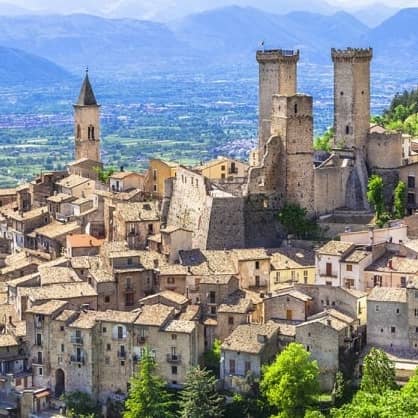
From Matera to Potenza and Melfi
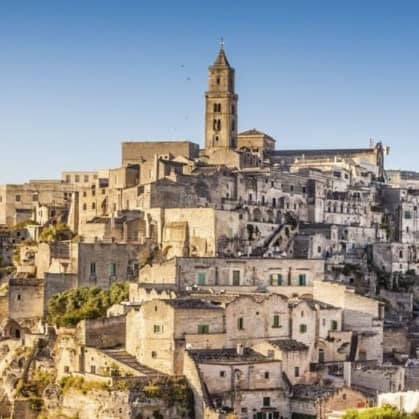
From Tropea to Sila Park and Reggio Calabria

From Naples to Sorrento and Capri
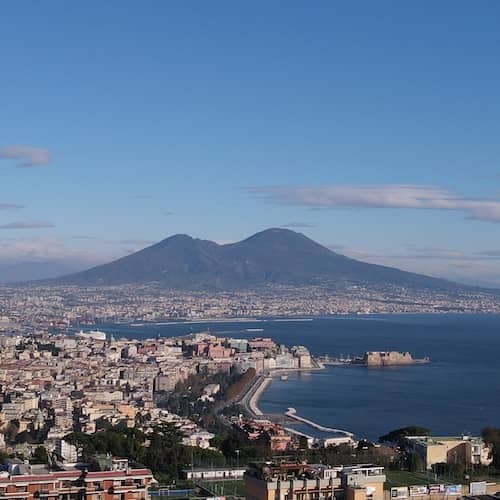
Emilia Romagna
From Bologna to Rimini and Parma
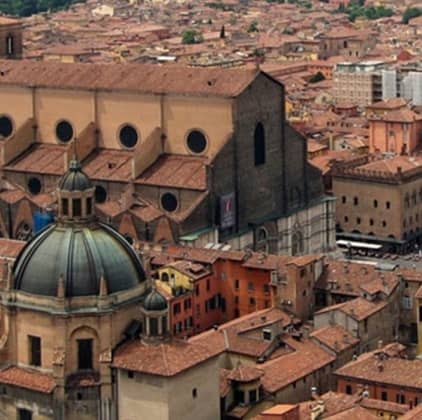
Friuli Venezia Giulia
From Trieste to Udine
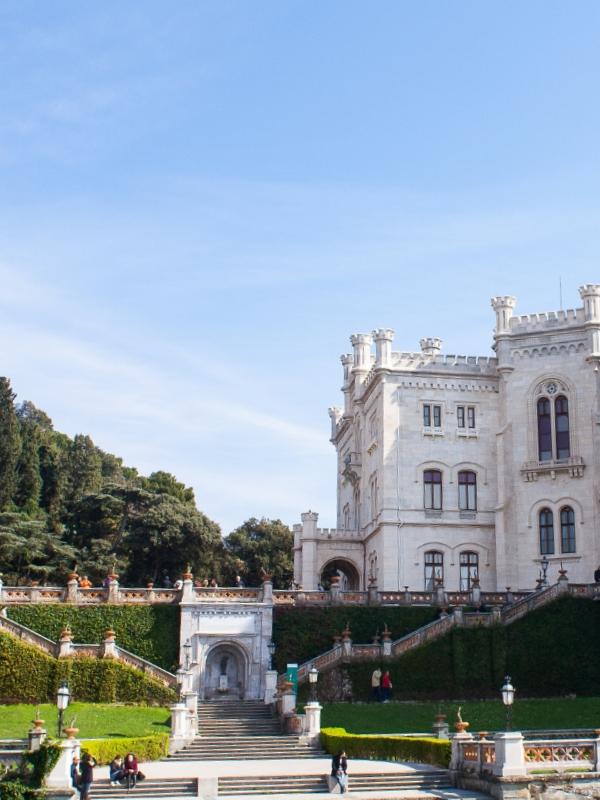
From Rome to Anagni and Viterbo
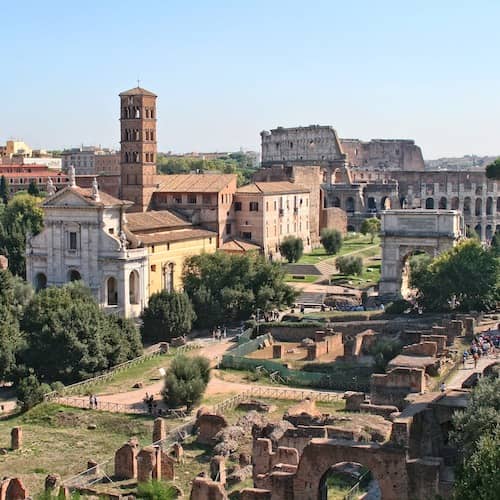
From the Cinque Terre to Portofino and Genoa
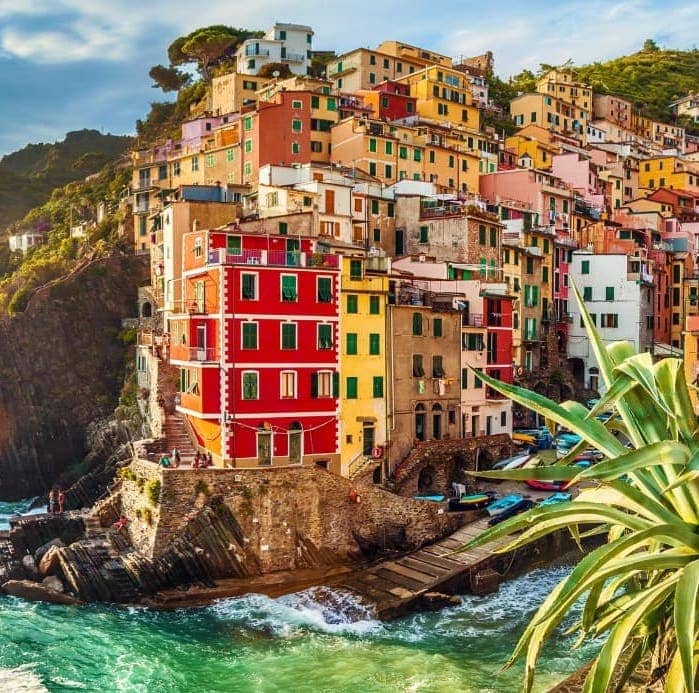
From Milan to Lake Como and Garda
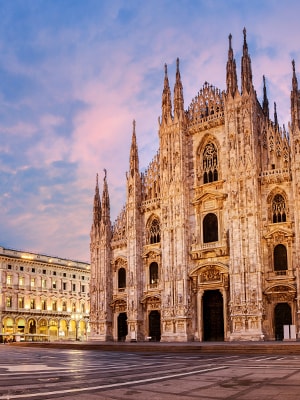
From Pesaro to Urbino and Conero
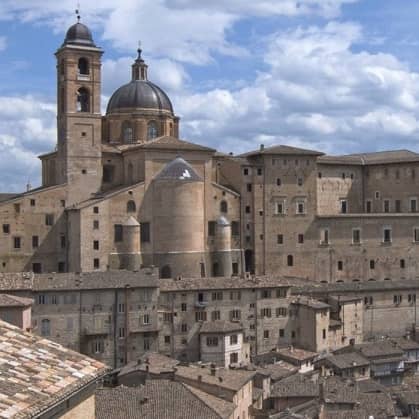
From Termoli to Campobasso
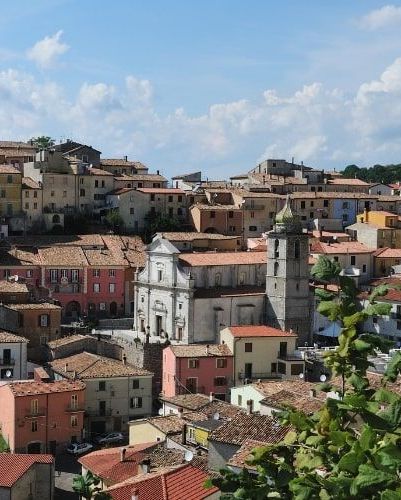
From Turin and Asti and Venaria
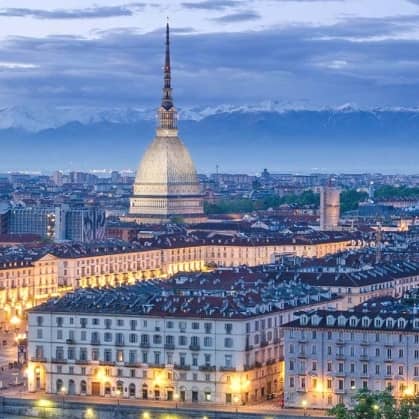
From Polignano a Mare to Alberobello and Vieste

From Cagliari to Alghero and Olbia
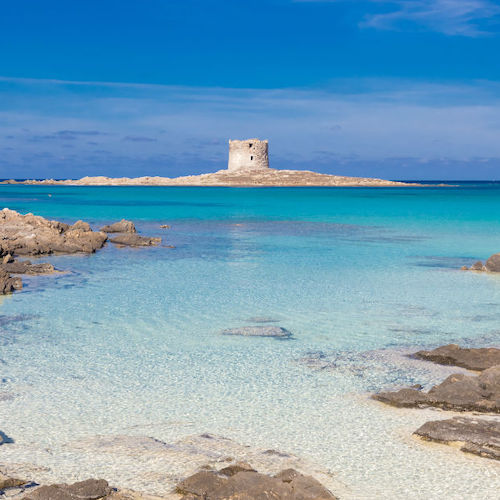
From Palermo to Catania and Agrigento

From Florence to Pisa and Siena

Trentino-Alto Adige
From Dolomities to Ortisei and Riva del Garda
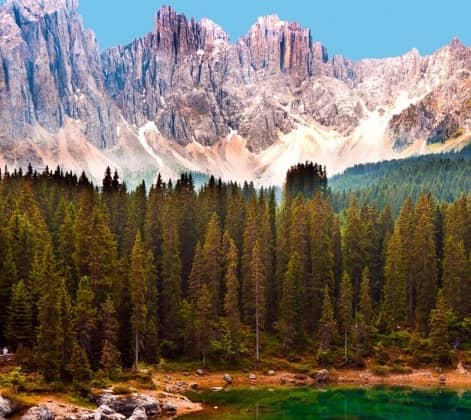
From Perugia to Assisi and Spoleto
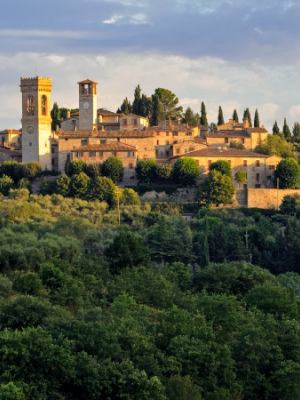
Aosta Valley
From Courmayeur to Aosta
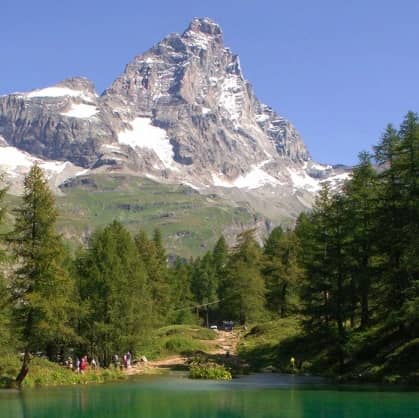
From Venice to Verona and the Dolomites Park
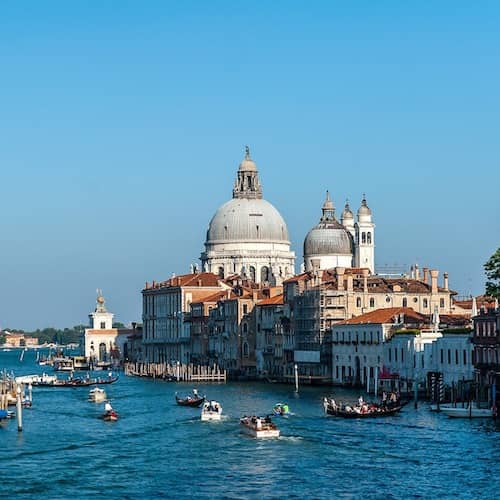
Italy like a local
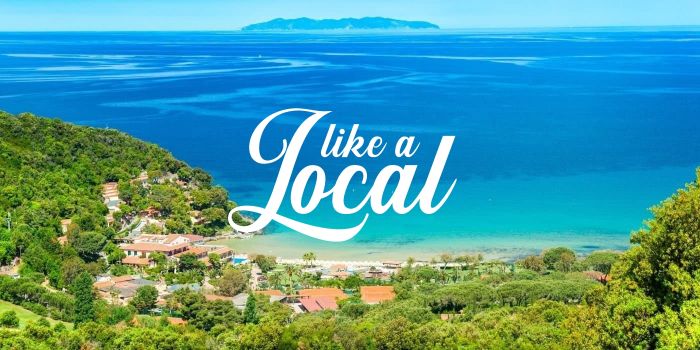
Elba Island like a local: 10 things to do
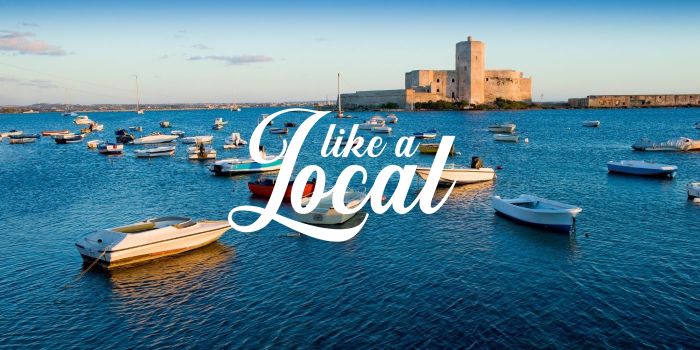
What to do in Trapani like a local: 10 travel tips

Modena: 10 things to do like a local

Palermo: 10 things to do like a local
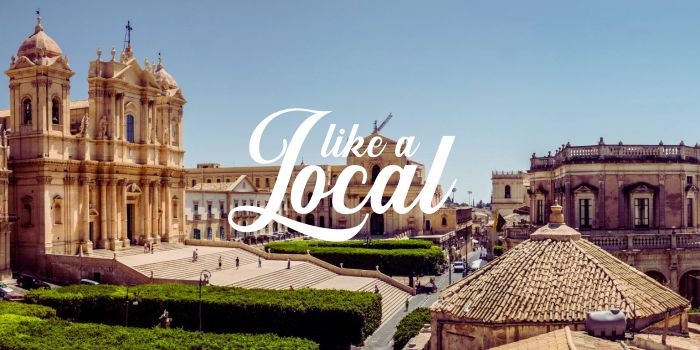
What to do in Noto like a local: 10 travel tips
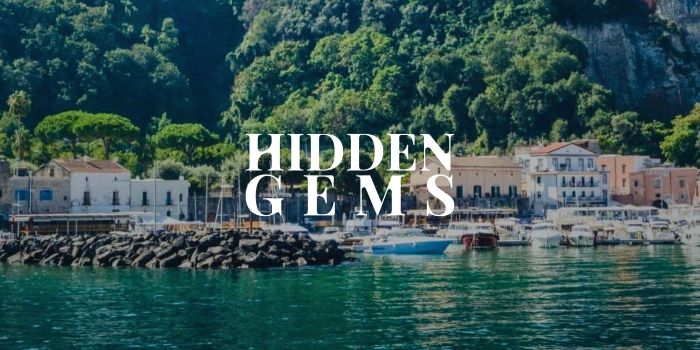
Nerano in Campania: a gem between the Amalfi Coast and ...
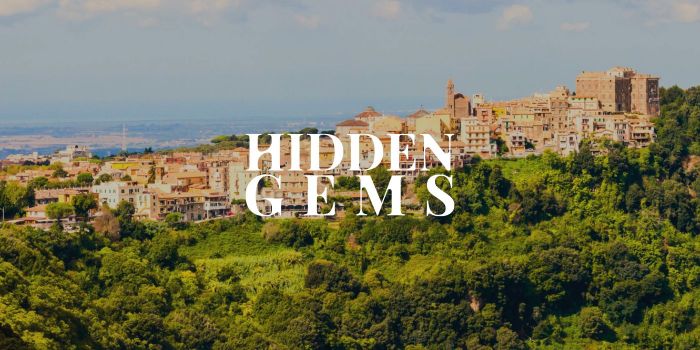
What to see in Genzano di Roma, the town of bread and ...
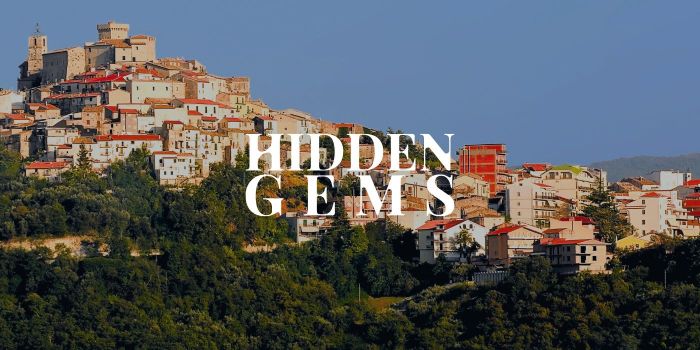
What to see in Casoli, the olive oil town in Abruzzo
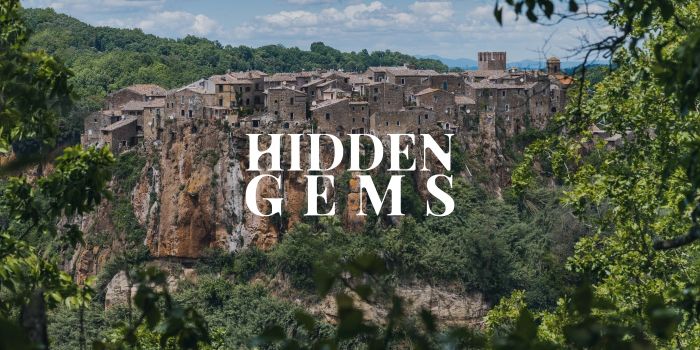
What to see in Calcata, the picturesque village of artists ...
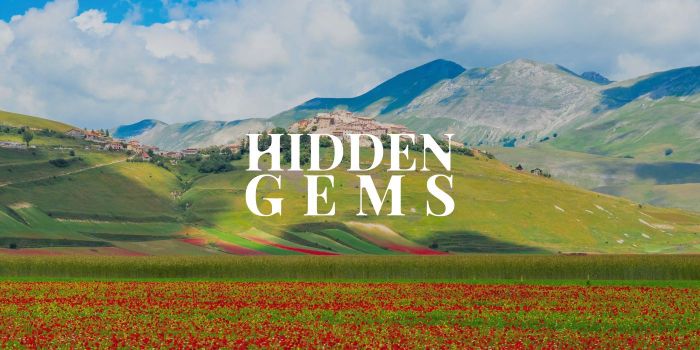
What to see in Castelluccio di Norcia, a landscape jewel of ...
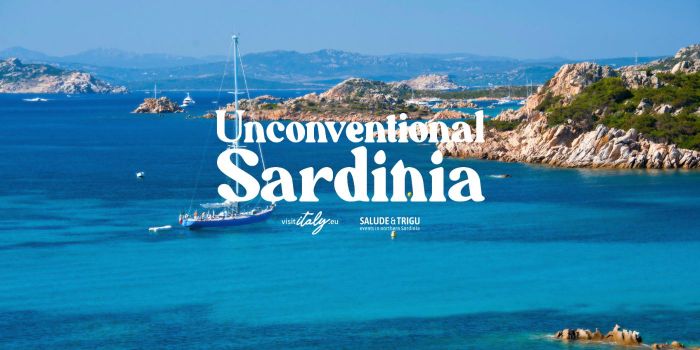
Sailing in Sardinia: a dreamy itinerary in 5 stops to ...
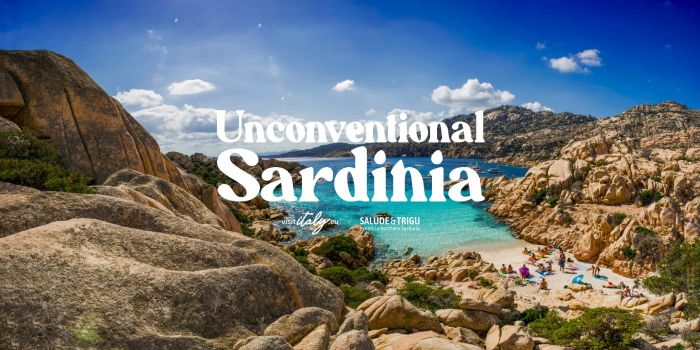
Slow travel in Sardinia: 5 itineraries to experience the ...

Discovering typical Sardinian products on a 5 stops ...
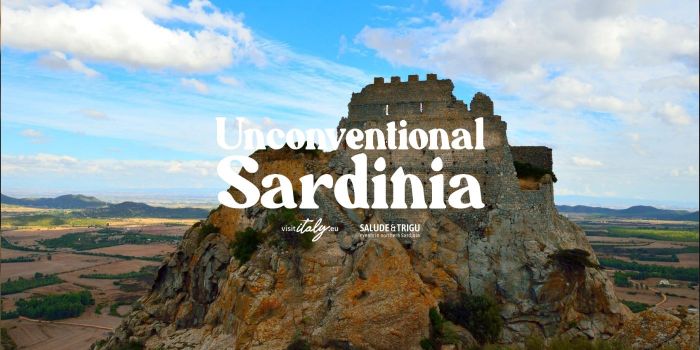
Castles in Sardinia and other wonders: an amazing itinerary ...
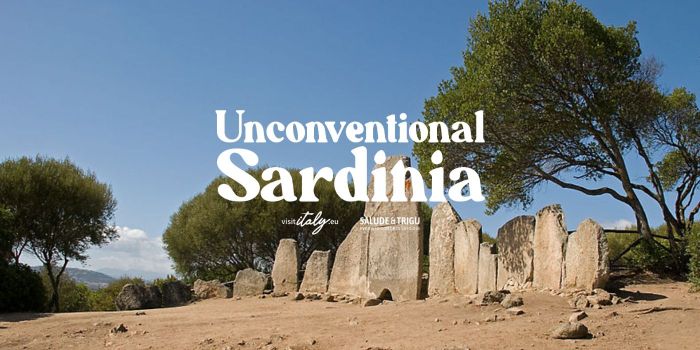
Magical places in Sardinia: a 5 stops itinerary
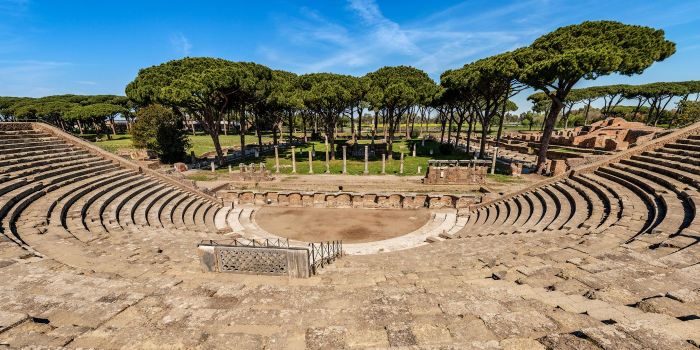
How to get to Ostia: an enchanting journey between sky, ...
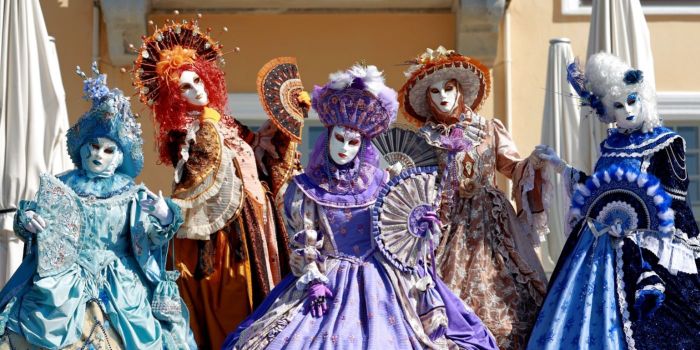
How to go to the Carnival in Venice 2024: guide and tips
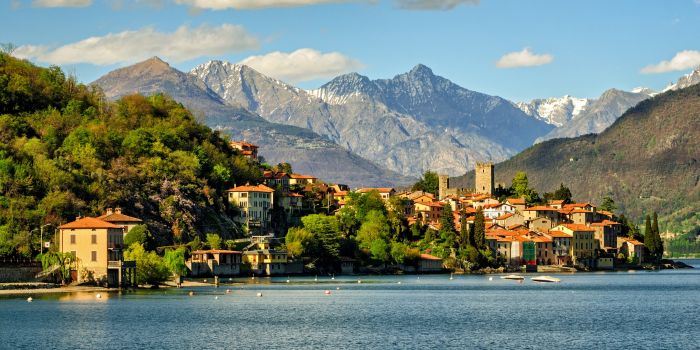
How to reach Lake Como: the complete guide
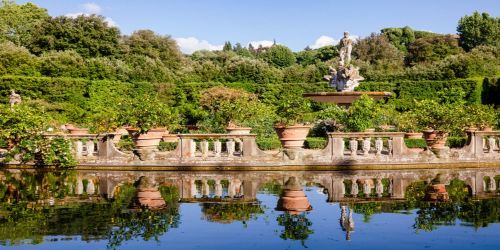
How to get to Boboli Gardens in Florence and visit it
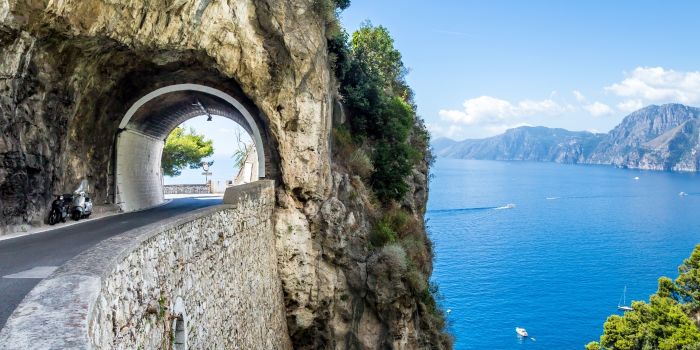
How to get from Ravello to Amalfi: all the ways to get there
What to do in italy.
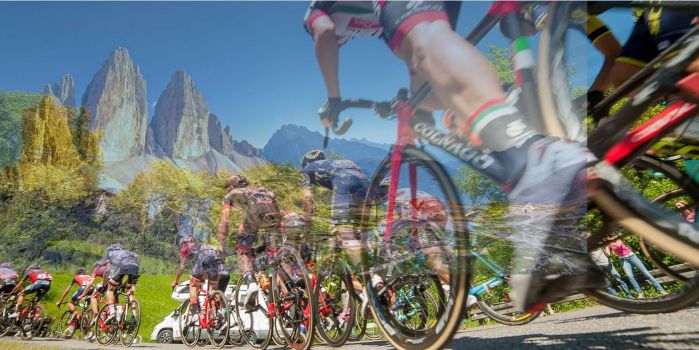
Giro d'Italia 2024: a journey with the "Corsa Rosa" among unique cities and landscapes
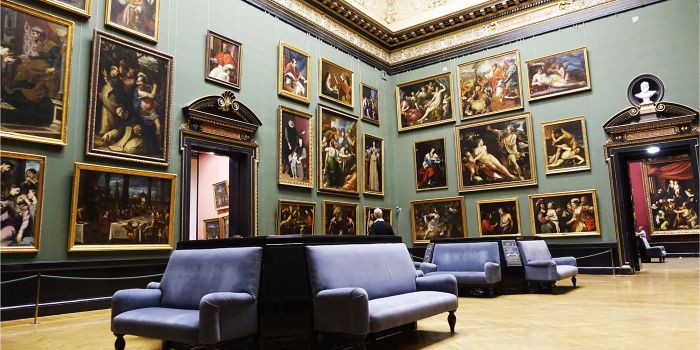
On April 25th free museums throughout Italy: find out where
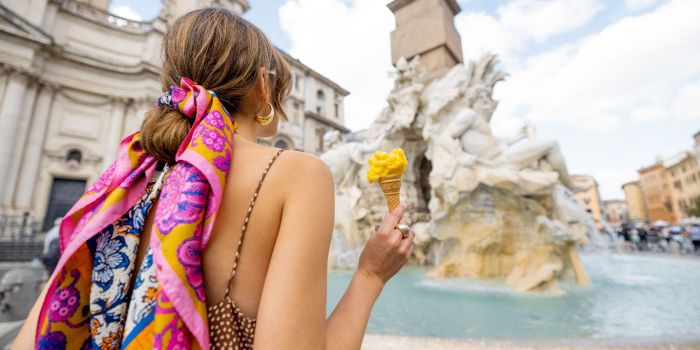
The 10 most attractive sites and museums in Italy at Easter and Easer Monday and 5 less crowded alternatives
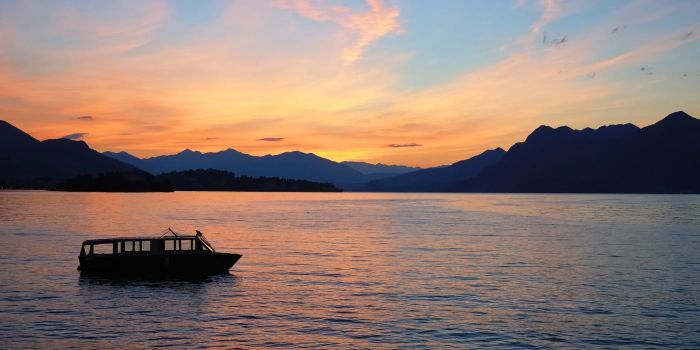
Best cruises in Italy: 10 unforgettable experiences
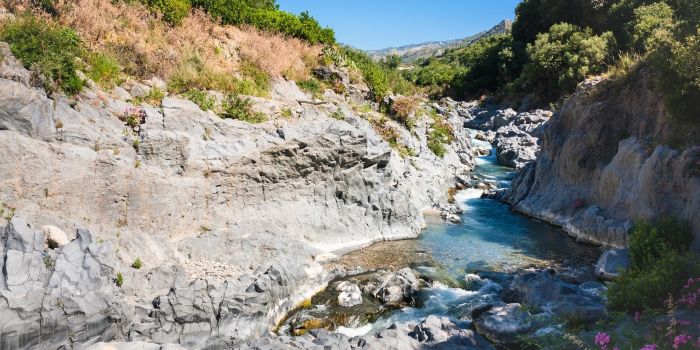

21 outdoor activities in Italy to live this summer
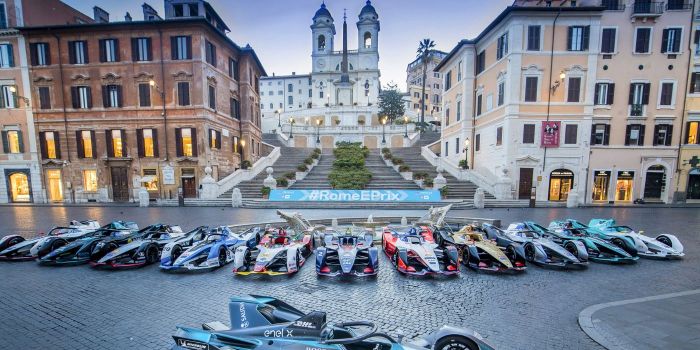
Motor Sports, 10 events in Italy you cannot miss this summer
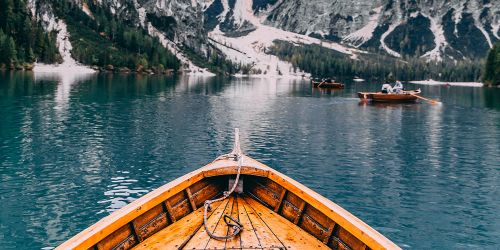
Luxury experiences in Italy: 7 things not to be missed in 2024
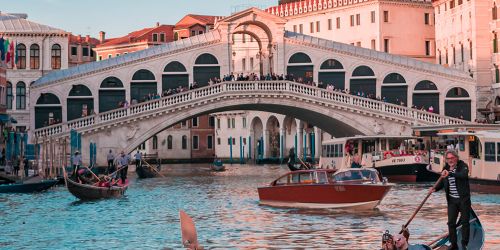
10 things to do before coming to Italy: everything you can plan in advance

The best 20 cycle paths in Italy to discover this spring
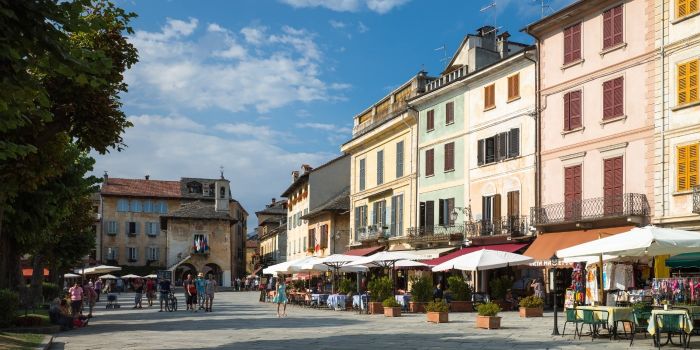
What to do in spring in Italy: must-see destinations in 2023

Thermal baths in Italy: the 20 most famous Italian thermal areas
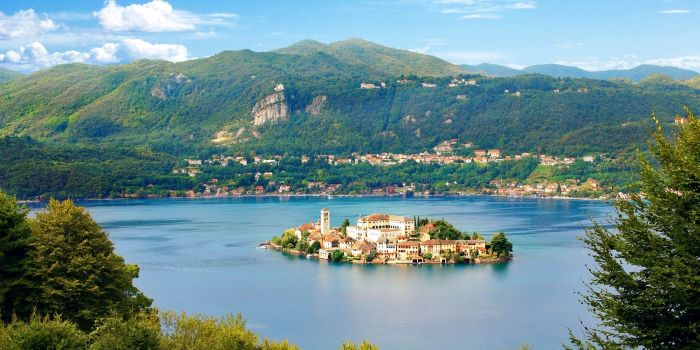
Valentine’s day in Italy
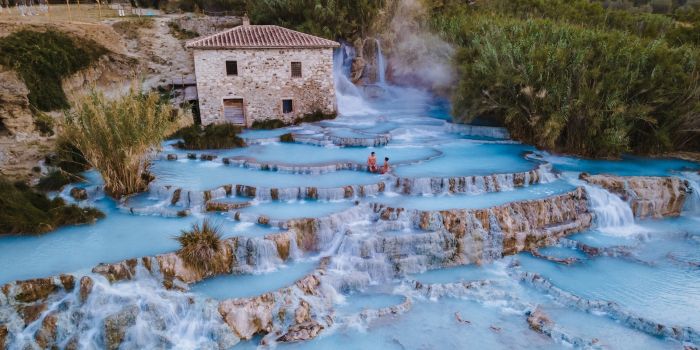
Thermal tourism in Italy: tours to discover the best thermal destinations
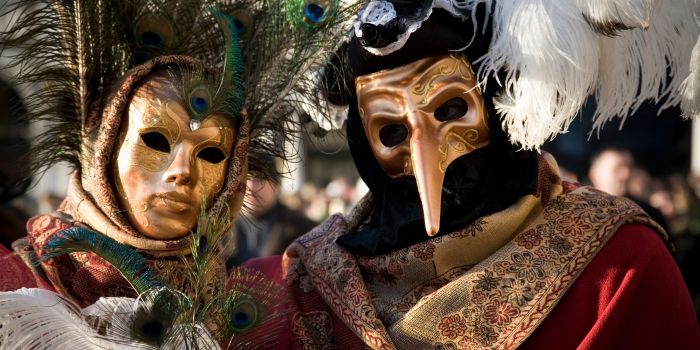
Carnival in Italy: origins, traditions, typical sweets and the most famous masks
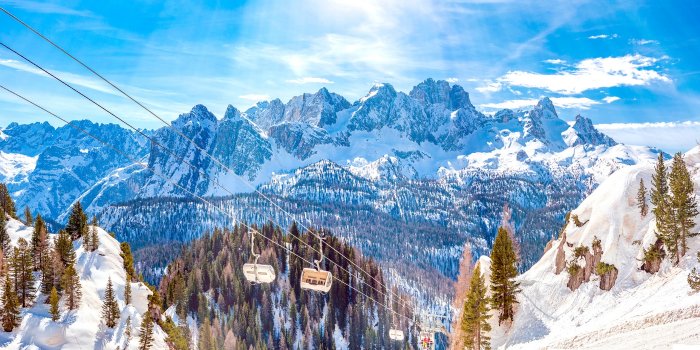
Where to ski in Italy: how to choose slopes and ski areas

New Year's Eve in the Mountains 2023: 20+1 atmospheric destinations in Italy
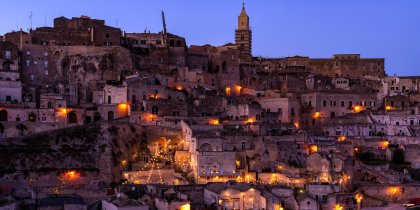
Living cribs in Italy: discover the best nativity scenes

Christmas traditions: curiosities, symbols and typical dishes in Italy

The 20 Most Beautiful Christmas Markets in Italy
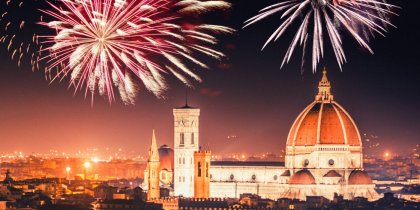
New Year's Eve in Italy: what to do on the last day of the year in Italy in 2024

Italian Christmas songs: 10 tracks for the music of your holidays

Christmas trips in Italy: rites, destinations and regional recipes

Foliage in Italy: visit the most beautiful places of the autumn season
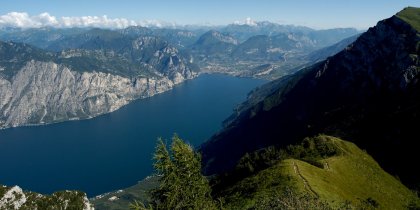
Italian lakes: 4 good reasons to visit them
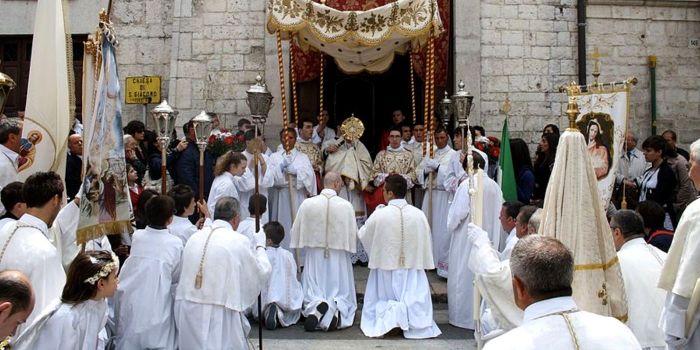
Easter traditions in Italy: 12 unmissable religious festivals

Epiphany in Italy: all the events to not be missed in 2024

The tradition of Easter Monday in Italy

Explore Italy like a local. From iconic attractions to amazing experiences, your journey begins on visititaly.eu 🇮🇹 Tag us and use #visititaly

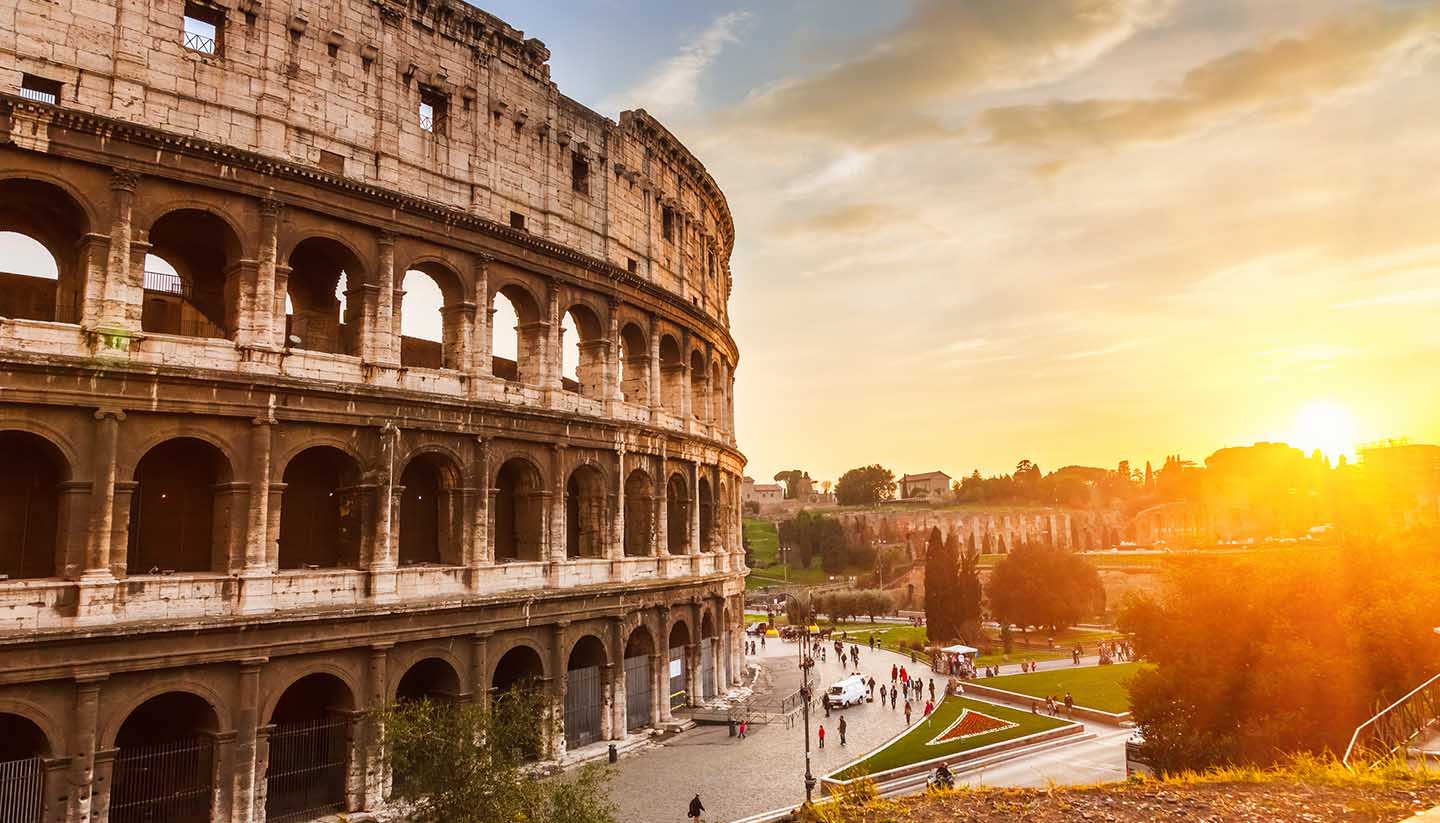
Introducing Italy
About italy.
- Images of Italy
- History, language & culture
- Weather & geography
- Doing business & staying in touch
Plan your trip
- Travel to Italy
- Where to stay
While you’re there
- Things to see & do
- Shopping & nightlife
- Food & drink
- Getting around
Before you go
- Passport & visa
- Public Holidays
- Money & duty free
Book your flights
- Bari Karol Wojtyla Airport
- Bologna Guglielmo Marconi Airport
- Cagliari Elmas Airport
- Catania Fontanarossa Airport
- Florence Airport
- Genova (Genoa) Cristoforo Colombo Airport
- Marche Airport (Ancona Falconara Airport)
- Milan Linate Airport
- Milan Malpensa Airport
- Naples International Airport
- Olbia Costa Smeralda Airport
- Palermo Falcone-Borsellino Airport
- Pisa International Airport Galileo Galilei
- Rome Ciampino Airport
- Rome Leonardo da Vinci Fiumicino Airport
- Trieste – Friuli Venezia Giulia Airport
- Turin Caselle Airport
- Venice Marco Polo Airport
- Verona Villafranca Airport
Ski Resorts
- Bardonecchia
- Sauze d’Oulx
- Aeolian Islands beaches
- Alghero beaches
- Amalfi beaches
- Bardolino beaches
- Capri beaches
- Cefalù Beach
- Garda beaches
- Isle of Ischia beaches
- Portofino and Paraggi Beach
- Rimini beaches
- Sorrento beaches
- Taormina beaches
Cruise Locations
Italy travel guide.
Travelling around Italy remains one of those rare experiences in life – like a perfect spring day or the power of first love – that can never be overrated. In few places do history, art, fashion, food and la dolce vita (“the good life”) intermingle so effortlessly. In Italy you'll find sunny isles, glacial lakes and fiery volcanoes, rolling vineyards and urban landscapes harbouring more UNESCO World Heritage sites than any other country on Earth. Few places offer such variety and few visitors leave without a fervent desire to return.
The artistic and architectural treasures of Rome, Venice, Florence and Naples draw visitors to them like moths to a flame. Not content with Romans conquering most of the known world, the Venetians dispatched Marco Polo to uncharted lands off the map, while Giotto, Leonardo da Vinci, Brunelleschi and Michelangelo kick-started the Renaissance in Western art and architecture.
Look around at all the splendid palaces, paintings, churches and monuments and wonder at the centuries of hard graft and the unswerving devotion to traditional techniques. Like the local art, wine is also designed to elevate your spirits. From the neatly-banded stone terraces of the Cinque Terre, which snake from sea level to terrifying precipices, to the blousy hillsides of Chianti, the riverine plain of the Po valley and the volcanic slopes of Etna, Italian wines are lovingly made to complement the carefully-sourced regional cuisine on your plate.
Much like its food, this country is an endless feast of experiences. No matter how much you gorge yourself, you’ll always feel as though you're still on the first course. Do you go skiing in the Dolomites, or cycling in wine country? Do you dive the sun-split waters of Sardinia, climb Aeolian volcanoes or stalk market stalls in Naples? The choice is dazzling and bewildering. So take the advice of the locals. Slow down, sit back, tuck in that napkin and get ready to begin.
301,340 sq km (116,348 sq miles).
59,801,004 (UN estimate 2016).
201 per sq km.
President Sergio Mattarella since 2015.
Prime Minister Giorgia Meloni since 2022.
Travel Advice
This travel advice page also covers the Vatican City.
The Foreign, Commonwealth & Development Office ( FCDO ) provides advice about risks of travel to help British nationals make informed decisions. Find out more about FCDO travel advice .
Before you travel
No travel can be guaranteed safe. Read all of the advice in this guide and and any specific travel advice that applies to you:
- women travellers
- disabled travellers
- LGBT+ travellers
Follow FCDO travel on, Twitter , Facebook and Instagram . You can also sign up to get email notifications when this advice is updated.
Travel insurance
If you choose to travel, research your destinations and get appropriate travel insurance . Insurance should cover your itinerary, planned activities, and expenses in an emergency.
This page reflects the UK government’s understanding of current rules for people travelling on a full ‘British Citizen’ passport from the UK, for the most common types of travel.
The authorities in Italy set and enforce entry rules. If you’re not sure how Italy’s entry requirements apply to you, contact Italy’s embassy, consulates in the UK .
COVID-19 rules
There are no COVID-19 testing or vaccination requirements for travellers entering Italy.
Public spaces and travel within Italy
If you are visiting a hospital intensive care ward or care home, you must wear a FFP2 mask.
Passport validity requirements
To travel to Italy, you must follow Schengen area passport requirements .
To enter Italy (and all Schengen countries) your passport must:
- have a ‘date of issue’ less than 10 years before the date you arrive. Passports issued after 1 October 2018 are now valid for only 10 years, but for passports issued before 1 October 2018, extra months may have been added if you renewed a passport early
- have an ‘expiry date’ at least 3 months after the day you plan to leave
Check with your travel provider that your passport and other travel documents meet requirements. Renew your passport if you need to.
You will be denied entry if you do not have a valid travel document or try to use a passport that has been reported lost or stolen.
Visa requirements
You can travel to countries in the Schengen area (including Italy) for up to 90 days in any 180-day period without a visa. This applies if you travel:
- as a tourist
- to visit family or friends
- to attend business meetings, cultural or sports events
- for short-term studies or training
If you are travelling to Italy and other Schengen countries without a visa, make sure your whole visit is within the 90-day limit. Visits to Schengen countries within the previous 180 days before you travel count towards your 90 days.
To stay longer (to work or study, for business travel or for other reasons), you must meet the Italian government’s entry requirements. Check which type of visa or work permit you may need with the Italian Ministry of Foreign Affairs or Italian Consulates in London, Manchester or Edinburgh before booking an appointment .
If you are travelling to Italy for work , read the guidance on visas and permits.
If you stay in Italy with a residence permit or long-stay visa, this does not count towards your 90-day visa-free limit.
British citizens who cannot return to the UK before the expiry of their visa or permit, or the end of their visa-free limit should contact their local immigration office (‘questura’) .
Checks at border control
Temporary border checks have been introduced at Italy’s border with Slovenia, allow extra time for crossing the land border. Be ready to show your passport or residency card if you are asked to do so by the border police.
Make sure you get your passport stamped.
If you’re a visitor, your passport must be stamped when you enter or leave the Schengen area (which includes Italy). Border guards will use passport stamps to check you have not overstayed the 90-day visa-free limit for stays in the Schengen area. If your passport was not stamped, border guards will presume you have overstayed the visa-free limit.
If your passport is missing a stamp, show evidence of when and where you entered or left the Schengen area (for example, boarding passes or tickets) and ask the border guards to add the date and location in your passport.
Read about passport stamping if you live in Italy .
At Italian border control, you may need to:
- show proof of your accommodation, for example, a hotel booking confirmation or proof of address if visiting your own property (for example, a second home)
- show proof of insurance for your trip – check FCDO ’s travel insurance guidance
- show a return or onward ticket
- prove that you have enough money for your stay. The minimum amount required depends on your accommodation
- follow procedures if you are hosting a guest at your property in Italy
Registering with the authorities
Unless you are staying in a hotel or B&B, if you are entering from a Schengen area country (for example, France) you must declare your presence (‘dichiarazione di presenza’) to the local immigration authority (‘questura’) within 8 days of arriving. The ‘questura’ will provide a form to complete.
You can find more information on the Ministry of Foreign Affairs or Italian police force websites.
Accommodation and those aged 17 and under
Under Italian law, if you are aged 17 and under you cannot check into hotels or holiday accommodation without an accompanying adult.
Vaccination requirements (other than COVID-19)
At least 8 weeks before your trip, check the vaccinations and vaccination certificates you may need on TravelHealthPro’s Italy guide .
Customs rules
There are strict rules about goods that can be brought into and taken out of Italy. You must declare anything that may be prohibited or subject to tax or duty.
Taking food into Italy
You cannot take meat, milk or products containing them into EU countries . There are some exceptions such as powdered baby milk, baby food, and special food or pet feed required for medical reasons.
There is a high threat of terrorist attack globally affecting UK interests and British nationals, including from groups and individuals who view the UK and British nationals as targets. You should remain vigilant at all times.
UK Counter Terrorism Policing has information and advice on staying safe abroad and what to do in the event of a terrorist attack. Find out how to reduce your risk from terrorism while abroad .
Terrorism in Italy
Terrorist attacks in Italy cannot be ruled out.
Events in Israel and the Occupied Palestinian Territories
Italian authorities have increased security around some Jewish community sites due to events in Israel and the Occupied Palestinian Territories. Stay aware of your surroundings, stay away from demonstrations and follow the advice of local authorities.
Political demonstrations
Demonstrations may occur with little or no warning in cities. Avoid any protests, political gatherings, or marches.
Crime levels are generally low but there are higher levels of petty crime (particularly bag snatching and pickpocketing) in the big city centres, such as Rome and Milan. Thieves can use a variety of methods to distract you.
Public transport
Take care on public transport and in crowded areas in city centres including main stations and particularly in and around Termini station in Rome, where incidents of street muggings have been reported.
Be particularly careful with your belongings on trains to and from airports and cruise ship ports in Italy (especially Fiumicino airport), as well as on the Circumvesuviana train between Naples and Sorrento, and when unloading your baggage from trains and coaches.
Theft from cars
Robberies from parked cars have been reported, in Rome, particularly the Colosseum area, Ostia, Milan and Pisa. Coastal areas and towns have been targeted as well as motorway service stations. Always lock your vehicle, never leave valuables in cars and avoid leaving luggage in cars for any length of time. Thieves may use a variety of methods to distract you or encourage you to stop your car, including asking for help or directions or pointing out a fictional fault with your car.
Use a hotel safe for valuables where possible.
Be drink aware
Drinks served in bars overseas are often stronger than those in the UK. Be careful about taking drinks from strangers or leaving your drinks unattended. Victims of spiked drinks have been robbed and sometimes assaulted.
Laws and cultural differences
Personal id.
By law, you must always be able to show some form of identification. In most cases a photocopy of the data page of your passport should be enough, but you may also be asked for a second form of photo ID. The police will normally ask for your full passport if you are stopped while driving.
Tickets on public transport must be validated in a ticket machine before you start a journey. Officials patrol public transport and will issue an on the spot fine of 100 to 500 euros (reduced to 50 euros if paid immediately) if you don’t hold a validated ticket.
Tourist tax
Many major cities in Italy impose a small tax on tourists. The tax is paid at your hotel and is usually not included in any pre-paid arrangements or package deal. The rate of tax varies from city to city and can depend on the star rating of the hotel. Hotels often ask for payment in cash. Make sure you get a receipt. For more information, check with the local tourist information office.
If you are visiting Venice, you may need to pay an access fee.
Visit Venice town hall for information on the dates access fees will be charged, exemptions and how to make a payment.
Public offences
Some Italian towns and cities have specific laws, which you may be fined if you break. For example, there may be laws to prevent you from:
- dropping litter
- sitting on monument steps
- eating and drinking next to main churches, historic monuments and public buildings
- defacing historic monuments
It’s also an offence to enter or bathe in public fountains in many towns and cities, including Florence and Rome. A fine of up to 10,000 euros can be imposed for urinating in a public place.
On the island of Capri, you must not use or bring onto the island any disposable plastic objects such as bags, cutlery, plates, cups, food packaging, trays and straws. If you do, you can be fined up to 500 euros.
Illegal traders operate on the streets of all major Italian cities. It is illegal to buy items from unlicensed street traders. If you do, you could be stopped by the local police and fined.
It’s illegal to remove sand, shells or pebbles from coastal areas in Italy. Doing so may result in large fines. It’s also forbidden to collect various species of flowers, plants and herbs from mountain and wooded areas. For more information, check with the regional authorities of the area you’re visiting.
Winter sports
If you are planning a skiing holiday, take advice on weather and avalanche conditions before you travel and familiarise yourself with local skiing laws and regulations.
You can contact the Italian State Tourist Board for advice on safety and weather conditions before you travel.
Regulations for the ski season include:
- third party liability insurance is a legal requirement and can be purchased locally with a ski pass
- you must wear a helmet if you are under 18
- you must not eat or drink on ski lifts or boarding areas
- you must not climb a slope with snowshoes unless in a case of emergency
- you must not ski under the influence of alcohol or drugs
Off-piste skiing is very dangerous. Follow all safety instructions meticulously given the dangers of avalanches in some areas and go with a qualified guide. For more information about the avalanche risk, visit the European Avalanche Warning Service website.
Check your insurance covers off-piste activity. It is a legal requirement for skiers and snowboarders to carry tracking equipment, a snow probe and a shovel if they go off-piste.
Find more information about staying safe while skiing and preparing for winter sports abroad .
Outdoor activities and adventure tourism
Hiking, mountaineering and other adventure sports have specific risks.
If you’re taking part in these activities, check that the company is well- established in the industry and that you’ve arranged for your insurance to cover this specific activity.
For sports activities like skiing, potholing and mountaineering, and for sports classed as particularly dangerous (for example off-piste skiing, mountain biking, climbing, paragliding or BASE jumping), your insurance should include:
- mountain rescue services
- helicopter costs
- repatriation to your country of residence or possible transfer to neighbouring countries for treatment
Check weather forecasts and conditions and make sure you’re properly equipped for the worst-case scenario with items such as a map, compass, GPS and telecommunication equipment.
Risks are greater if you undertake any activity alone. You may want to hire a guide for expert advice. Always leave copies of your itinerary with someone.
Local travel
Only use officially licensed taxis. These will have a taxi sign on the roof and a taxi company name and number written on the side. Taxis should be called or taken from an official rank rather than hailed in the street.
Transport strikes are often called at short notice. You can find information on the Ministry of Transport website (in Italian).
Traffic can be busy, fast and chaotic, especially in the larger cities. Take care when crossing roads. Pedestrians should cross roads using a crossing. You can be fined for crossing the road if you are within 100 metres of a pedestrian crossing but do not use it. Drivers don’t always stop, even though they are required to. The green pedestrian crossing signal also allows cars to turn right onto the crossing, so cross with caution.
Road travel
If you are planning to drive in Italy, see information on driving abroad and read the RAC guide .
You may also want to look at the European Commission , AA and Italian Police guides on driving in Italy.
Licences and documents
If you are visiting Italy, you can drive on a full, valid UK driving licence, insurance and vehicle documents. If you’re living in Italy, or planning to live there check the living in Italy guide for information on requirements for residents.
Driving a British car abroad
You may need a UK sticker to drive your car outside the UK. Since 2021, UK stickers have replaced GB stickers. Check the government guidance on displaying number plates for more information on what to do if you are driving outside the UK.
Traffic restrictions
Private and hire cars must not enter the historic centre of many Italian cities without an official pass. You can buy a pass from most car hire companies. The boundaries of historic centres are usually marked with the letters ZTL in black on a yellow background. If you pass this sign, your registration number is likely to be caught on camera and you will be fined.
There is a congestion charge for Milan city centre. For more information see the Milan Municipality website.
To reduce pollution, city authorities in Rome sometimes restrict traffic on specific days so vehicles with odd or even number plates are not allowed on the roads in the green band (fascia verde) area, which covers most of Rome. For more information, including exceptions, see the Rome Municipality website .
Extreme weather and natural disasters
For severe weather warnings, visit the European Meteorological Services website .
Forest fires
Forest fires are a risk during the extended summer months. They are highly dangerous and unpredictable. Check latest alerts and weather forecast and follow advice of local authorities if you’re considering travelling to affected areas. Take care when visiting or driving through woodland areas and report fires to the emergency services.
For information on what to do in the event of a forest fire, visit the Civil Protection Department website .
Heavy rainfall is common throughout Italy in winter, which can cause local flooding. Monitor local media, weather reports and follow the advice of local authorities in affected areas.
High waters are a common occurrence in Venice during the winter months and can cause flooding in parts of the city.
Earthquakes
Many parts of Italy lie on a major seismic fault line, which means that minor tremors and earthquakes are a regular occurrence. Learn more about what to do before, during, and after an earthquake .
Before you travel check that:
- your destination can provide the healthcare you may need
- you have appropriate travel insurance for local treatment or unexpected medical evacuation
This is particularly important if you have a health condition or are pregnant.
Emergency medical number
Dial 118 and ask for an ambulance.
Contact your insurance or medical assistance company promptly if you’re referred to a medical facility for treatment.
For more information, read our guidance on healthcare when travelling in Europe .
Vaccinations and health risks
At least 8 weeks before your trip check:
- the latest information on vaccination recommendations and health risks in TravelHealthPro’s Italy guide
- where to get vaccines and whether you have to pay on the NHS travel vaccinations page
Altitude sickness is a risk in parts of Italy, including the Alps and the Dolomites. More information about altitude sickness is available from TravelHealthPro .
There have been cases of the mosquito-borne disease, dengue fever, in Italy. You should take appropriate precautions to avoid being bitten by mosquitoes .
The legal status and regulation of some medicines prescribed or bought in the UK can be different in other countries.
TravelHealthPro explains best practice when travelling with medicines .
The NHS has information on whether you can take your medicine abroad .
Health insurance cards
Apply for a free UK Global Health Insurance Card ( GHIC ) before leaving the UK. If you already have a European Health Insurance Card ( EHIC ) it will still be valid as long as it remains in date.
The GHIC or EHIC entitles you to state- provided medical treatment necessary during your trip. Any treatment provided is on the same terms as Italian nationals. If you don’t have your EHIC with you or you’ve lost it, contact the NHS Overseas Healthcare Team .
It’s important to take out appropriate travel insurance for your needs. A GHIC or EHIC is not an alternative to travel insurance and you should have both before you travel. A GHIC or EHIC does not cover all health-related costs, for example, medical repatriation, ongoing medical treatment and non-urgent treatment. Read more about what your travel insurance should cover .
You can find details of English-speaking doctors in Italy on our list of healthcare providers .
GHIC and or EHIC cover state healthcare only, not private treatment. You will be responsible for the cost of any treatment provided by a private doctor or private clinic.
Pharmacies and doctors
Unlike in the UK, you will need to go to a pharmacy to get most over-the-counter medicines. Pharmacies are widely available and are usually identified by a green cross. UK prescriptions are not accepted, though you may be able to buy an equivalent medication from the pharmacy. Alternatively, you can visit an Italian GP to obtain a local prescription. Prescription medicines are not free in Italy, but with an EHIC or GHIC , and an Italian prescription, you will pay a reduced rate.
Travel and mental health
Read FCDO guidance on travel and mental health . There is also guidance on TravelHealthPro .
The Foreign, Commonwealth & Development Office ( FCDO ) cannot provide tailored advice for individual trips. Read this travel advice and carry out your own research before deciding whether to travel.
Emergency services in Italy
If you need to contact the emergency services, call these numbers:
Ambulance: 118
Police: 112
You can also download the 112 Where Are U app , the official European emergency number app. It is only available in some parts of Italy.
Contact your travel provider and insurer
Contact your travel provider and your insurer if you are involved in a serious incident or emergency abroad. They will tell you if they can help and what you need to do.
Refunds and changes to travel
For refunds or changes to travel, contact your travel provider. You may also be able to make a claim through insurance. However, insurers usually require you to talk to your travel provider first.
Find out more about changing or cancelling travel plans , including:
- where to get advice if you are in a dispute with a provider
- how to access previous versions of travel advice to support a claim
Support from FCDO
FCDO has guidance on staying safe and what to do if you need help or support abroad, including:
- finding English-speaking lawyers , funeral directors and translators and interpreters in Italy
- dealing with a death in Italy
- being arrested in Italy
- getting help if you’re a victim of crime
- what to do if you’re in hospital
- if you are affected by a crisis , such as a terrorist attack
Find more support for British nationals abroad .
Contacting FCDO
Follow and contact FCDO travel on Twitter , Facebook and Instagram . You can also sign up to get email notifications when this travel advice is updated.
Help abroad in an emergency
If you are abroad and you need emergency help from the UK government, contact the nearest British embassy, consulate or high commission .
You can also contact FCDO online .
FCDO in London
You can call FCDO in London if you need urgent help because something has happened to a friend or relative abroad.
Telephone: 020 7008 5000 (24 hours)
Find out about call charges
Risk information for British companies
The Overseas Business Risk service offers information and advice for British companies operating overseas on how to manage political, economic, and business security-related risks.

Related Articles

24 hours in: Florence
As the birthplace of the Renaissance period, opera and even gelato, Florence has enough cultural heritage to fill a whole lifetime.
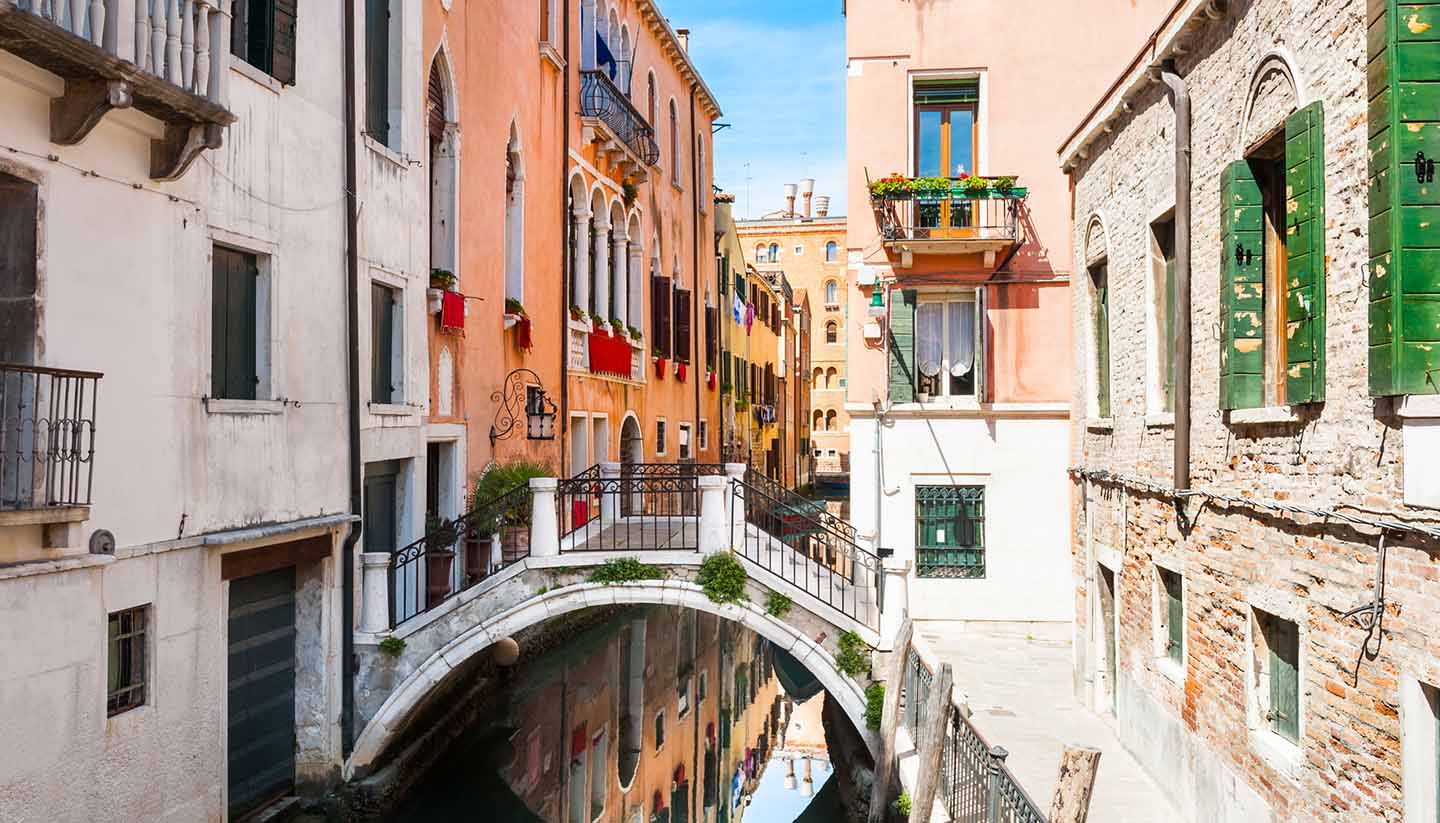
‘They’ll burn your boat’: Paddling against the patriarchy
Almost all of Venice's Gondolieri are men. Paula Hardy meets Jane Caporal, the renegade sticking her oar in to change all that.
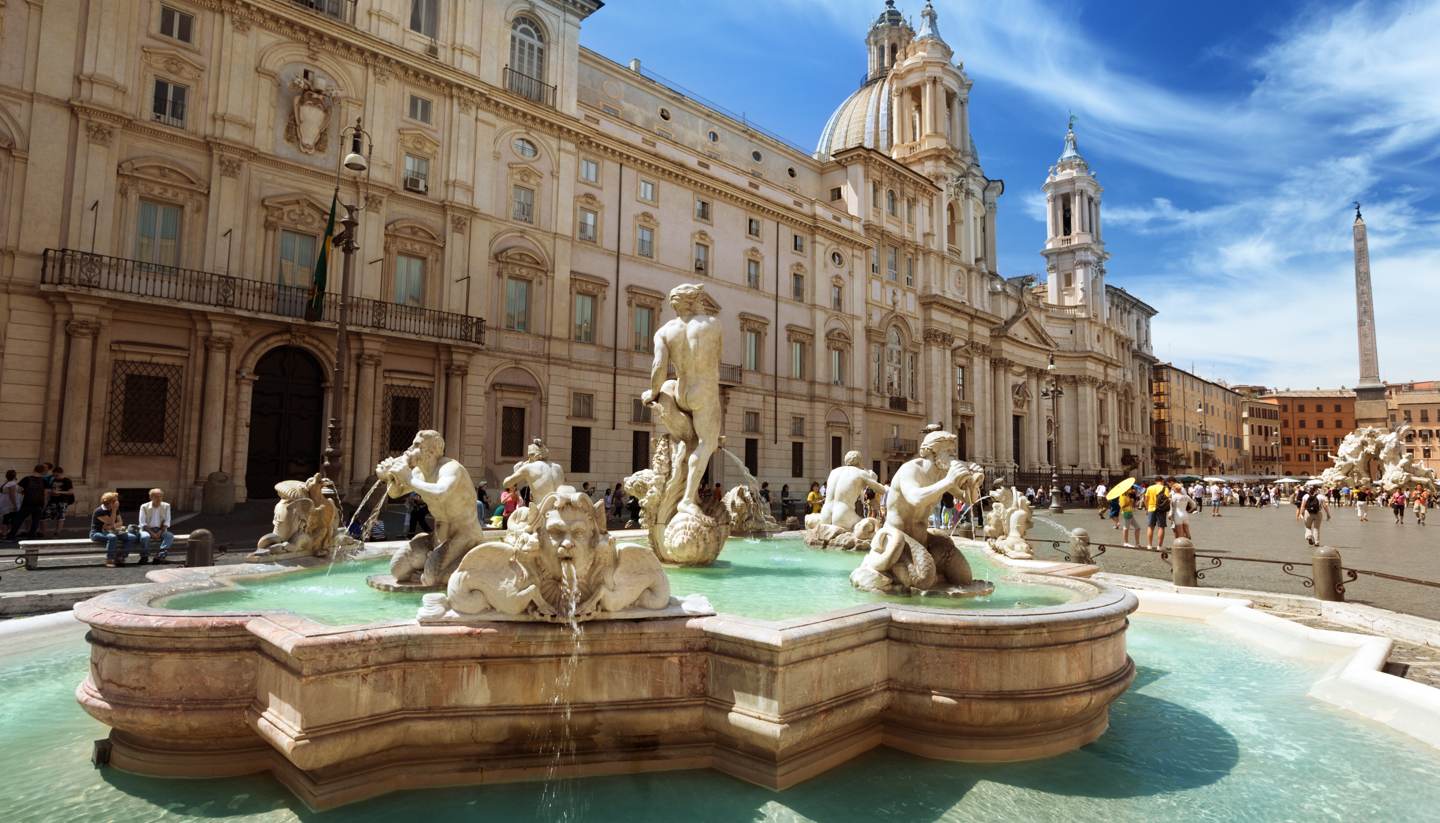
City Highlight: Rome
From world-famous ruins to chic cafés and must-try specialties, in Italy’s cosmopolitan capital it’s certainly true that “one lifetime is not enough”
Book a Hotel
© Columbus Travel Media Ltd. All rights reserved 2024
Protect Your Trip »
Best places to visit in italy.
Tourists and travel experts have long agreed that Italy is a special place, so much so that the country has become a de facto bucket list destination for just about everyone. Famous for its incredible food, rich historical sites, highly regarded art, charming small towns and picturesque cities, countrysides and coastlines, it's safe to say Italy's offerings are unmatched. U.S. News rounded up the best places to visit in Italy considering a number of factors, from affordability and seasonality to sights and crowds, to help you decide exactly where to go. Have a favorite destination in Italy? Cast your vote below to influence next year's ranking.
Amalfi Coast
Cinque terre, tuscany, italy.

A standard stop on many European vacation itineraries , Rome is not to be missed. Italy’s capital city is a globally renowned cultural and historical powerhouse, boasting everything from ancient ruins and tranquil parks to Michelin-starred restaurants. Here, you'll find the most important relic from the Roman Empire (the Colosseum), some of Michelangelo's greatest works (in the Sistine Chapel), an 18th century Baroque-style fountain (the Trevi Fountain) and, of course, the center of Catholicism (Vatican City). Other can’t-miss tourist attractions in the Eternal City include the Pantheon, the Roman Forum and St. Peter’s Basilica, the world’s largest church.

Situated in the scenic Tuscan valley, Florence woos travelers with old-world avenues leading to picturesque piazzas big and small. While you're soaking up the city's splendor, make sure to stop by the Piazza del Duomo, where the breathtaking Santa Maria del Fiore Cathedral is located, and the romantic Ponte Vecchio, a 14th century bridge overlooking the Arno River. Once central to the Renaissance movement, Florence also offers art aficionados the opportunity to see famous pieces by Michelangelo and other iconic artists of that period. As an added bonus, Florence is ideal for a daytrip to the Chianti wine region.

The journey to the cliff-side Amalfi Coast involves heart-stopping, hairpin turns on narrow roads, but travelers agree this is part of the fun. The region covers more than 30 miles of coastline and is home to 13 colorful seaside towns, each with its own story. Positano and Amalfi are the most popular, housing numerous hotels and sights. While here, hike, relax on the beach and eat to your heart's content (there are multiple Michelin-starred restaurants along the Amalfi Coast). For something more off-the-beaten-path, set your sights on Atrani. This humble fishing village boasts medieval whitewashed architecture, winding alleys and authentic Italian charm.

There are few destinations in the world that are quite like Venice. Its uniqueness can largely be attributed to the canals that run through this northern Italian city like roads, carrying water taxis and buses in addition to its fleet of famous gondolas. As such, there is a palpable bustle here that may surprise some first-timers. For a relaxing Venice vacation, seek out the smaller streets and canals away from the busy Grand Canal and St. Mark's Square. Just be sure to stroll across Rialto Bridge and tour the grand St. Mark’s Basilica at least once.

Cinque Terre, located on Italy's northern Ligurian coast, is made up of five picturesque towns – Manarola, Monterosso, Vernazza, Corniglia and Riomaggiore. Manarola, the region’s oldest town, boasts scenic vineyards, olive groves and a centuries-old bell tower. Meanwhile, Vernazza, often considered one of Italy’s most beautiful villages, is well-known for its picture-perfect houses and grand medieval castle. The Cinque Terre offers an abundance of exciting activities, from boat tours and hiking to cooking classes and wine tastings. While here, don’t forget to save time for exploring the cliff-side Footpath Monterosso trail, a beautiful hiking path connecting Vernazza and Monterosso.

For centuries, this small island off the coast of southern Italy has attracted plenty of famous faces, from emperors to movie stars, due to its gorgeous scenery. Some of Capri's most amazing sights are best seen by boat, including the Faraglioni rock formations and the Blue Grotto, where sunlight turns the water into an unbelievably vivid shade of blue. On land, the Gardens of Augustus and Villa Jovis, an imperial palace, also provide spectacular views. Meanwhile, in the town center, visitors will find high-end shops and restaurants where they can relax after a long day of sightseeing.

Considered the land of the sirens in Greek mythology, Sorrento continues to lure people with its charm and stunning views. Here, vacationers can explore enchanting piazzas or relax near the water before watching the sun set behind the cliffs. Plus, lemons are big in Sorrento – both in size and in popularity – and the area is known as one of the best places in the world to taste authentic limoncello, a lemon-flavored liquor. It's also the perfect base for daytrips and boat tours to nearby Capri, the Amalfi Coast, Pompeii and other popular Italian locales.

Italy's second-largest city is best known for its high fashion, playing host to Milan Fashion Week each winter and home to iconic fashion houses including Giorgio Armani, Prada and Versace. Visitors can peruse such high-end brands at the dazzling Galleria Vittorio Emanuele II shopping arcade. But Milan's architecture (including the Gothic Milan Cathedral and grand Teatro alla Scala opera house) and sites like Castello Sforzesco (which holds nearly 10 museums and exhibitions) are worth a visit on their own. What's more, the city is incredibly walkable, so feel free to explore on foot – with or without designer stilettos.

Located about 30 miles from Verona, Lake Garda tends to be more approachable and wallet-friendly (if a bit more touristy) than Lake Como. Activities in this recreational hot spot include swimming and windsurfing, as well as hiking and taking a funicular to Mount Baldo. Lake Garda also attracts families with Gardaland Resort, which includes themed hotels as well as an amusement park, water park and aquarium. If you're looking to get away from the crowds, go beyond the main tourist sites to the quieter northern side of the lake, where you'll find the highest mountains and tucked-away towns.

If you're looking for Italy without the crowds, Tuscany is really all it's cracked up to be. Italy's famous countryside offers travelers spectacular landscapes dotted with romantic villas and castles equipped with wineries and superb restaurants. Don’t miss out on a visit to the walled city of San Gimignano, a UNESCO World Heritage Site famous for its medieval towers. What's more, Tuscan locales like Pisa (which offers much more than its leaning tower) and Siena are an easy drive from top destinations such as Bologna and Cinque Terre, perfect for daytrippers who don't want to stay in one place for too long.

Assisi, a medieval town with religious connections, sits on a hilltop in the lush landscapes of Umbria, just more than 100 miles north of Rome. This peaceful town's biggest draws are its sights dedicated to Saint Francis of Assisi, one of Italy's patron saints, including the Basilica of San Francesco, which houses his tomb as well as colorful frescos, and The Woods of San Francesco. Beyond its religious heritage, Assisi is worth a visit for its picturesque streets and sweeping views, while its location also makes it ideal for a truffle hunting excursion or wine tasting tour.

As the location of several ancient Greek legends, Sicily has an almost mythical quality. Once you visit for yourself, you'll see why so many writers were inspired by this island, which happens to be the largest in the Mediterranean. Be enchanted by Sicily's crystal-clear waters and golden beaches. Marvel at Mount Etna, the highest active volcano in Europe, or try hiking up it in summer or skiing down it in winter. Also save time for taking in the many cultures that have called this island home at its various cathedrals and archaeological sites.

This former Roman city in southern Italy is equal parts chilling and impressive. Pompeii was left almost completely intact after it was buried in ash after the eruption of Mount Vesuvius in A.D. 79. Its astonishingly well-preserved ruins now provide present-day visitors a glimpse into what life was like during ancient times. True history buffs might also enjoy a trip to nearby Herculaneum, another city that was preserved by the same eruption, while more adventurous explorers should consider hiking to the top of Mount Vesuvius for jaw-dropping panoramas of the Bay of Naples and the Sorrento Peninsula.

Best known for its Shakespeare ties, Verona appeals to fans of "Romeo and Juliet" with themed tours of the sights that allegedly inspired the play. But there is more to this city than its literary link. Verona, located about 15 miles east of Lake Garda, is also home to several impressive attractions and historic buildings (the whole city is a UNESCO World Heritage Site, after all). Travelers won't want to miss the Arena di Verona, a first-century Roman amphitheater that is still in use, and Giardino Giusti, a beautifully sculpted Renaissance garden.

Sardinia provides the best of both worlds. Costa Smeralda is all about luxury, with its lush beaches and coves overlooking yacht-filled waters. And away from all of the glitz and glamour of Costa Smeralda, you'll find a more laid-back side of the island, including small medieval towns where Sardinians still practice sheepherding and wear traditional clothing. What's more, Sardinia features several ancient ruins, such as UNESCO World Heritage-listed Su Nuraxi di Barumini.

If you really want to treat yourself on your next vacation, Lake Como is where you want to be. Here, opulent villas and hotels line the shores and sandy beaches beckon to sun seekers. You'll see sleek sailboats and speedboats coasting in the middle of the lake, which is the perfect place to admire the region's surrounding hills. Meanwhile, for a lesson in luxury, tour one of the region’s grand villas; top picks among travelers include Villa Melzi d’Eril, Villa Carlotta and Villa Balbianello. Later, check out the Como Cathedral, a magnificent structure boasting Gothic, Renaissance and Baroque architectural styles.

The small, crescent-shaped village of Portofino is known as a vacation hot spot for the rich and famous. The water surrounding Portofino is often filled with yachts and is great for swimming and diving. Plus, the area's beauty and tranquil atmosphere make it an excellent place to unwind. When travelers need a break from relaxing, they can venture just outside of Portofino to check out historical sites like Castello Brown, an ancient military fortress with incredible views of the Marina di Portofino, and Abbazia di San Fruttuoso, a 10th century monastery that can only be reached by foot or ferry.

Thought to have been inhabited 12,000 years ago, Matera is one of the world's oldest continually occupied towns. Located in the Basilicata region in southern Italy, just west of Puglia, Matera's distinguishing features are its sassi (cave dwellings), which were inhabited until the 1950s. While here, look out for the many viewpoints, called belvederes, for a glimpse of the breathtaking cliffside. Visit Sasso Caveoso for the Casa Grotta cave house (inhabited until 1957) and the Santa Maria de Idris, a rupestrian church carved from the rocky landscape. Meanwhile, in Sasso Barisano – the oldest part of the city – you'll find modern comforts like hotels, restaurants and shops.

There are several reasons why Bologna, the capital of northern Italy’s Emilia-Romagna region, is often called "la dotta, la grassa e la rossa" ("the learned, the fat and the red"). For one, it's home to the oldest university in Europe, the University of Bologna. The city is also a food lover's dream thanks to its world-renowned cuisine, which includes Italian staples like tortellini and lasagna Bolognese. Bologna even features a gelato university and the food-themed amusement park, FICO Eataly World. Plus, the city boasts an array of terra cotta-roofed medieval buildings, including a pair of leaning towers.

Located in the northwest corner of Italy, Turin is the perfect city break brimming with grand architecture, museums and delightful cuisine. Must-visit attractions include Mole Antonelliana (a former synagogue turned into a cinema museum), the 16th-century Royal Palace of Turin and the Museo Egizio (Egyptian Museum). Once you've toured the top sights, settle into local life by enjoying the city's riverside parks, street markets, football games and historic cafes. At the latter, you'll find unique coffee blends and decadent chocolate, as well as elaborate aperitif hours. On the long list of things Turin does right, you can find these three items at the top.
Vote to Add these Destinations to the Rankings

Naples, Italy

Burano Island

The Dolomites
You may be interested in.

Best Beaches in Italy

Best Places to Visit in Spain

Best Places to Visit in France
Best places to visit in europe for 2023-2024.

Best Cheap European Vacations for 2023-2024

Best Beaches in Portugal
If you make a purchase from our site, we may earn a commission. This does not affect the quality or independence of our editorial content.
Recommended
The 18 Best Napa Valley Wineries to Visit in 2024
Lyn Mettler|Sharael Kolberg April 23, 2024

The 25 Best Beaches on the East Coast for 2024
Timothy J. Forster|Sharael Kolberg April 19, 2024

The 50 Best Hotels in the USA 2024
Christina Maggitas February 6, 2024

The 32 Most Famous Landmarks in the World
Gwen Pratesi|Timothy J. Forster February 1, 2024

9 Top All-Inclusive Resorts in Florida for 2024
Gwen Pratesi|Amanda Norcross January 5, 2024

24 Top All-Inclusive Resorts in the U.S. for 2024
Erin Evans January 4, 2024

26 Top Adults-Only All-Inclusive Resorts for 2024
Zach Watson December 28, 2023

Solo Vacations: The 36 Best Places to Travel Alone in 2024
Lyn Mettler|Erin Vasta December 22, 2023

26 Cheap Beach Vacations for Travelers on a Budget
Kyle McCarthy|Sharael Kolberg December 4, 2023

The 50 Most Beautiful White Sand Beaches in the World
Holly Johnson December 1, 2023

Nomadic Matt's Travel Site
Travel Better, Cheaper, Longer
Italy Travel Guide
Last Updated: April 18, 2024

Italy is one of Europe’s most iconic and popular destinations. Home to incredible food, fabulous wine, tons of ancient ruins, undying romance, and picturesque landscapes, it should come as no surprise that this is one of the most sought-after travel destinations in the world.
I’ve been visiting since 2006 and I never tire of it.
The vineyards in Tuscany, history in Florence , ancient streets of Rome , gorgeous views and hills Cinque Terre , romantic canals in Venice — I love it all.
Italy is best experienced slowly so pace yourself. Soak in the atmosphere and way of life as you explore. Italians move slowly and enjoy la dolce vita and so should you! Relax, take in the scenery, enjoy a cappuccino or a glass of wine. The slower you go, the better you’ll be able to appreciate the charms and nuance of this iconic southern European gem.
This travel guide to Italy can help you plan your trip, save money, and make the most of your time here.
Table of Contents
- Things to See and Do
- Typical Costs
- Suggested Budget
- Money-Saving Tips
- Where to Stay
- How to Get Around
- How to Stay Safe
- Best Places to Book Your Trip
- Related Blogs on Italy
Click Here for City Guides
Top 5 things to see and do in italy.
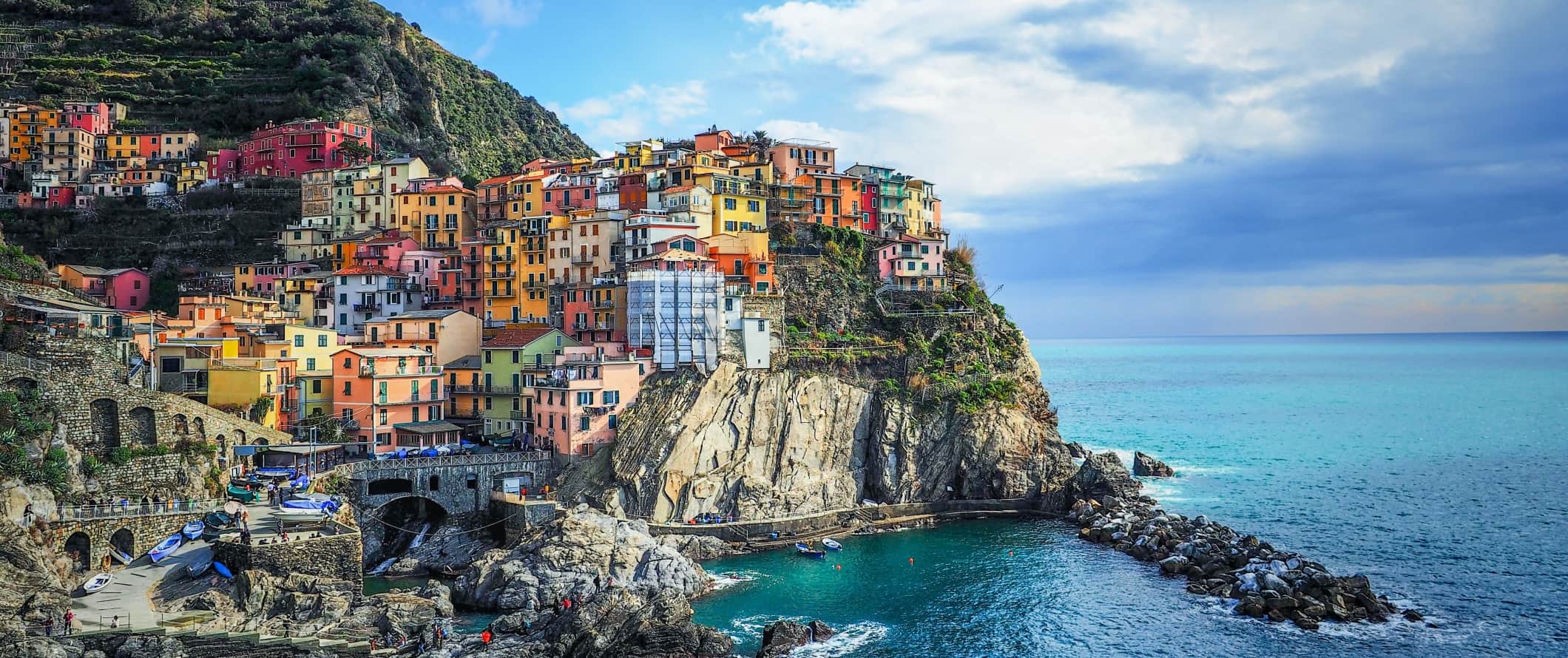
1. Explore Venice
While crowded, Venice is an astounding place to visit. I love the city’s iconic architecture and picturesque canals. Don’t miss the Piazza San Marco, Doge’s Palace, Rialto Bridge, the Basilica San Marco, and the city’s countless museums. Moreover, be sure to head to the old Jewish Ghetto for hip bars and cheap drinks (the English word ghetto comes from this area of Venice). Venice is also home to several world-class festivals. In late winter, the epic Carnival takes place here and, in August, the prestigious Venice Film Festival takes over the nearby island of Lido. If you have time, be sure to explore the neighboring islands on a day tour. They are charming in their own right.
2. Wander Rome
Rome has so much to see and do that you’ll need to make several trips to even scratch the surface. Besides obvious highlights like the Colosseum, Forum, Palatine Hill, and Trevi Fountain, make sure you explore the Trastevere neighborhood. It’s my favorite area in Rome and feels almost like a village inside a big city. Trastevere offers delicious food, funky bars, and ancient winding streets. I love the family pizzerias and cafes here for people-watching and the gelato. Vatican City, the smallest independent city-state in the world, is nestled within the heart of Rome and is home to the Pope, St. Peter’s Basilica, the Sistine Chapel, and many fantastic museums. You can fill an endless amount of time here so don’t try to rush your visit!
3. Tour Pompeii
Located a 20-40-minute train ride from Naples , Pompeii is an ancient city that was destroyed by a volcano, preserving it in a blanket of ash still frozen in time. Walk around the Roman city as it stood the day that Mount Vesuvius exploded in 79 CE, moving in and out of homes, villas, baths, and businesses where pots and vases still lay. What really struck me was entering the houses and seeing that the fountains and most of the beautiful frescoes are still intact. Admission is 16 EUR while a guided tour with a professional archeologist is 50 EUR. It’s a huge site and will take a full day to visit in depth.
4. Hike the Cinque Terre
The Cinque Terre consists of five colorful coastal villages on the west coast of Italy, backed by steep vineyards and mountains. These small towns are by no means undiscovered by tourists but still absolutely beautiful and teeming with great shops and cafes. Each village has its own unique charm and personality so be sure to visit all of them. I absolutely love the fun hikes in the stunning hills high above the sea between the villages that range in difficulty. The Cinque Terre express train makes it super easy to pop around to the different villages if you don’t want to hike between the towns. Trail #7 is my favorite.
5. Relax on the Amalfi Coast
Other things to see and do in italy, 1. party at the venice carnival.
Carnival is ten days of masquerade madness every February leading up to Mardi Gras. The tradition goes back centuries, starting in the 12th century and reaching the height of popularity in the 18th century. Today, it’s one of the biggest festivals in Italy, with millions of people attending every year. The iconic and diverse masks are a central part of the festivities and every year there is a contest for the most beautiful mask. If you want to splash out, you can even attend a traditional masquerade ball! Just be sure to book your accommodation early as the city fills up months in advance.
2. Explore Milan
Milan is the fashion capital of Italy. Spend some time taking in the glamor but don’t spend more than a day or two here unless you’re looking to splash out. While you’re here, don’t miss the beautiful Milan Cathedral, which boasts 3,500 statues, 135 spires, and five bronze doors. Sforzesco Castle, a 15th-century castle that houses Michelangelo’s last sculpture, is also worth a visit. There’s also Leonardo da Vinci’s The Last Supper , located inside Santa Maria delle Grazie church (which is itself a UNESCO World Heritage Site) as well as Leonardo’s Horse, one of the largest equine statues in the world. To get away from the crowds, spend some time relaxing in Parco Sempione, Milan’s most famous city park. It’s a vast oasis of green space and perfect for a picnic when the weather is nice.
3. See the Leaning Tower in Pisa
The entire city of Pisa is focused on taking photos of this famed tower. Started in 1173 and finished in 1399, it’s the bell tower of Pisa’s cathedral, located next door. Although it was meant to be perfectly vertical, the tower started leaning during construction due to the weight of the building on an unstable foundation. Admission to the top is 20 EUR or 27 EUR for a ticket that includes all the monuments in the complex. DiscoveryPisa runs a guided tour of all three sites for 30 EUR if you want a more in-depth experience.
4. Visit Siena
Everyone who visits Siena walks away loving it. Located in Tuscany, it’s one of the best-preserved medieval cities in Italy and boasts a labyrinth of lanes gathered around the arena of Piazza del Campo. Spend a few days admiring this charming city and exploring one of Italy’s most popular and famous regions. The main draw to the city is the stunning Siena Cathedral, which was constructed with white and black marble and is one of the most beautiful cathedrals in the country (the interior is massive and ornately decorated and lined by huge columns). Be sure to also visit the Torre del Mangia, a narrow 14th-century tower that offers stunning views of the area, as well as the 14th-century Fonte Gaia fountain, which is decorated by centuries-old marble panels.
5. Wander Naples
Naples , made famous as the birthplace of pizza, is a gritty city home to a wealth of historical treasures. There’s the medieval Naples Cathedral, the 18th-century Villa Comunale Park, and nearby Naples , Pompeii , one of the most amazing and important sites to visit in the country. The Archaeological Museum of Naples is also worth a visit, and if you enjoy hiking you can climb up the iconic Mount Vesuvius. Naples is the gateway to the south so you’re very likely to come here if you’re crisscrossing the country. Its location near Pompeii, Capri, and Sorrento makes it the perfect starting point for exploring the region. Best of all, it’s a foodie city like no other; I ate my weight in pizza during my visit!
6. Explore Florence
There’s no real need to explain why one should visit Florence — the city speaks for itself. Everything people say about it is true: great food, amazing museums, ancient buildings, small streets, awesome gelato. The city has it all. Be sure to visit The Uffizi, which holds the world’s most important collection of Renaissance art (including the The Birth of Venus and La Primavera by Botticelli, Bacchus by Caravaggio, and Doni Tondo by Michelangelo). The famous David statue is also in Florence, housed in the Galleria dell’Accademia. It’s one of the most impressive sculptures in the world and at 5.17 meters (17 feet) tall, it’s a lot bigger and more detailed than you think it would be! While here, make sure you take a few wine tours throughout the region to get a feel for the verdant countryside.
7. Drive around “the Heel”
Few travelers ever visit the southern heel of the Italian “boot.” But, if you have time, it’s worth the trip. This is where most of the fruits and vegetables in Italy come from so a trip down here will give you the best glimpse into rustic Italian life far from the maddening crowds of Rome and Italy’s other tourist hotspots. Don’t miss the picturesque Polignano a Mare, with its rugged cliffs and white-washed houses. Gallipoli, with its labyrinth of narrow lanes and historic port, is also worth visiting. There are tons of amazing beaches in this part of the country too, including Marina di Pescoluse (Salento), Cala Porto (Polignano a Mare), and Torre Guaceto (Brindisi).
8. Eat your way around Sicily
There’s Italian culture and then there’s Sicily. Sicily has its own unique cooking style, traditions, and customs. It’s unlike the rest of Italy. Be sure to spend some time in Taormina and Palermo (the capital of Sicily). The UNESCO Valley of the Temples is also in Sicily, a national park home to incredible Greek ruins that are over 2,000 years old. Don’t miss the stunning Mount Etna , an active volcano that you can ski on it in the winter or take a tour of the top in the summer.
9. Stroll through Sorrento
Sorrento is a small city in southwestern Italy surrounded by a dreamy landscape of rolling hills, deep valleys, and the Lattari Mountains. There’s not a lot to do in the town itself but Sorrento makes an ideal starting point for numerous excursions to nearby cities and islands around the famous Amalfi Coast, like Capri and Ischia. I especially love driving along the winding coastal roads overlooking the sea. Don’t miss a visit to the nearby Blue Grotto .
10. Attend Settimana Santa (Holy Week)
This is the last week of Lent, known as Holy Week. During this time, there are several processions throughout Italy, drawing crowds of thousands. Throughout the week, there are various gatherings in Puglia, Abruzzo, and Sicily but the major event occurs on Easter Sunday and is led by the Pope himself. It’s an amazing time to visit, but expect huge crowds and for accommodation to sell out months in advance.
11. Visit Alberobello
A UNESCO World Heritage Site, this is an interesting and picturesque little town just south of Bari (a port city on the Adriatic Sea) known for its unusual white cone-shaped houses (they’re super peculiar). It’s well worth a visit between the months of November and April (to avoid the flocks of tourists) as there are a couple of museums to peruse, in addition to some great restaurants, bars, and markets.
12. Tour the Vatican Museums
Founded in the early 16th century, it is a complex of museums spanning over 12 acres. There are so many priceless highlights, including Michelangelo’s works in the Sistine Chapel. You could easily spend hours here. Consider getting a guide to make the museum come to life. Admission is 17 EUR and skip-the-line guided tours with Get Your Guide cost 50 EUR. For a more unique experience, check out the
13. See Chiesa di Sant’Efisio
When you find yourself in Cagliari on Sardinia, wander over to the Stampace quarter to see this church. Dedicated to the patron Saint Ephisius, this is the most important church in the city. The original building dates to the 13th century, though it was rebuilt and expanded in the 16th century and then again in the 18th century, this time in the Baroque style. Admission is free.
14. Take a cooking class
Italy is a dream destination for foodies and the best way to learn about this amazing cuisine is to take a cooking class . You’ll get to visit a local market, learn about the history of some of the country’s best dishes, and then learn how to make them yourself so you can impress friends and family back home. You can find cooking classes all over the country. They are very common. Prices vary depending on what city you take a class in, but most cost at least 70 EUR and last a few hours.
15. Take a walking tour
Walks of Italy offers incredible, detailed tours all around the country. They are my favorite tour company in the country. And they are relatively inexpensive and you definitely get your money’s worth. If you are big into history, culture, or architecture these tours are for you. You’ll walk away with a much richer understanding of the country. Don’t miss them.
For information on specific cities in Italy, check out these city guides:
- Cinque Terre Travel Guide
- Florence Travel Guide
- Milan Travel Guide
- Naples Travel Guide
- Pisa Travel Guide
- Rome Travel Guide
- Sorrento Travel Guide
- Venice Travel Guide
Italy Travel Costs
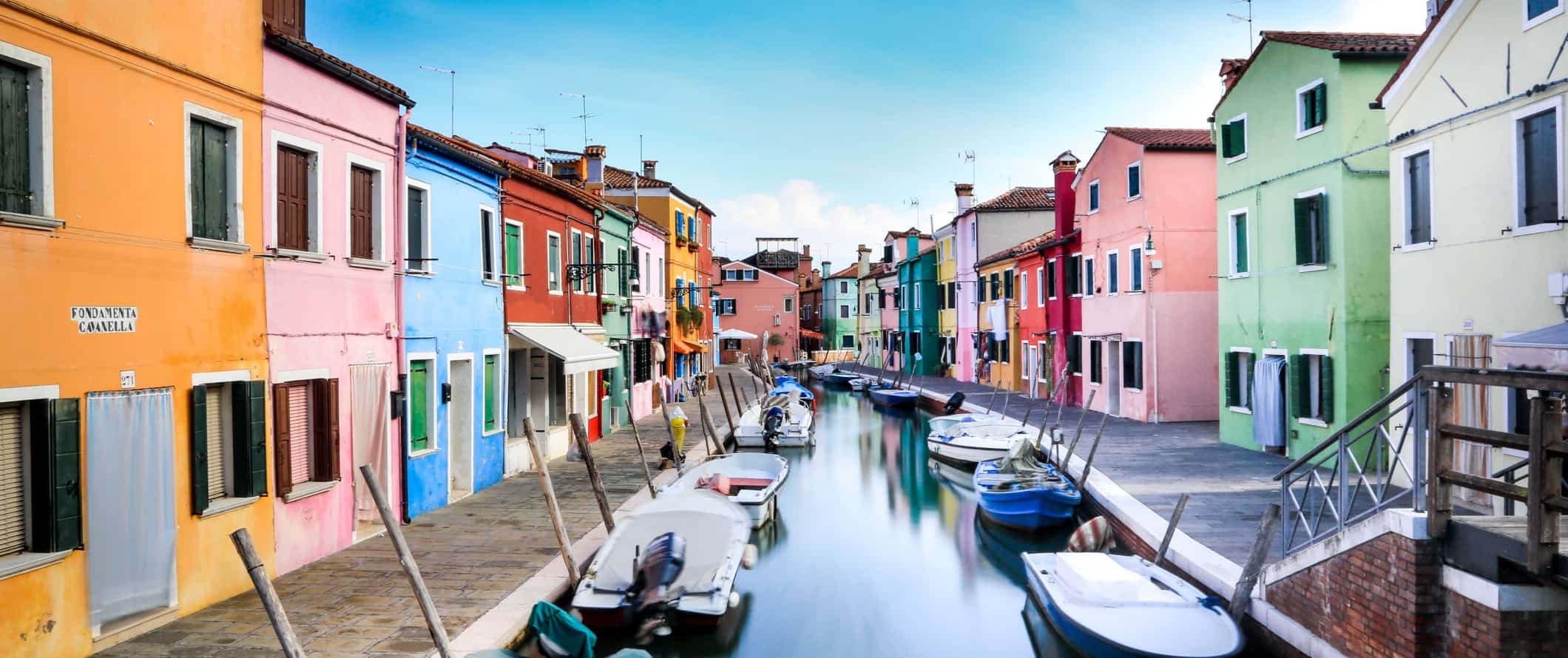
Accommodation – Hostel dorms average 27-40 EUR per night for rooms with 6-8 beds. Private rooms are usually between 55-100 EUR per night. Free Wi-Fi is standard and most hostels also have self-catering facilities and include breakfast. During the summer months, expect prices to double. In Rome and Florence, prices throughout the year are about 20% higher than anywhere else.
For those traveling with a tent, campgrounds are available around the country, usually costing between 15-30 EUR per night for a basic plot for two people.
A night in a two-star budget hotel ranges between 70-125 EUR per night. Expect basic amenities like free Wi-Fi, TV, AC, and occasionally free breakfast. Prices are on the higher end in cities like Rome and Venice and also double during the summer.
On Airbnb, private rooms start around 45-90 EUR, while entire apartments usually start around 100-150 EUR. Expect prices on the higher end in hotspots like Rome and Venice. Prices can also double (or triple) when not booked in advance. Additionally, expect even higher prices in the busy summer months.
Food – Italian cuisine is beloved around the world, though every region in Italy offers its own distinct flavor. Tomatoes, pasta, olives, and olive oil form the backbone of most dishes, with meat, fish and various cheeses rounding out the menu. Gelato and pizza, of course, are also super popular. Some traditional dishes include bigoli in salsa (pasta in anchovy sauce), risotto al nero di seppia (risotto with cuttlefish ink), gnocchi alla Sorrentina (potato gnocchi), cassoeula (a meat and cabbage stew), and tagliatelle funghi porcini e tartufo (pasta with mushrooms and truffles).
A casual restaurant meal of pizza or pasta usually costs 10-20 EUR. In tourist hot spots, add 5-10 EUR to that.
Quick eats like pizza by the slice, paninis, and light snacks cost between 3-8 EUR. Snacks like croissants are less than 2 EUR.
Fast food (think McDonald’s) costs around 8-10 EUR for a combo meal while Chinese, Thai, or Indian food is 10-12 EUR for a main dish. Dessert is usually around 4-8 EUR for something like tiramisu.
Your average restaurant meal costs around 30 EUR with a drink. Most main dishes cost around 15-20 EUR while a pizza is around 10-15 EUR. For higher-end meals, expect to spend about 70 EUR for a three-course meal with a drink.
Beer costs around 4-5 EUR while a glass of wine costs 4-8 EUR. For non-alcoholic drinks, a latte or cappuccino is around 1.50 EUR and bottled water is 1 EUR.
If you plan on cooking your own groceries, expect to spend 50-65 EUR per week. This gets you basic staples like pasta, rice, seasonal produce, and some meat or fish.
Backpacking Italy Suggested Budgets
If you’re backpacking Italy, my suggested budget is 60 EUR per day. This assumes you’re staying in a hostel, cooking all your meals, limiting your drinking, taking public transportation to get around, and sticking to mostly free activities like hiking, free walking tours, and the beaches. If you plan on drinking a lot, add at least 15 EUR to your daily budget.
On a mid-range budget of 140 EUR per day, you can stay in an Airbnb or budget hotel, eat out for a couple of meals, enjoy a few drinks, take the occasional taxi, and do more paid activities like touring the Colosseum or exploring Pompeii.
On an upscale budget of 255 EUR or more per day, you can stay in a budget hotel, eat out for all your meals, drink as much as you want, rent a car, and do whatever tours and activities you want. This isn’t a real luxury budget but it’s a budget that affords you the ability to do anything you want. If you want real luxury, you’ll need to read a different blog for that!
You can use the chart below to get an idea of how much you need to budget daily, depending on your travel style. Keep in mind these are daily averages — some days you’ll spend more, some days you’ll spend less (you might spend less every day). I just want to give you a general idea of how to make your budget. Prices are in EUR.
Italy Travel Guide: Money-Saving Tips
It’s very easy to break the bank in Italy, owing to all the historic sites, expensive accommodation, and delicious but pricey restaurants. After all, Italy is one of the most expensive Eurozone countries. You’re going to be spending a lot on a visit here. However, there are still lots of ways to reduce your expenses. Here are some tips to help you save money in Italy:
- Skip the bread – Many restaurants offer you bread when you sit down — but they don’t mention that it’s not free. If you’re on a budget, decline the bread and save a few Euros each dining experience.
- Picnic – Head to the store or one of the many markets in the country and grab food for a picnic. It’s cheaper than eating out and you can lounge in one of the many parks to watch the day go by. Food markets are a good place to try things, get fresh cheese and cold cuts, pasta, and snacks like ‘arancini,’ a super-filling rice ball stuffed with meat or cheese.
- Drink the tap water – When out at a restaurant, ask for tap water or you will automatically get expensive bottled water included on your bill. Since the tap water is safe to drink, bring a reusable water bottle to save money and reduce your plastic use. LifeStraw is my go-to brand as their bottles have built-in filters to ensure your water is always clean and safe.
- Buy wine at the store – You can buy a great bottle of wine for 6-10 EUR at the store. It’s a lot cheaper than drinking at the bar. Take it outdoors and sit around and enjoy the day/evening or skip expensive nightlife and go out for a long dinner and just drink it at the hostel. Just make sure you have a travel corkscrew on you if you’re going to sit outside somewhere!
- Take the bus – Budget bus companies like Flixbus can take you across the country for cheap. It isn’t glamorous, but with tickets starting at 6 EUR you really can’t complain! (And it’s cheaper than the train.) Taking the bus in town inside big cities instead of taking taxis everywhere or renting a car will save you lots of money.
- Take a free walking tour – Most cities in Italy offer free walking tours that cover all the main highlights. It’s the best budget-friendly way to explore and also a great way to meet other travelers if you’re alone. Just be sure to tip your guide at the end!
- Stay with a local – Accommodation is expensive in Italy, even in the hostels. Use Couchsurfing to stay with locals who have extra beds or couches for free. It’s the best way to save money and meet people. Just be sure to send your requests early (especially in the summer). Also, it’s a good idea to research the area you’re staying in first so you’re not so far away from the city center (or city!) that you need to spend a lot of time/money getting into town to see the sites.
- Get a city tourist card – Many tourism offices offer tourist cards that provide free or discounted entry to the main attractions. Some even include restaurant discounts and free transportation. If you plan on sightseeing a lot, these cards can cut your costs drastically. Check the local tourism board in each city for info when you arrive.
- Rideshare – If you’re flexible in your schedule, use the ridesharing service BlaBlaCar to catch rides with locals between cities. I used this service and not only did I save money, I got to meet interesting people and learn more about life in Italy. This is a good option to book a few days in advance. Just make sure to pick someone who has good ratings because newer drivers can have a tendency to be unreliable or cancel at the last minute.
Where to Stay in Italy
There’s a lot of hostels and hotels in Italy to choose from. To help you save money on accommodation, here’s a list of my recommended hostels and budget hotels in Italy:
- Loly Boutique Hotel (Rome)
- The Beehive (Rome)
- Hotel Montecarlo (Venice)
- Generator (Venice)
- Hostel of the Sun (Naples)
- Ulisse Deluxe (Sorrento)
- Hotel Bologna (Pisa)
- Hostel Pisa Tower (Pisa)
How to Get Around Italy
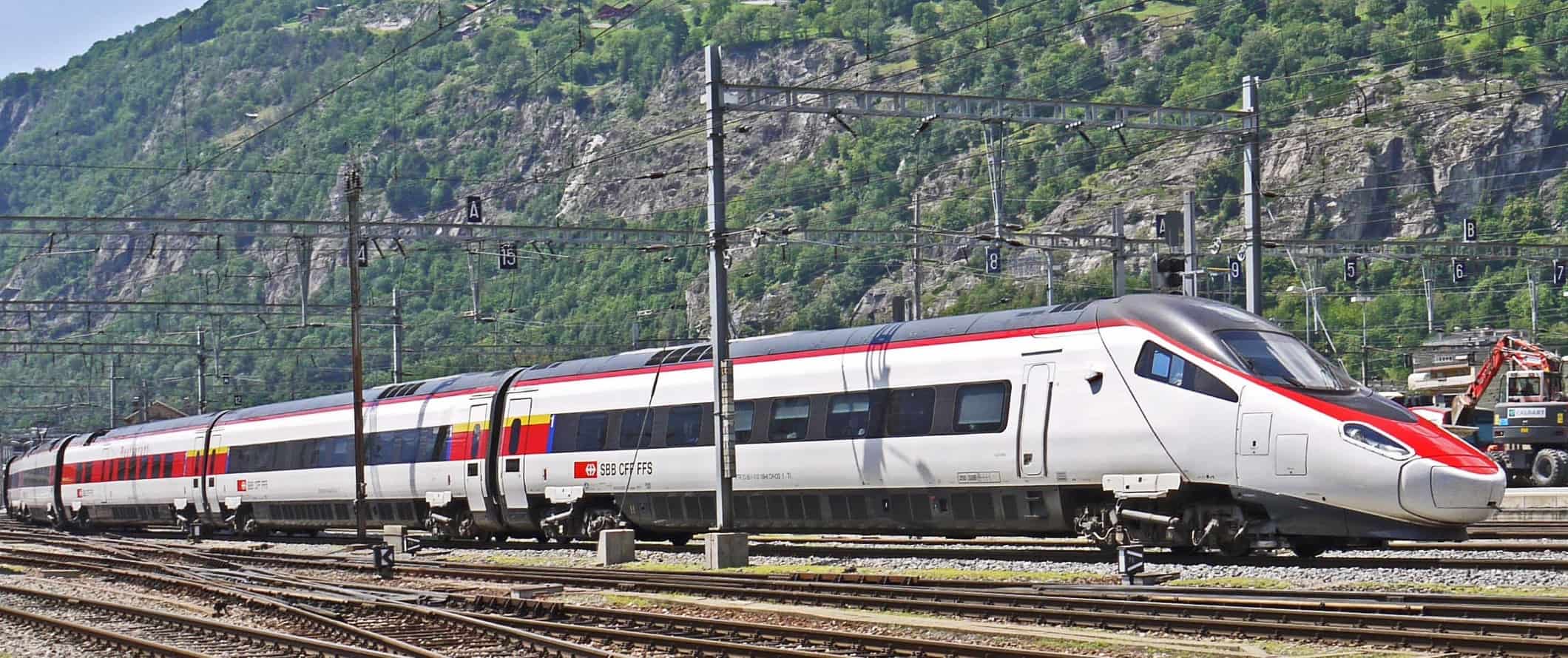
Public transportation – Public transportation is available in all the major cities in Italy (many of which have comprehensive metro systems). Tickets usually cost between 1-2 EUR for a single journey. Some cities also have day passes that offer unlimited travel. In Rome, you can purchase a one-day pass for unlimited travel for 7 EUR. A one-week pass costs 24 EUR, for example. While public transportation is generally reliable, traffic can be a nightmare — especially in Rome.
Train – The best way to get around Italy is via their extensive train network. Prices are affordable too, with most trips costing just 10-30 EUR. Rome to Florence takes just 90 minutes (on the fast train) with tickets starting at 20 EUR. Rome to Venice takes around 4 hours with tickets starting around 30 EUR. Rome to Naples is just over one hour and costs around 20 EUR.
Italo and Trenitalia are the two main rail systems. Tickets on Trenitalia are often a standard price, while Italo’s ticket prices fluctuate more widely. It’s worth it to check both.
To find routes and prices for trains around Italy (and Europe), use Trainline .
Bus – The bus is slower than the train but cheaper, with prices on FlixBus starting as low as 6 EUR. This isn’t the most convenient or fastest way to travel, but the buses are comfortable and good for short and medium journeys. Most buses come with outlets and free Wi-Fi too.
The 4-hour trip from Rome to Florence costs around 7-15 EUR, while a longer trip like Venice to Naples takes 10-15 hours and costs just 20-32 EUR.
Flying – If you’re pressed for time and are looking to jump from one city to the next, a budget airline might be the way to go. Prices can be incredibly low — just 20-100 EUR round trip on airlines like Ryanair.
That said, when you factor in the time spent at airports, you’re likely not going to save much time. Also, keep in mind that you’ll have to pay to check your baggage on these cheap flights and you usually need to print your boarding pass out too (or pay a fee).
Ferry – If you want to visit some of Italy’s amazing islands, you’ll have to book a ferry. Ferries are frequent and you don’t need to book too far in advance, but during peak season it’s a good idea to book at least a few weeks ahead. You can use FerryHopper to find routes and prices. The popular one-hour ferry from Naples to Capri starts from 25 EUR.
Car rental – Car rentals are generally quite affordable here, usually starting around 25-35 EUR per day for a multi-day rental. Just make sure you have an International Driving Permit (IDP) as it’s required before you rent a car. Also, keep in mind that Italian drivers can be on the aggressive side so drive cautiously. For the best rental car deals, use Discover Cars .
When to Go to Italy
There’s no wrong time to visit Italy. Historically, the peak season has been July and August, but post-COVID cities like Rome, Florence, and Venice are busy pretty much year round. Temperatures can soar as high as 36°C (98°F) during the summer, and popular cities like Rome, Venice, and Florence experience a huge influx of visitors. I’d try to avoid visiting in the summer if you can as it’s just too crowded, too hot, and prices increase during this time as well.
Personally, I think the best time to visit Italy is during the shoulder season (March-May and September-October). It’s still warm but the crowds have thinned and prices are lower. This is a particularly great time to hang out in the Mediterranean. Expect daily highs around 22°C (72°F).
Winter is from November to February. It gets cold, and tourist crowds thin out considerably. Temperatures vary quite a bit from north to south, with it sometimes dropping to 2°C (36°F) in Milan and 4°C (39°F) in Rome. On the other hand, November to December is fantastic — you’ll find Christmas markets and festivals galore!
How to Stay Safe in Italy
Italy is a safe country to travel as violent crime against tourists is very rare. However, scams and pickpocketing are common, especially around high-traffic tourist sites in places like Rome and Venice. Always keep your valuables secure and out of sight on public transportation and when out and about. The biggest things to watch out for are pickpockets on public transportation and in crowds. Don’t leave your bag open or put your mobile phone in loose jacket pockets on the tram or subway.
Be wary of people selling discounted tickets on the street. Chances are they are fake so always buy tickets from reputable sellers only. If you take a taxi somewhere, make sure the driver uses the meter so you don’t get ripped off.
If you’re worried about getting ripped off you can read about other common travel scams to avoid here.
Solo female travelers should generally feel safe in Italy, however, the standard precautions apply (never leave your drink unattended at the bar, never walk home alone intoxicated, etc.). Catcalling is not uncommon in Italy. Also, on public transport be mindful of groping on public transport. For specific tips, check out one of the many solo female travel blogs on the country as they will have better advice for you.
If you rent a car, make sure you drive carefully and also have extra insurance. The roads in much of the country are very winding and narrow and drivers here are on the aggressive side.
Natural disasters here are uncommon, but since there are several active volcanoes in the country they can occur. Venice is also prone to flooding, so always be mindful of the weather while you’re here and heed any warnings or advisories.
If you experience an emergency, dial 113 for assistance.
Always trust your gut instinct. Make copies of your personal documents, including your passport and ID. Forward your itinerary along to loved ones so they’ll know where you are.
The most important piece of advice I can offer is to purchase good travel insurance. Travel insurance will protect you against illness, injury, theft, and cancellations. It’s comprehensive protection in case anything goes wrong. I never go on a trip without it as I’ve had to use it many times in the past. You can use the widget below to find the policy right for you:
Italy Travel Guide: The Best Booking Resources
These are my favorite companies to use when I travel. They consistently have the best deals, offer world-class customer service and great value, and overall, are better than their competitors. They are the companies I use the most and are always the starting point in my search for travel deals.
- Skyscanner – Skyscanner is my favorite flight search engine. They search small websites and budget airlines that larger search sites tend to miss. They are hands down the number one place to start.
- Hostelworld – This is the best hostel accommodation site out there with the largest inventory, best search interface, and widest availability.
- Booking.com – The best all around booking site that constantly provides the cheapest and lowest rates. They have the widest selection of budget accommodation. In all my tests, they’ve always had the cheapest rates out of all the booking websites.
- HostelPass – This new card gives you up to 20% off hostels throughout Europe. It’s a great way to save money. They’re constantly adding new hostels too. I’ve always wanted something like this and glad it finallt exists.
- Get Your Guide – Get Your Guide is a huge online marketplace for tours and excursions. They have tons of tour options available in cities all around the world, including everything from cooking classes, walking tours, street art lessons, and more!
- The Man in Seat 61 – This website is the ultimate guide to train travel anywhere in the world. They have the most comprehensive information on routes, times, prices, and train conditions. If you are planning a long train journey or some epic train trip, consult this site.
- Rome2Rio – This website allows you to see how to get from point A to point B the best and cheapest way possible. It will give you all the bus, train, plane, or boat routes that can get you there as well as how much they cost.
- FlixBus – Flixbus has routes between 20 European countries with prices starting as low 5 EUR! Their buses include WiFi, electrical outlets, a free checked bag.
- SafetyWing – Safety Wing offers convenient and affordable plans tailored to digital nomads and long-term travelers. They have cheap monthly plans, great customer service, and an easy-to-use claims process that makes it perfect for those on the road.
- LifeStraw – My go-to company for reusable water bottles with built-in filters so you can ensure your drinking water is always clean and safe.
- Unbound Merino – They make lightweight, durable, easy-to-clean travel clothing.
- Top Travel Credit Cards – Points are the best way to cut down travel expenses. Here’s my favorite point earning credit cards so you can get free travel!
- Walks of Italy – This walking tour company provides inside access to attractions and places you can’t get elsewhere. Their guides rock and they have some of the best and most insightful tours in all of Italy.
- BlaBlaCar – BlaBlaCar is a ridesharing website that lets you share rides with vetted local drivers by pitching in for gas. You simply request a seat, they approve, and off you go! It’s a cheaper and more interesting way to travel than by bus or train!
Italy Travel Guide: Related Articles
Want more info? Check out all the articles I’ve written on backpacking/traveling Italy and continue planning your trip:

The 6 Best Hotels in Florence
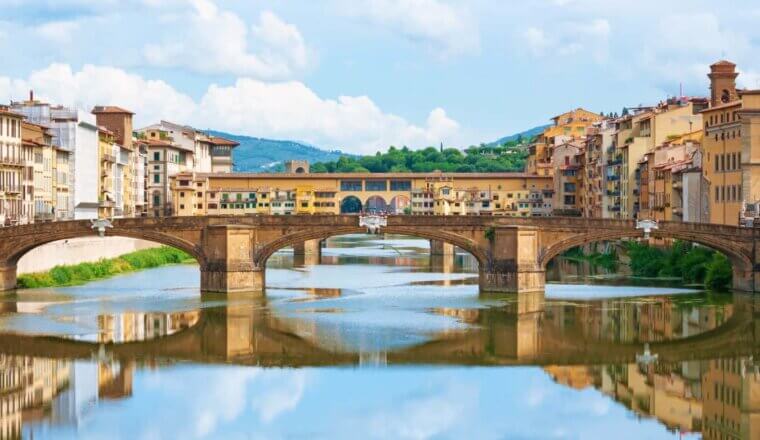
Where to Stay in Florence: The Best Neighborhoods For Your Visit
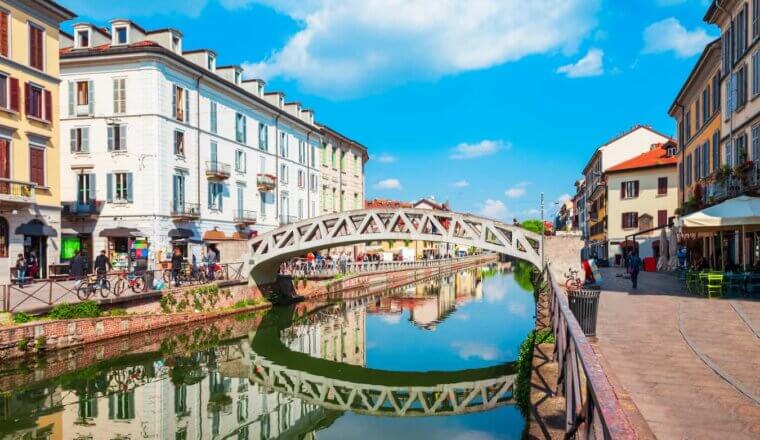
Where to Stay in Milan: The Best Neighborhoods for Your Visit
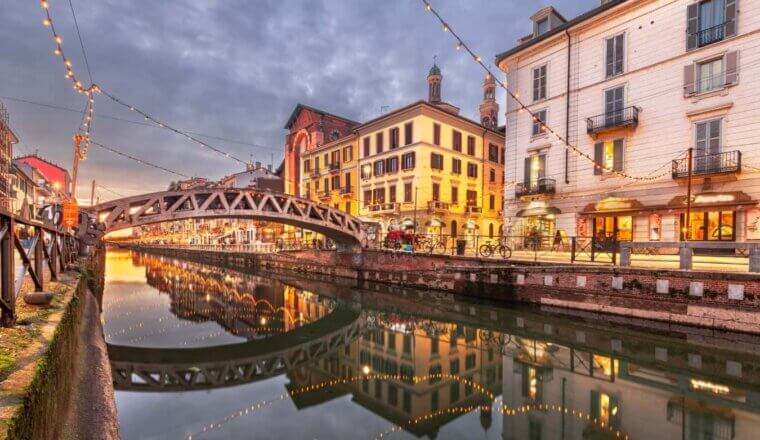
The 6 Best Hotels in Milan
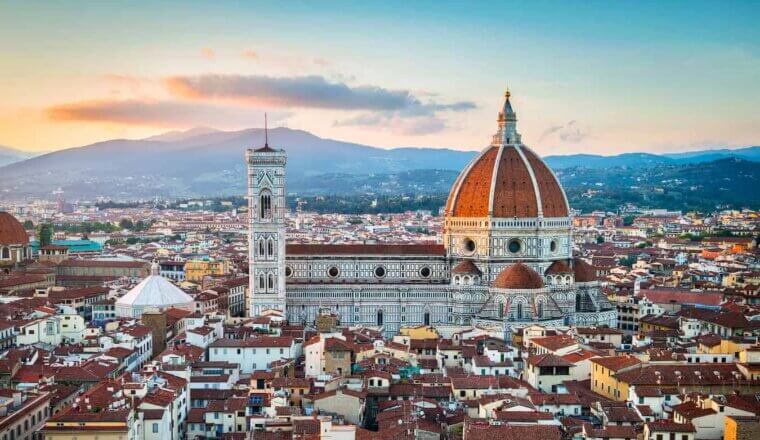
The Best Walking Tours in Florence
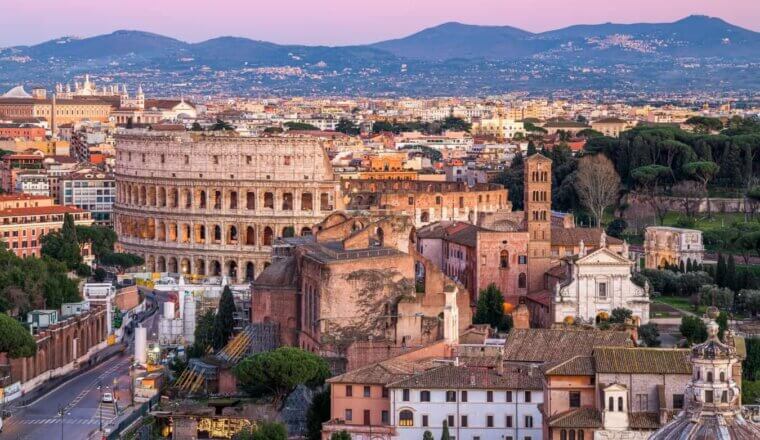
The 8 Best Hotels in Rome
Get my best stuff sent straight to you, pin it on pinterest.
- Where To Stay
- Transportation
- Booking Resources
- Related Blogs

Discover Italy's Soul with Our Authentic, Passion-Driven Tours
Please select a location
In order to see rates and availability please select dates
We’re here to show you the essence of Italy
From day tours to packages to local encounters , we’re ready to bring you an Italy like no other . Our Italy travel experts craft unique experiences with heart , with one goal in mind: to present Italy with passion .
Enough about us. How can we help you ?
Italy Tours and Packages

Italy Tours

Italy Hotels

Package Tours

Unique Experiences

Private Tours

Custom Tours

Country Tours

Private Transfers
Italy destinations.

- Florence Tours

- Tuscany Tours

- Milan Tours

- Sicily Tours

Naples Tours

Venice Tours

Cinque Terre Tours

Puglia Tours

Bologna Tours

Piedmont & Turin Tours

Verona & Lake Garda Tours

All Italy Tours
Italy travel information.

Puglia & Salento

Cinque Terre

Emilia Romagna

Campania & Amalfi Coast

Verona & Lake Garda

Dolomites & South Tyrol

Piedmont, Aosta & Western Alps
Tourist italy tours.
Over 150 Italy day tours, each and every one specifically designed by our resident travel experts to make your trip perfect.

Italy With a Twist
From behind-the-scenes Italian cultural tours to twists on classic locations, this is a collection of passion-filled Italy experiences that you won't find anywhere else.
- Coffee Tour Experience from Florence
- Highlights of Tuscany by Sunrise Tour
- Florence Full Day Tour - Architecture, History, Flavors

- Italy Package Tours
our multi-day package tours in Italy are made to fully immerse you in the true magnificence of Italy, to see that which cannot be seen in only one day.
- Overnight & Short Italy Tour Packages
- Private Tours in Italy

Book your Italy Hotels with Tourist Italy and take advantage of our selection of the country's best places to stay, many with special benefits.
- Hotels in Rome
- Hotels in Milan
- Hotels in Tuscany
- Hotels in Amalfi Coast

Why Travel With Us?
It should be obvious, but we’ll say it anyway
Our booking and customer service team is available 7 days a week to advise, help or just chat
Tours & packages are best price guaranteed
Our website is secure and we look after all personal details as if they are our own
We have 24/7 support for emergencies
All guides have a government license (of course)
All vehicles are safe, modern and air conditioned - even the Vespas
We care (about you)! Really!
Our tours are designed to show you the real people and real stories of Italy
Italy With Passion
At Tourist Italy, our mission is to redefine Italian travel experiences through our unwavering commitment to passionate, authentic travel.
Our tours venture beyond the ordinary, steering clear of the tourist masses, and delving into the hidden gems of Italy. Our focus is on revealing the soul of this magnificent country by showcasing unique perspectives, off-the-beaten-path locations, and genuine encounters with the locals. With a wealth of international expertise from our sister brands worldwide, we bring you an Italy like no other, with all the unfiltered details that make this land special.
We do Italia con passione .
Our Philosophy
Italy Travel Guide
We have over 100 travel guides and articles to help you enjoy the perfect trip.

Finding the Best Italy Food Tour

The Most Beautifully Designed Hotels in Italy

Design And Insider Guide To Venice

Best Way to Visit the Tuscan Countryside

Food Travel Italy: An Insider Guide

The Best Time to Visit Italy

2 Days in Rome Itinerary

Palermo Travel Guide
More From Forbes
Travel to italy like an insider with the best local experts.
- Share to Facebook
- Share to Twitter
- Share to Linkedin
A trip to Italy is too special to get wrong. Here's how to do it right. (San Gimignano, Tuscany)
I absolutely love Italy, for many different reasons. But I hate the way in which many Americans go about planning trips there. Survey after survey shows it is the number one dream destination for U.S. leisure travelers, but the way those travelers get their information and advice gives me nightmares.
Throughout the years I’ve heard people say over and over that “I was told to do this in Italy,” or “I was told not to do this in Italy.” By who? “A friend.” I have close friends who recently planned their entire 12-day trip on the basis of another couple they knew who gave them advice—after their first visit. I’ve heard of many people who skipped Rome because “we heard it was too busy, just another big city.” Or passed on Venice, one of the world’s most magical destinations, because, “I heard it was touristy.”
There are American tourists who say you should skip Venice. They are wrong.
It goes on and on, but suffice to say, I have been to Italy in the neighborhood of two dozen times, summer and winter, for food, wine, skiing, golf, hiking, cycling and more food, from north to south and east to west and islands too, and I know a lot about Italian cuisine, but I still ask real experts for advice every time I go. I specifically ask for advice on where to eat, what to see, and who to choose as guides. And by experts, I mean people how live in Italy, specialize in particular areas of travel, and know their subject matter.
“We get multiple guests a year who want to wing it,” says Cherrye Moore, owner of My Bella Vita travel. Moore moved to Calabria two decades ago after falling in love with the region on a visit, and opened a bed and breakfast, learning about what her visitors were looking for. Her company now specializes in planning trips—especially foodie and ancestry trips—to the area in Southern Italy where many Italian Americans trace their heritage. “They say, ‘My neighbor just showed up in their family’s hometown and it went great for them,’ or, ‘Our friends went to Italy last year and said we don't need a driver.’ It’s true that you can rent a car and drive to your family’s hometown, but that experience is vastly different from having a dedicated driver and a heritage specialist who has done research on your family’s history, who has already identified the home your grandfather was born in, and who has arranged meetings with locals upon your arrival.”
Best High-Yield Savings Accounts Of 2024
Best 5% interest savings accounts of 2024.
Anyone can tour the Vatican, but only the right guides can get you a private visit.
I just got back from an exploration of Turin followed by a weeklong hiking trip in surrounding Piemonte, Italy’s most prestigious wine region, which included multiple winery visits. For restaurants and guides and sightseeing in Turin I used an Italian-based travel specialist that is the choice of many of the best luxury travel agents/advisors in this country (the best travel agents are savvy enough to know what they do not know and regularly rely on local experts). For the hiking trip, I used an Italy-based active travel specialist that does nothing else, and does it with a food-centric spin. It was another fantastic Italy trip, one amazing day after another, featuring many meals, wineries and experiences I never would have found by myself, especially by asking random friends or watching You Tube influencer videos by people with far less Italy experience than myself.
“We don’t focus on stars or diamonds, we focus on really special one-of-a-kind experiences and lodging that lets you discover our Italy,” said Heather Dowd, who lives in Turin and along with her Italian husband Beppe Salerno. They run Tourissimo , the active travel company we used. We had several friends hiking with us who were on either their very first or second trip to Italy, and when we reviewed our experiences at the end for the trip, one place we stayed, an 18 th century castle turned boutique hotel, was the overwhelming favorite. It did not have whirlpool tubs or Frette linens, it did not have a concierge or room service, but it had excellent food and beautiful gardens in which we had an epic dinner. It had cooking classes, a great location, a fun aperitivo evening cocktail session, and most of all, incredible charm..
Everyone wants the perfect meal in Italy, but not everyone knows where the locals go to find it.
It was exactly what my first timers dreamed Italy would be like, and it was a place we never would have found online. It was perfect, and even in Italy not every place is, but the reality is that Heather and Beppe and their guides spend a lot of time behind the scenes visiting small hotels and vetting them, way more time than the people who rate their stays on booking websites. One of my friends was so impressed he is already planning an extended family hiking trip to Sicily with Tourissimo next year.
If you want to have an insider experience in Italy, and see the places locals go, you need a local insider to help you out.
“Our goal is for guests to experience Calabria like we do, so we’ve built experiences that aren’t available online,” said My Bella Vita’s Moore. “Nowhere else can you find a multi-course lunch hosted at Zia Pina’s or a picnic prepared and delivered by Signora Francesca. Lunch in the home of our friend, Chef Massimo, isn’t available on Google. When creating or reviewing experiences I always think of my sister in Texas. If she were visiting, would I take her here? If that answer is yes, I know we have a winner.” That is exactly the standard by which I’d like my Italy travels to be judged.
A trip to Italy is a beautiful, special, and almost sacred experience, so don’t screw it up by taking bad advice. I do not know every local specialist—and I hope to keep finding more—but I know several experts I would recommend for different kinds of travel. Or use a good travel advisor, something I recommend for all travel (Read my article Why You Need A Travel Agent More Than Ever here at Forbes ), and communicate with them to ensure they are on the same page in terms of sourcing these kinds of local experts. If they are good, they will already be familiar with several of these companies.
Active Travel
All of Tourissimo's cycling and hiking trips in Italy emphasize food and wine, which is how it ... [+] should be.
Italy has long been the dream destination of cyclists, with Tuscany atop the Bucket List for global road riding destinations. But for the past few years the fastest growing sector of cycling has been “gravel grinding,” and with hundreds of miles of its stunning unpaved “white roads,” Tuscany has also emerged as the world’s top travel spot for gravel lovers. There are also plenty of other amazing places to ride in Italy, including Piemonte, Sardinia, Puglia, the Lakes region, and many other areas. World class hiking abounds, especially the stunning Dolomites—a UNESCO World Heritage Site of beauty unmatched by most other mountain regions on earth. Beyond this there are the Alps in the east, the Cinque Terre, Sardinia, and many other great options.
Italy is so well known for cycling and hiking that every major active travel company in the world runs trips there. But for my last two active trips, one hiking and one biking, I chose a tour operator that is actually based there, founded by an Italian with a passion for cycling and food. Tourissimo may be Italian, but they cater to the American market, and founder Beppe Salerno worked for am American cycling company as a guide before realizing he could do the real Italy better himself—to me, the perfect startup rationale. Over the years since, Tourissimo has grown its library of offerings, with both with an array of scheduled group trips and private custom options. While they do mostly road riding, they are notably one of the only tour operators scheduling gravel trips, and can also arrange custom mountain biking itineraries, with years of expertise in cycling and hiking.
Superstar Chef Mary Sue Milliken has led about galf a dozen Chef's Cycling Tours in Italy for ... [+] Tourissimo.
In addition, Tourissimo has also been a pioneer in “Active Culinary Travel,” a hot new category I have written about here at Forbes (and for other magazines and newspapers). They offer an annual series of six group rides (and a hike) each hosted by an acclaimed chef like Mary Sue Milliken, an award-winning chef, restaurateur, cookbook author (five!) and co-host of the popular PBS cooking show Two Hot Tamales . She is also an avid cyclist and has led the Tourissimo Chef Bike Tours for several years, along with other big names. These trips are a unique option for serious foodies who also ride, while the other trips cater to just about anyone. Otherwise they offer several styles of trips, from Bici Basics for new riders to Ambitious Tours for the more hard core.
Tourissimo puts a focus on local, choosing small and often historic hotels that they have curated and vetted (like the castle I just stayed at in Piemonte), places that you would never be able to distinguish from hundreds of other non-chain options online. Same for restaurants, wineries, and all the other ways they take you behind the scenes and into their real Italy. Their Mission Statement? “We don't want to be the biggest adventure travel company. We want to design and run the best tours in Italy. We strive to be the most authentic and the most beneficial to local communities.” Fantastico!
Bellagio on Lake Como is one of the most famous destinations in Italy — and the perfect place for a ... [+] food-centric bike tour!
Bike It! Bellagio offers another insider biking experience on a much different scale, providing a great one-day experience for visitors to Italy’s most famous lake town. This bike shop on Lake Como is run by a former pro racer and his wife. They rent bikes (road, mountain and e-bikes) out, but also offer one-day guided tours with multiple food and drink stops. Given that the owner grew up here and knows everyone, it’s not surprising that the food and drink spots are insider picks. The shop sits near the iconic Madonna del Ghisallo climb, the most famous in the Giro di Lombardia, a race more than a century old, and several days a week the shop offers guided group rides with a climb of the pass, on road or e-bikes—Bianchi bikes of course!
There are scheduled tours Monday through Saturday, as well as wide range of customizable private tours. These are often taken by families with mixed ages, but for more aggressive riders they offer longer road tours, mountain biking and gravel riding, along with a wide range of less demanding e-bike tours, including some even more focused on food and wine. They also offer a handful of multi-day tours and can put these together as custom on demand, usually for groups, including an iconic coast to coast traverse of Italy. If you are a guest of one of the many stunning (and pricey) ultra-luxury hotels around Bellagio, and ask the concierge to arrange a bike tour, they are likely going to call this shop anyway (and mark it up) so just do it yourself.
Luxury Travel in Italy
From planning your entire itinerary with flights, hotels, and transfers to just booking the best tours, guides and VIP access (often to non-public highlights), it pays to use a top local specialist.
Last year I attended the annual Virtuoso Travel Week in Las Vegas, which has been called “the Oscars of the travel industry.” Virtuoso is the leading global luxury travel consortium, and many of the best travel advisors on earth belong, So does just about every top hotel, resort, safari lodge, cruise line, and luxury tour operator. Virtuoso CEO Matthew Upchurch was explaining the many advantages of using a travel advisor (I wholeheartedly agree) and something he said really stuck with me. He explained that with all of the new online tour booking companies, it was easier than ever to book a tour or guide in just about any destination on earth, but harder than ever to judge the quality. The caveat was that, “you can book a guide, but you can’t book my guide.”
One of Italy's greatest hidden gems, Turin was the nation's first capital and a Winter Olympic host. ... [+] It's worth getting a good guide if you visit.
The Vatican is the Vatican and the Colosseum is the Colosseum, so when you opt for a guided tour, what really matters and makes it a good, bad or great experience is the guide—and their special access, like a tour of the Vatican when no one else is there.
For my recent trip to Turin, I called Imago Artis Travel , an Italy-based luxury travel specialist. They are what is known in the travel industry as a destination management company or DMC, the same companies luxury travel agents call to arrange local details for their clients. There are great DMCs all over the world, and local knowledge is valuable everywhere, but many of them do not deal directly with travelers, while in Italy the best ones do.
I wanted a private day tour of Turin and its surrounding attractions for my wife and I, most importantly the Reggia di Venaria Reale, aka the “Italian Versailles” (one of two places in Italy with this lofty but accurate nickname). The guide they got for me was a licensed guide, and lifelong resident of Turin, and spoke excellent English, which was all good, but she was also an architect, which was great in a city where so much is driven by architecture. That’s not so easy to find on global tour aggregator website. Imago Artis also gave me a list of their favorite restaurant recommendations, which were spot on, then made my reservations for me. At a minimum this eliminates the language barrier of calling or the technology barrier of booking through often tricky (or non-functional) Italian restaurant reservation websites, but in many cases it also gets you a better table and instant VIP treatment—which definitely does not happen when I book myself.
Italy is rich in world-class crafts, and companies like Imago Artis can take you behind the scenes ... [+] to meet the makers.
Imago Artis Travel is a Virtuoso member, which means when you book through them, if you book your luxury hotel, you get extras like room upgrades, late checkout, spa credits etc., one of the big advantages of working with Virtuoso travel advisors. If you have a bigger budget than I do, they can handle all sorts of luxury transport, private jets, helicopters, boat charters, and also offer VIP Meet and Greet services at just about every airport in Italy. They can even arrange private security details. On a more accessible luxury level, they specialize in exclusive experiences, unlocking historic buildings and art collections not open to the public, and taking you behind the scenes with many artisans of Italy, from custom shoemakers to sculptors to jewelry designers. They know food, they know the guides, and I especially like their mission statement, “Our mission is simple: Getting You to the Heart of Italy.” That’s what it is all about.
Another top luxury DMC that is also a member of Virtuoso that I have used in the past with great success is IC Bellagio . They offer a similar array of luxury services and are very well connected, but they also specialize in Villa rentals as well as 5-Star hotels. Differentiating villas in Italy may be the single biggest challenge, more so than restaurants, with so many options and so few valid reviews. IC Bellagio has also boldly acknowledged the overtourism problems some of the most popular parts of Italy face, and are pushing “Slow Season Travel,” which varies in each of the country’s 20 regions but is something they are expert in. Last winter I went to Venice in the off-season, and it was spectacular, and I just traveled in a slow season to Piemonte. It was much, much better than fighting the crowds.
Skiing in Italy is awesome, and it's the best place in the world to stay in mountain rifugios — but ... [+] you need help for the perfect trip.
Skiing in Italy remains a bit under the radar for Europe, especially compared to France and Switzerland. Well, let the crowds go to other countries, because Italy has two different major ski regions, both of which have hosted the Winter Olympics, and the Games are returning to Milan and Cortina in 2026. The interconnected Dolomiti SuperSki lift and trail network in the Dolomites is arguably the largest “ski resort” in the world, and inarguably one of the most beautiful mountain landscapes on the planet. The towns are charming, the food is great, there are spectacular hotels from non-chain independent hidden gems to world-class luxury (Aman, Mandarin Oriental, Relais & Chateaux, etc.) and it’s cheaper than much of the rest of Europe. Did I mention the food?
I first went to the Dolomites to go hiking, and was so wowed I thought, “I have to come back and ski here.” I came back the next winter and skied, and the following year I got a group of friends together and went back. I have skied all over the U.S., and all over the world and never had the same compulsion to return to the same place immediately. That’s how good skiing in Italy is ( read much more in my Italy skiing piece here at Forbes ).
I’ve only used one company for ski travel in Italy and see no reason to switch gears, especially since the local logistics (a great guide/instructor, transfers, the best on-mountain meals and staying a couple of nights in the region’s unique on-mountain rifugios) is very hard to organize on your own. The company is Dolomite Mountains , a specialist in both resort ski vacations and backcountry touring trips (using skins and alpine touring or AT gear). They too are a U.S. facing company with mainly American clientele.
Like many active travel companies, they offer both group trip scheduled departure options and private custom trips to fit whatever you want. The group option is called the Dolomites Ski Safari and is a 7-day trip mixing stays in amazing rifugios with in-town hotels (4 and 5-stars on the Italian system) and includes all breakfasts and dinners, a full-time guide, ski pass, luggage transfers and more. Custom options include the same kind of trip for your own group, or anything you want, and while its name suggests local expertise—quite true—Dolomite Mountains also handles ski trips in the rest of Italy, like Courmayeur, and connected border regions of France, Switzerland and Austria, as many lift systems here know no national boundaries (ski with your passport!). They are also a Virtuoso member.
Calabria & Southern Italy
Many Italian Americans trace their ancestry to Southern Italy's Calabria, and if you want to visit, ... [+] make sure you do it right.
My Bella Vita travel focuses on this area, including both small group trips and custom privates. Their specialties include “Heritage Tours” for those interested in their ancestry, and a food focus for the rest of us. For instance, Taste of the South is a 12-day gastronomic journey through Calabria, Basilicata and Naples—the birthplace of pizza! Food & Wine of Calabria is an 11-daty trip and just what it sounds like.
These are some of the scheduled small group tours offered, but the rest of their business is private trip planning and custom options.
“Italy is deceivingly large, and travelers think two weeks is enough time to see everything. It isn’t,” insists Moore. “You can’t even experience all of Calabria in two weeks. Our team collectively spends about six months a year scouting new hotels, restaurants, and experiences in Calabria and we are constantly re-evaluating and tweaking our recommendations.”
There are some other Italy specialists I have not personally experienced, but that come highly recommended by some of my other experts:
My Bella Vita’s Cherrye Moore says, “ In Sicily, I recommend Lucia Davies of Sicily Tour , one of a trio of British expats who have lived in Siracusa, Sicily for decades.” A family-owned tour-guiding company based in Siracusa, they have nearly 40 years of experience on the island and create trips fostering cultural exchange between Italy and English-speaking visitors, specializing in small group and custom tours.
Food & Wine
Life is too short to go to Italy and not eat well.
Beppe and Heather Dowd of Tourissimo recommend Lazy Italian Culinary Adventures , a company that has also earned kudos from other travel industry folks I know. Owner Francesca Montillo grew up in Southern Italy where her father was greengrocer. An Italian-American cookbook author, she launched the company a decade ago, and she personally leads the tours. She does numerous scheduled tours to different regions each year, and also offers custom private itineraries.
- Editorial Standards
- Reprints & Permissions

An Easy Travel Guide to Rome, Italy
V isiting the Eternal City for the first time? Rome is one of the most visited cities in Italy and we created an easy travel guide to Rome so that you know the best things to see and do.
In this post, we’re sharing all we’ve learned from our vacations in Rome to help you plan your getaway. We’ll cover the most popular neighborhoods, the best things to see and do, how to get around in Rome, the best time of the year to visit, how to get to central Rome from FCO Airport, and tips for traveling.
Where is Rome
Rome is located in the region of Lazio, near the and is undoubtedly one of the most popular destinations in Italy. It has the highest population of all cities in Italy and sits about 1 hour from the western coast.
And when it comes to tourism, it’s no surprise that visitors from around the globe travel to Rome to see its beauty and Renaissance art, experience Roman cuisine and Italian cooking , shop the fashion capital, discover the piazzas and fountains, explore the historical landmarks, or even practice Italian phrases that they’ve learned.
The various neighborhoods are the most widely visited by tourists because they are where most attractions can be found. Traveling through the city is easy on foot, but you should also consider the Rome sightseeing bus or the Rome golf cart tours .
The Best Time of Year to Visit Rome
Rome can be extremely uncomfortable in the summer months (primarily June through September). In April and May, the spring temperatures are nice, the mornings are cool, and by noon you probably won’t need a jacket.
The Best Things to See and Do (by Neighborhood)
Each neighborhood of Rome has museums, churches, gardens, parks, and iconic spots to visit. This list gives a brief description of each district, and helps you understand what to see in each neighborhood. It will come in handy for deciding where to stay in Rome while planning your trip.
You may need to take public transportation to reach a specific neighborhood depending on where you stay. However, once you arrive, the area is completely walkable and getting from one point of interest to another is easy.
Modern Center
This neighborhood is located around Via Veneto and the Spanish Steps, the Modern Center neighborhood combines classic and contemporary influences. It has a mix of upscale boutiques, trendy cafes, and luxurious hotels, making it a hub for shopping, dining, and experiencing the modern side of Rome.
Palazzo del Quirinale
Complesso delle Quattro Fontane
Trevi Fountain
Galleria Nazionale d’Arte Antica a Pallazo
Santa Maria degli Angeli e dei Martiri
Castro Pretorio
Chiesa di Santa Maria della Vittoria
Museo e Cripto dei Frati Cappuccini
The heart of Rome’s historic center, the Old Rome neighborhood captivates with its cobblestone streets, charming piazzas, and awe-inspiring landmarks like the Pantheon and Piazza Navona.
Scalinta di Trinita dei Monti (Spanish Steps)
Museo dell’Ara Pacis
Campo de’ Fiori
Palazza Farnese
Piazza Navona
Museo di Roma Palazzo Braschi
Chiesa di San Luigi dei Francesi
Chiesa di Sant’Agnese in Agone
By far this is the most popular neighborhood in Rome for travelers. Trastevere is a bohemian neighborhood located on the west bank of the Tiber River. It is known for it narrow, winding streets, nightlife, and charming piazzas. Trastevere has a lively atmosphere with trendy bars, and traditional trattorias.
Villa Farnesina
Galleria Corsini
Basilica di Santa Maria
Orto Botanico
Home to the iconic Colosseum, the Colosseum neighborhood in Rome immerses visitors in ancient history as they explore the grandeur of the Roman Empire, marvel at ancient ruins, and soak in the architectural splendor of this UNESCO World Heritage site.
Roman Forum
Palatine Hill
Bocca della Verita
Circo Massimo
Piazza Venezia
Altare della Patria
Aventino – Tastaccio
Testaccio is a historic working-class neighborhood that has transformed into a culinary hotspot. It offers a vibrant food scene with traditional trattorias, gourmet restaurants, and a bustling food market.
Basilicia di San Giovanni
Terme di Caracalla
Knights of Malta Keyhole
Esquilino – San Giovanni
Located near Termini Station, the Esquilino neighborhood is a melting pot of cultures and flavors. Known for its diverse immigrant communities, Esquilino is a mix of ethnic restaurants, colorful markets, and architectural gems like the Basilica di Santa Maria Maggiore.
Basilica Papale di Santa Maria Maggiore
Palazzo Massimo alle Terme
Museo Nazionale Romano
Basilica di San Pietro in Vincole
Nomentano combines residential tranquility with commercial areas. This neighborhood is characterized by its leafy parks, elegant villas, and the iconic University La Sapienza. There is a mix of students, locals, and dining. Nomentano has a relaxed and intellectual atmosphere.
Sapienza University
North Center
The North Center neighborhood of Rome, encompassing areas like Villa Borghese and Parioli, presents a more tranquil and residential atmosphere. With its leafy parks, elegant villas, and cultural institutions like the Galleria Borghese, this area provides a peaceful retreat from the city center.
- Museo e Galleria Borghese
- Villa Borghese
- La Galleria Nazionale
- Museo Nazionale Etrusce di Villa Guilia
Vatican City
Vatican City is the smallest independent state in the world and the spiritual center of Catholicism. Home to St. Peter’s Basilica, the Vatican Museums, and the Sistine Chapel, this iconic neighborhood offers a rich blend of religious significance, magnificent art, and awe-inspiring architecture.
St. Peter’s Basilica
Vatican Gardens
Vatican Museums
Castel Sant’Angelo
Southern Rome
The southern part of Rome is less touristy and has an authentic atmosphere that portrays a taste of local Roman life. From food markets and traditional trattorias to vibrant street art and a strong sense of community, Southern Rome provides a glimpse into the city’s everyday charm.
Via Appia Antica
Catacombe di San Sebastiano
Catacombe di San Callisto
Museo Capitoline Centrale Montemartini
How to Get Around Rome
Getting around the cobbled-stoned streets of Rome is not hard. I’ve walked, biked, and bused throughout Rome and loved it! All are great ways to get around and the method you choose depends on how much time you have and your personal preference.
I recommend the Big Bus Tour or a Golf Cart Tour in Rome if you are short on time or if you booked your travel in the dead heat of summer (which can be intensely hot).
With these tours, you’ll see all the top Rome attractions with audio commentary in your language of choice. If you choose an open top tour bus, the added benefit is free wi-fi and for 3 extra euros, you can use your ticket for two days (it is worth it).
When it comes to seeing Rome, walking can not be avoided especially when getting to an attraction that require climbing hilly pathways or navigating ancient streets. In my opinion, being on foot is one of the best ways to travel in Rome.
Exploring the narrow streets can lead you to the most marvelous pasta, the creamiest gelato, or the most perfect pasta! I highly recommend visiting the Trastevere neighborhood for Italian street food .
Public Transportation
This is the best option for getting to a part of town that is more than 20 minutes on foot, especially if visiting a museum or park. Save your energy and use public transportation for less than 2 euros. You can purchase them at the tobacconist store.
You will need to validate your ticket upon boarding the bus (it’s an honor system). Getting caught with an un-validated ticket can result in a fine. You should also use a really good map of Rome.
Bike or Vespa
Peddling around the city on your own time feels so liberating. Bike rental is very affordable and is an enjoyable way to experience the outdoors, get some exercise to make up for all the Italian breakfasts that you eat, and explore Rome.
You can find rentals for as little as 13 euros for 24 hours, complete with lock, for a standard bike. The price for e-bikes is higher.
Getting around on a two-passenger scooter is loads of fun! Rent a Vespa to skirt traffic or explore outside the city. They can be rented by the hour or day. This will make your trip to Rome memorable as you travel in true Italian style!
How to Get to Central Rome from FCO Airport
There are several options to get from Leonardo da Vinci International Airport to the center of the city. I found the train to be the quickest and most affordable especially if you’ve had a long day of travel and want to get to Termini station.
The most economical way to get from the airport to the city center is via a shuttle bus service from the airport. You can travel conveniently between Rome’s city center and the airport and take pleasure in a stress-free arrival or departure from the city.
The ride takes about 50 minutes and departures run from the airport every 30 to 40 minutes so you have time to collect your luggage. Shuttles stop in Terminal 3’s arrivals section. Look for the respective service at the arrival platform.
Terravision offers a shuttle service for less than 8 euros it’s quite popular. The buses are air-conditioned and there is no cost to bring your luggage aboard. It goes directly to Termini station with no extra stops.
Another option is the public transportation system, which costs about 6 euros. The bus stops multiple times in the city center, including one close to the Vatican and one at Termini Station, throughout the 45- to 1-hour one-way trip.
Buses halt in Terminal 3’s arrivals section, at number 14. You can purchase tickets at the airport desk or online.
A taxi is quite expensive. It will set you back almost 50 euros and the ride takes just as long as a shuttle service (about 50 minutes). You can find the taxis at the arrival level of Terminal 1 and Terminal 3.
The Leonardo Express train is less than 20 euros and runs every 15 minutes during peak periods. It is operated by Trenitalia and the ride takes about 30 to 40 minutes.
If you wait to collect your luggage, and then make your way to the window or kiosk to purchase your ticket, note that many others will be doing the same. Hate long lines? You can purchase tickets in advance and be ready for validation after boarding the train.
I can’t recommend a car rental unless you plan a day trip and need a set of wheels. Rome is completely walkable. Not to mention, even Italians know that finding a parking space can be a hassle.
Tips for Visiting Rome
I adore visiting Italy. And no trip would be complete without seeing some of the most iconic and historic spots in the Eternal City.
Don’t make the mistake (that I made on my first trip) and skip these incredible spots! Fortunately, I was able to see them on return visits!
Whether you are visiting the Vatican for the first time or returning because you tossed a coin into the Trevi fountain, these Rome travel tips will come in handy to make your stay enjoyable.
- Be prepared! Read these tips on the essentials for an international flight .
- Think comfort when flying coach , it will help you stay calm and confident.
- Beware of scammers, pickpockets, and panhandlers. It’s a thing in Europe and it can happen when you least expect it.
So, what are you waiting for? Book that flight to Rome and thank me later.
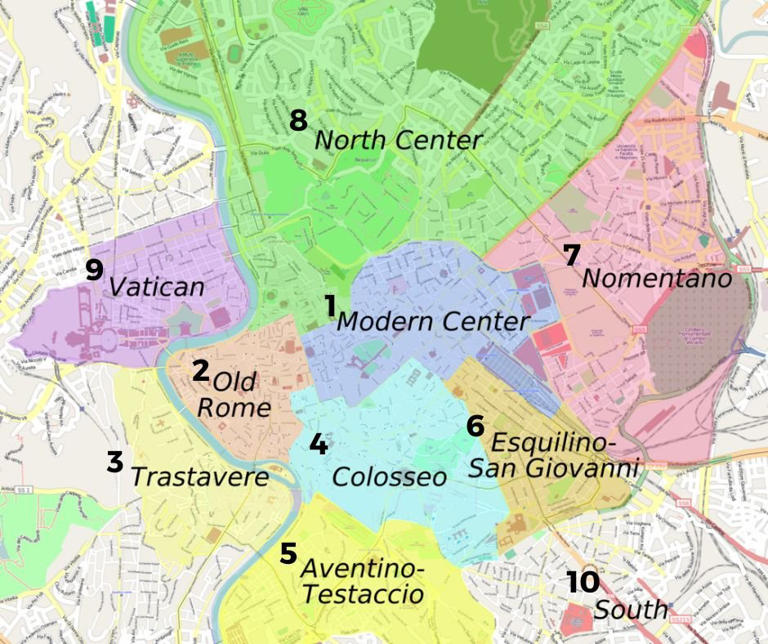
You are using an outdated browser. Please upgrade your browser to improve your experience.
- Restaurants
- Best-of Guides
- MICHELIN Guide Ceremony
- My Favorites
- Subscribe to newsletter
- Booking partnership with OpenTable
- Booking partnership with Resy
- USA - English - USD
- In Photos: Every Three Key Hotel in Italy
The ins and outs of the most outstanding hotels in the country.
Italy Venecia Hotels Travel MICHELIN Keys

The Three Key distinction is the highest hotel honor in The MICHELIN Guide. Earning One Key (107 properties) or Two Keys (31 properties) is difficult enough, but only eight hotels received the Three Key distinction in Italy. These hotels excel in all five criteria used to judge hotels by our Inspectors. Here, we thought it fitting to focus on just one of those criteria — the most photogenic of the five — architecture and interior design. Below, take a look at the interiors and exteriors of each of our eight Three Key hotels in Italy. Read also: Every Three Key hotel in Paris Every Three Key hotel in New York City

Aman Venice
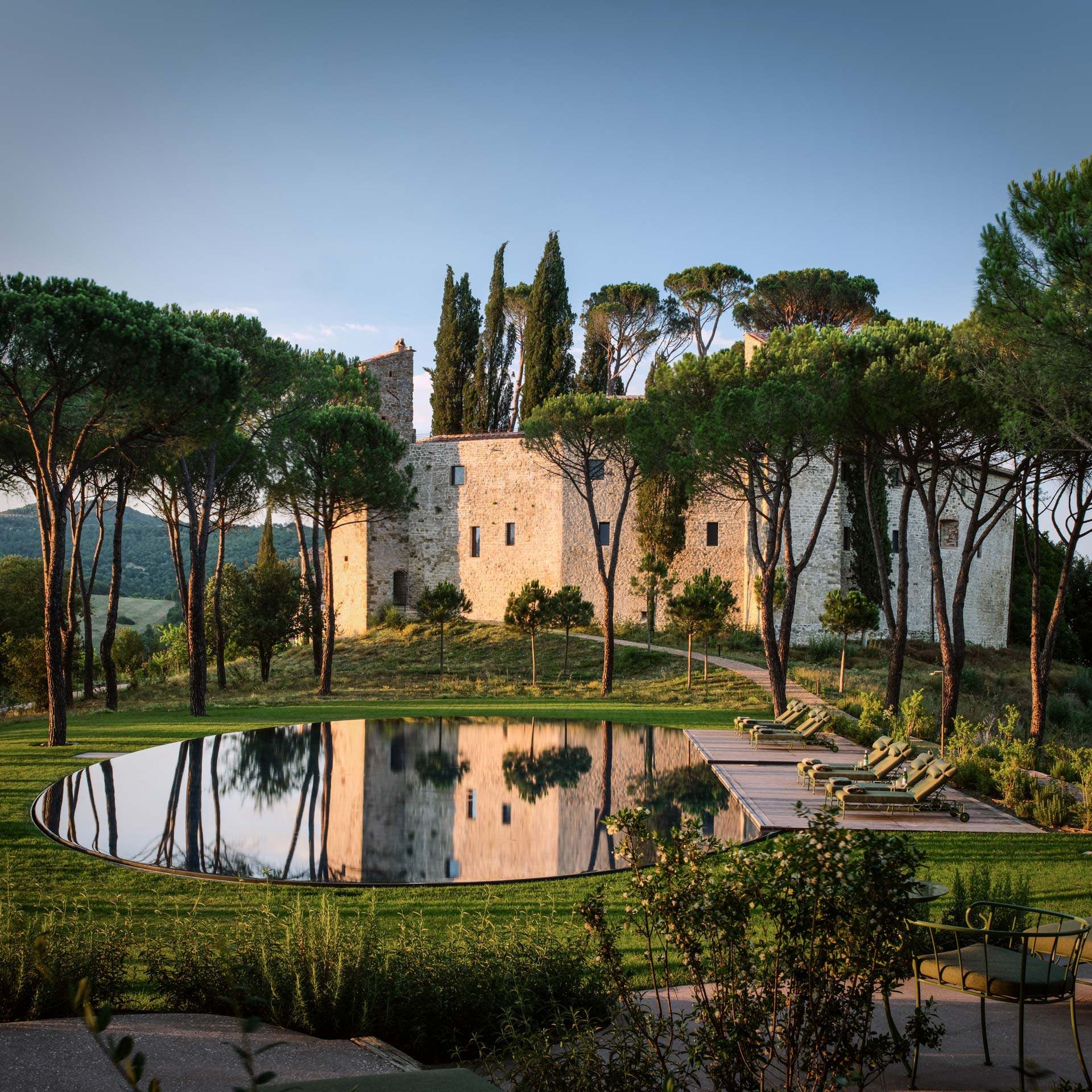
Castello di Reschio

Rosewood Castiglion Del Bosco

JK Place Capri
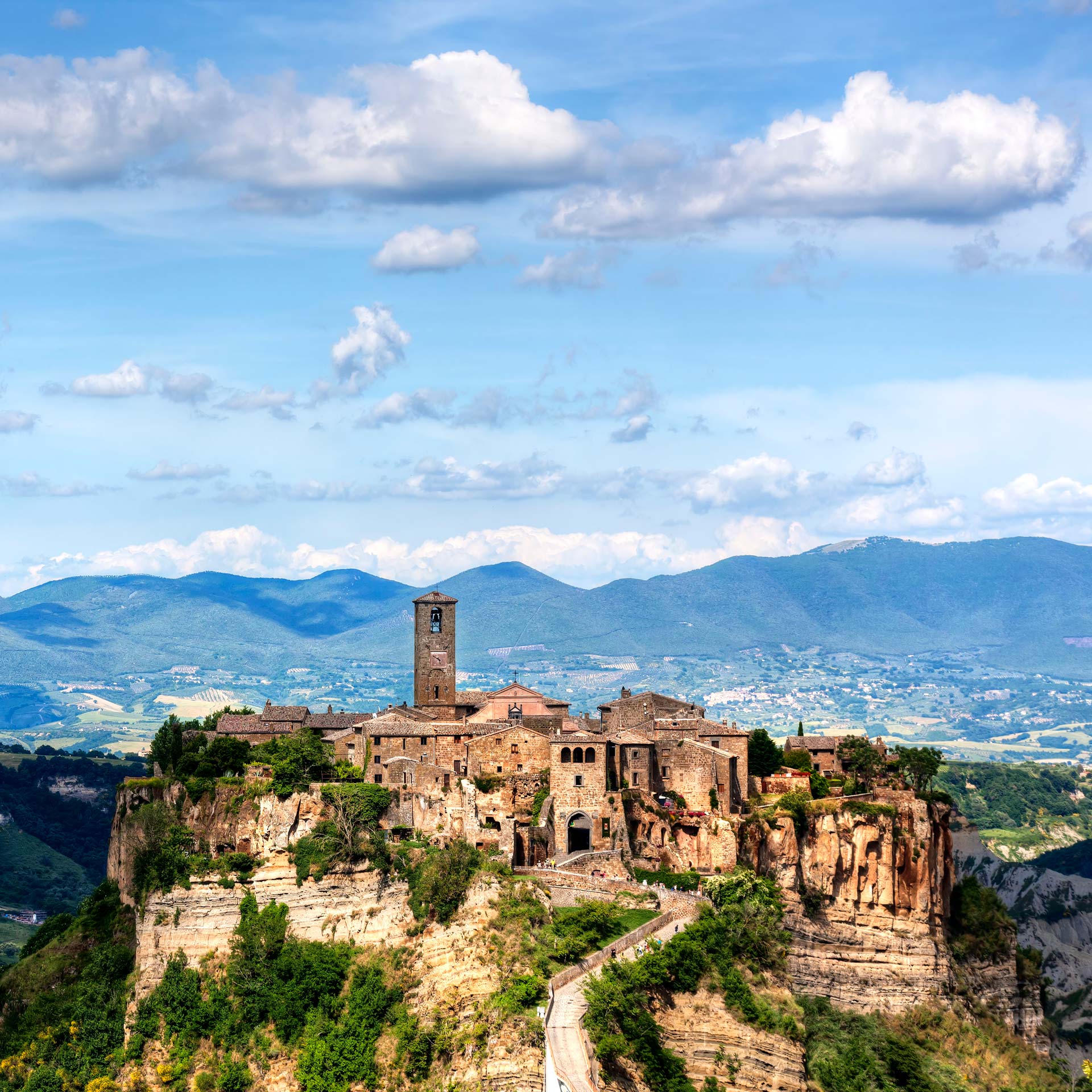
Corte della Maestà

Casa Maria Luigia

Il San Pietro di Positano

Cipriani, A Belmond Hotel
Hero Image: Corte della Maestà — Civita di Bagnoregio

How to Spend a Weekend in Monterey, California
Discover why this slice of California is at the top of so many travelers' bucket lists.

Ronny Chieng's New York - The Perfect Slice and Haute Sushi
The actor and comedian breaks down his West Village staples.

The Farmhouse Hotels of Southern Italy
A bevy of historic country retreats make their presence felt among Italy's first-ever Key hotels.

The Key Decision in Tuscany
The sublime magnificence of a castle or the simple charm of farmhouse? In the end, it comes down to the traveler.
Keep Exploring - Stories we think you will enjoy reading

High Drama in the Seaside Hotels of the Amalfi Coast
After hotel Key announcements in Italy, the Amalfi Coast shows off its distinguished collection.

10 Key Hotels with 10 Rooms or Less in Italy
Our smallest Key hotels across Italy are overflowing with passion and personality.

The First MICHELIN Key Hotels: All the Keys in Italy
The MICHELIN Guide announces top honors for Italian hotels in 2024.

Palazzo Margherita Is Coppola Family Business
A palazzo in a small town in the south of Italy just earned Francis Ford Coppola his latest accolade.

Castello di Reschio Is a Medieval Masterwork
Castello di Reschio will never be mistaken for a Disneyfied fantasyland. This 1,000-year-old Umbrian castle hotel reflects the artistic vision of one man — and it just earned Three MICHELIN Keys.

Tommy Hilfiger's New York is Bold, Classic, and Luxe
The man who dresses America (and the world) indulges in the best Manhattan has to offer.

Time-Tested Country Escapes Just Outside Paris
Seven historic chateaus, remade abbeys, and the spots that have welcomed city escapees for centuries.

Rosewood Kona Village Breathes Luxurious New Life into Legacy
Ten years after a devastating tsunami destroyed it, Kona Village is back and better than ever.

Mikhail Baryshnikov's New York is an Ode to the City's Artists
The icon celebrates and champions the boldfaced names in the city from meat purveyors to Three Star chefs.
MICHELIN Guide

Use the app to find the best restaurants and hotels everywhere
Be the first to get news and update about the michelin guide.
MICHELIN Guide selections
The michelin group.
- Terms of Use
- Privacy Policy
- Legal Notice
Display settings
Customize your experience by easily adjusting display settings for territory, and currency to suit your preferences!
Member privileges
The Plus program provides upgrades and amenities at participating hotels. For this hotel, Plus members will receive:
Non-members can add the privileges at checkout through our 30 day free trial, cancellable at anytime.

- Kindle Store
- Kindle eBooks
Promotions apply when you purchase
These promotions will be applied to this item:
Some promotions may be combined; others are not eligible to be combined with other offers. For details, please see the Terms & Conditions associated with these promotions.

Download the free Kindle app and start reading Kindle books instantly on your smartphone, tablet, or computer - no Kindle device required .
Read instantly on your browser with Kindle for Web.
Using your mobile phone camera - scan the code below and download the Kindle app.

Follow the author

Image Unavailable

- To view this video download Flash Player
Italy travel guide 2024 : Your ultimate travel companion to discovering the hidden treasures of Italy Kindle Edition
- Print length 81 pages
- Language English
- Sticky notes On Kindle Scribe
- Publication date May 4, 2024
- File size 8621 KB
- Page Flip Enabled
- Word Wise Enabled
- Enhanced typesetting Enabled
- See all details

Product details
- ASIN : B0D3D13TN4
- Publication date : May 4, 2024
- Language : English
- File size : 8621 KB
- Text-to-Speech : Enabled
- Screen Reader : Supported
- Enhanced typesetting : Enabled
- X-Ray : Not Enabled
- Word Wise : Enabled
- Sticky notes : On Kindle Scribe
- Print length : 81 pages
About the author
Anne Davis is a seasoned travel expert with a wealth of experience and a passion for helping others create unforgettable travel memories. Armed with a diploma in travel, Anne has dedicated her career to researching and exploring the best destinations and outdoor adventures to ensure that every trip is nothing short of blissful and fulfilling. Her expertise lies in curating personalized itineraries, uncovering hidden gems, and providing valuable insights to travelers seeking unique and enriching experiences. With Anne's guidance, you can trust that your next journey will be a seamless blend of excitement, relaxation, and discovery. Embark on your next adventure with Anne Davis and let her expertise transform your travel dreams into reality.
Customer reviews
Customer Reviews, including Product Star Ratings help customers to learn more about the product and decide whether it is the right product for them.
To calculate the overall star rating and percentage breakdown by star, we don’t use a simple average. Instead, our system considers things like how recent a review is and if the reviewer bought the item on Amazon. It also analyzed reviews to verify trustworthiness.
No customer reviews
- Amazon Newsletter
- About Amazon
- Accessibility
- Sustainability
- Press Center
- Investor Relations
- Amazon Devices
- Amazon Science
- Sell on Amazon
- Sell apps on Amazon
- Supply to Amazon
- Protect & Build Your Brand
- Become an Affiliate
- Become a Delivery Driver
- Start a Package Delivery Business
- Advertise Your Products
- Self-Publish with Us
- Become an Amazon Hub Partner
- › See More Ways to Make Money
- Amazon Visa
- Amazon Store Card
- Amazon Secured Card
- Amazon Business Card
- Shop with Points
- Credit Card Marketplace
- Reload Your Balance
- Amazon Currency Converter
- Your Account
- Your Orders
- Shipping Rates & Policies
- Amazon Prime
- Returns & Replacements
- Manage Your Content and Devices
- Recalls and Product Safety Alerts
- Conditions of Use
- Privacy Notice
- Consumer Health Data Privacy Disclosure
- Your Ads Privacy Choices

IMAGES
VIDEO
COMMENTS
Southern Italy. Tuscany. Sicily. The Italian Lakes. Sardinia. Rome. Campania. Venice. Visit Italy and find the most beautiful places, the best time to visit and authentic food with Lonely Planet.
Bell'Italia! Italy has Europe's richest, craziest culture. After all, this nation is the cradle of European civilization — established by the Roman Empire and carried on by the Roman Catholic Church. As you explore Italy, you'll stand face-to-face with some of the world's most iconic images from this 2,000-year history: Rome's ancient Colosseum and playful Trevi Fountain, Pisa's Leaning ...
Listed among Italy's Most Beautiful Villages, Frosolone is a small paradise surrounded by nature, perched among the central Apennines in the heart of Molise. About 900 metres above sea level, it is enveloped and embraced by vibrant greenery: a pristine, untouched environment home to ancient trees, ponds and lakes, white rocks and shelters.
See below for Italy's unmissable destinations, hotels, Airbnbs, iconic landmarks and attractions, shopping, restaurants, bars, gelato, pasta, pizza, panini, and more—all gathered by Condé Nast ...
With its iconic monuments, timeless landscapes and irresistible food, Italy is one of Europe's most alluring destinations. Its historic cities promise thrilling art and architecture at every turn while its varied coastlines and Alpine heights provide a stunning outdoor playground. In fact, the country is so packed with possibilities that it ...
Plugs: The plugs in Italy are Type C, F, and L. The standard voltage is 230 V, and the standard frequency is 50Hz. I recommend buying a universal adapter (make sure it has surge protection) and using a converter for hairdryers and hot tools. Safety: While Italy is generally a safe destination for solo female travelers, the one thing you need to ...
This site is owned by Apa Digital AG, Bahnhofplatz 6, 8854 Siebnen, Switzerland. Rough Guides® is a trademark owned by Apa Group with its headquarters at 7 Bell Yard London WC2A 2JR, United Kingdom. Plan your visit to Italy: find out where to go and what to do in Italy. Read about itineraries, activities, places to stay and travel essentials.
Whatever the reason, this tiny pocket of northern Italy takes seductiveness to dizzying heights. 4. Amalfi Coast. Best for classic beauty. Italy's most celebrated coastline is a gripping strip: coastal mountains plunge into the piercing blue sea in a prime-time vertical scene of precipitous crags, sun-bleached villages and cliffs rearing up behind.
It is the combination of historically remarkable landmarks and towns, small medieval villages untouched by modern life, and the great diversity of landscapes that make Italy such an interesting destination - but don't forget to spend time absorbing the Italian way of life during your visit. Amalfi / Capri / Lucca.
Follow our guide and you'll be on your way to planning your own trip or choosing the right tour for you and your travel companions. Step 1 - Decide when you want to go and your budget. Step 2 - Do some preliminary research and preparation. Step 3 - Confirm your itinerary.
A Travel Guide to Italy with ️ Travel Itineraries, ️ Top places to visit in 2024, ️ Beautiful coastlines and beaches, and more! Italy. Travel Guide. More than pizza, pasta, and gelato - Italy has impressive mountains, beaches, famous museums, and stunning architecture. Itineraries;
Your Trip to Naples: The Complete Guide. The Top Historic Attractions in Naples. The Complete Guide to Bassano del Grappa, Italy. 48 Hours in Naples: The Ultimate Itinerary. Cinque Terre Guide: Planning Your Trip. Vernazza, Italy: The Complete Guide. Nightlife in the Cinque Terre: Best Bars, Live Music, & More.
The Ultimate Italy Travel Guide - A Local's Guide To Traveling To Italy. March 8, 2023 by Angela Corrias. Even though a popular tourist destination, when planning a trip to Italy, there are several things to keep in mind, especially if it's your first time. Our extensive Italy travel guide will cover the most important steps to organizing ...
Explore the 11 best vacation spots in Italy with in-depth travel guides. Discover the best things to do, when to visit, where to stay, how to get around, and how to save money.
Explore Italy like a local. From iconic attractions to amazing experiences, your journey begins on visititaly.eu 🇮🇹. Tag us and use #visititaly. Show all. Discover great holiday ideas for family holidays, weekends away, short breaks and days out in Italy.
Get information on Italy Travel Guide - Expert Picks for your Vacation hotels, restaurants, entertainment, shopping, sightseeing, and activities. Read the Fodor's reviews, or post your own.
About The World Travel Guide. The World Travel Guide (WTG) is the flagship digital consumer brand within the Columbus Travel Media portfolio. A comprehensive guide to the world's best travel destinations, its print heritage stretches back more than 30 years, with the online portal reaching its 20-year anniversary in 2019.
Cinque Terre. #5 in Best Places to Visit in Italy. Cinque Terre, located on Italy's northern Ligurian coast, is made up of five picturesque towns - Manarola, Monterosso, Vernazza, Corniglia and ...
Italy Travel Guide: Money-Saving Tips. It's very easy to break the bank in Italy, owing to all the historic sites, expensive accommodation, and delicious but pricey restaurants. After all, Italy is one of the most expensive Eurozone countries. You're going to be spending a lot on a visit here. However, there are still lots of ways to reduce ...
Italy With a Twist. From behind-the-scenes Italian cultural tours to twists on classic locations, this is a collection of passion-filled Italy experiences that you won't find anywhere else. Coffee Tour Experience from Florence. Highlights of Tuscany by Sunrise Tour. Florence Full Day Tour - Architecture, History, Flavors.
No COVID-19 rules for Italy travel right now (as of January 2024). Passport needs to be less than 10 years old, valid for 3 months after you leave. Visa-free for 90 days in a 180-day period for tourism and short visits. Make sure your passport gets stamped entering or leaving the Schengen area. Dining. Restaurants charge 1-3 Euros or 10% ...
Luxury Travel in Italy. From planning your entire itinerary with flights, hotels, and transfers to just booking the best tours, guides and VIP access (often to non-public highlights), it pays to ...
You Might Have To Pay an Entry Fee To Visit Venice. At long last, Venice has launched its pilot entry fee program, which will see the lagoon city charging day trippers a €5 fee ($5.36) to enter the city on 29 selected dates (most weekends and holidays) this summer. You are exempt from paying if you are staying the night in the city, but you ...
Bike rental is very affordable and is an enjoyable way to experience the outdoors, get some exercise to make up for all the Italian breakfasts that you eat, and explore Rome. You can find rentals ...
Italy Venecia Hotels Travel MICHELIN Keys. The Three Key distinction is the highest hotel honor in The MICHELIN Guide. Earning One Key (107 properties) or Two Keys (31 properties) is difficult enough, but only eight hotels received the Three Key distinction in Italy. These hotels excel in all five criteria used to judge hotels by our Inspectors.
Also, this travel guide contains the following: - Detailed maps to navigate Italy like a local - Full color pictures to see the amazing sights in Italy first hand. - Money saving tips to experience the best of Italy without breaking the bank - Expert recommendations on where to visit, what to do, and where to stay - Free bonuses inside!!!